Table of Contents

What Is a Book Royalty?
What are typical rates for book royalties, how are book royalties calculated, what is an advance, example of book royalties with an advance.
- Amazon's Self-Publishing "Royalties"
Book Royalties 101: How They Work (Complete Guide)

You’ve probably heard the term “book royalty” get tossed around a lot in publishing.
But what does it really mean?
To put it simply: a book royalty is the amount that a publisher pays an Author for the rights to publish their book.
While simple in concept, this can bring up a host of other questions for first-time Authors:
- Do Authors start earning royalties right away?
- How much can you earn as an Author?
- What’s the typical profit margin on a nonfiction book?
Still, royalties don’t have to be a mystery. In fact, they’re pretty easy to figure out.
In this post, I’ll explain what royalties are, how much Authors can earn, and how you can calculate them.
A book royalty is the amount that a publisher pays an Author in exchange for the rights to publish their book.
Royalties are calculated as a percentage of book sales . For example, an author might earn 7.5% royalties on every paperback sold and 25% on every eBook sold.
Royalties are typical in traditional publishing , where Authors sell the rights to their book to a publisher. In self-publishing , royalties don’t exist because the Author sets the prices and decides on the profit margin.
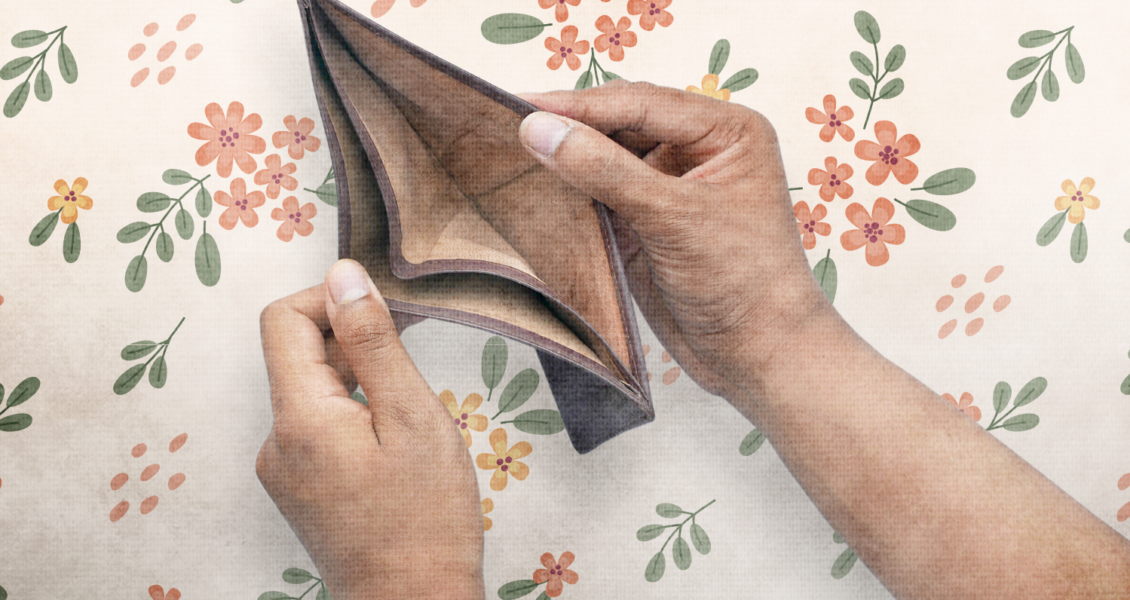
Even though they’re a common way for Authors to make money, royalties don’t always work in an Author’s best interest. That’s because a royalty-based financial model forces publishers to focus entirely on book sales.
Authors have plenty of ways to make money , aside from selling their book. They can give talks, find new clients, consult, launch a product, become a coach, or build a personal brand. Of course, it’s great to have a book that sells a million copies, but that’s an extremely rare event.
For publishers, royalties are the only way to earn money. It doesn’t matter if an Author gives 50 talks a year to packed rooms of thousands. If those talks don’t translate to direct book sales , they have no value for a publisher.
It’s unfortunate, but the royalties model forces publishers into a short-sighted focus when it comes to Authors and the power of books. They only buy books that they think will sell in large numbers, and they have to market them to the largest audience possible.
In the long run, that narrow focus can be an obstacle for Authors who want to use their book to expand their personal brand or achieve other goals.
Royalty rates vary slightly, but on average, you can expect the following from traditional publishers:
- Hardcover sales: 15%
- Trade paperback sales: 7.5%
- Mass-market paperback sales: 5%
- eBook sales: 25%
- Audiobook sales: 25%
Some contracts include graduated royalties. For example, you might earn 10% on the first 5,000 hardcover copies sold, 12% on the next 5,000, and 15% on every copy thereafter.
Most publishers pay royalties based on the retail price of the book. That means if the book retails at $20, and the royalties rate is 5%, you will earn $1 per book sold. These kinds of royalties are often called “list royalties” or “retail royalties.”
Occasionally publishers pay Authors “royalties on net sales.” Publishers sell to book outlets at different prices. For example, a publisher might offer a large wholesale discount to Amazon and a lower discount to an independent bookstore that only buys a few copies.
Royalties on net sales are calculated after factoring in all those price differences and discounts.
It’s generally better for Authors to receive retail royalties since the list price is the highest price a book sells for.
At this point, book royalties might sound great. You’re making money on every sale, and $1 for every book adds up.
But here’s the tricky part: Authors don’t earn royalties right away. You only get them once you’ve earned out your advance.
An advance is a negotiable up-front payment that a publisher pays an Author.
You may have heard about million-dollar advances for hot-topic or in-demand books from major publishers.
Most advances are much more modest. There is no average advance, but six-figure advances are fairly rare outside of the large houses, and 5 figure advances are far more common. And there are even very small advances. Some academic presses might only offer $1,000 for an advance.
That discrepancy exists because an advance is based on the number of books a publisher thinks they can sell. Trendy topics from established authors can sell a lot of books, which means the Author gets a higher advance. Niche topics can sell only a limited amount of books, so there’s not as much money at stake.
There isn’t an average advance amount, but most major publishers don’t offer small ones. If they don’t think a book will sell well enough to earn back six figures, they usually won’t put the effort and resources into publishing it.
Advances aren’t charitable gifts. They are payments against future royalties. That means if a publisher gives you a $100,000 advance, they expect to make more than $100,000 off book sales.
Once an Author gets an advance, they won’t see another cent until their book has sold enough copies to pay the advance back.
In other words, if your book is earning royalties at a rate of $1 per copy, and you got a $100k advance, you’d have to sell more than 100,000 copies before you’d receive royalty payments.
Advances are great if you can get them, but they’re hard to get. Publishers want to know that a book is going to be a sure success before they give an Author an advance.
(Thankfully, if you don’t earn back your advance, the money is still yours to keep. But publishers might be wary of taking on your next book.)
Unless you already have thousands of followers on social media or a highly visible personal brand, it’s hard to break into the world of traditional publishing. Publishers don’t want to take risks, and most Authors don’t have the platform to guarantee 25,000 sales.
If you are lucky enough to score an advance, there are still trade-offs to consider.
You will no longer own the print license for your book, which means you can’t do anything else with the content. If you wanted to break it into smaller chunks and sell it on your website, you couldn’t. If you wanted to turn it into a magazine article, you’d have to get the publisher’s permission.
Then, if the book is a major hit, you’re only going to get a small fraction of the profits. Let’s say you earn back that $100k advance and sell another 200,000 copies. With royalties, you’d earn another $100k.
But if you had self-published that same book, you’d earn 100% on each sale after recouping your production costs . That’s a lot more than 5%.
Instead of $200,000, you could be making millions.
Let’s say you found an agent , wrote a book proposal , got an offer, accepted that offer from a traditional publishing house, negotiated a publishing contract, wrote the book , and the book is ready to launch . Here’s a deeper look at how your book royalties and advances would work.
Your $100,000 advance would likely be split into three payments. You’d get $33.3k when you sign the book contract, $33.3k when you deliver the manuscript and another $33.3k when the book is published.
Your retail royalties are 7.5%. The list price for your book is $20.
That means you’ll earn $1.50 in royalties per book.
Now, let’s say you mobilize your contacts for your book release, and in the first month, you sell 5,000 copies. Most big publishers want 25,000 sales in the first month, but very few books actually sell that well.
(For the record, 5,000 copies a phenomenal launch. In 2019, Scribe’s median title sold 174 copies in the first week. That’s a better target for the “average” nonfiction book. It may not sound like much, but that number creates enough momentum to keep spreading by word of mouth.)
That means in the first month your book earned $7,500 toward your advance.
You have $92,500 to go before you’ll get a royalty check.
If your book keeps selling at a steady pace, it will take you just over 12 months to earn out your advance. Afterward, any royalties are yours.
It’s really hard for a book to sustain its first-month sales for over a year. But let’s say you get some good press and miraculously, sales stay steady. If you continue to sell 5,000 copies every month, at the end of two years, you will have earned:
Your $100,000 advance + 7.5% royalties on another 53,333 books = $180,000
Amazon’s Self-Publishing “Royalties”
When you self-publish, you keep the rights to your works. That means, technically, Amazon’s payments aren’t really “royalties,” even though that’s what Kindle Direct Publishing (KDP) calls them.
You have two royalties options for KDP eBooks: 35% or 70%. The choice for higher royalties might seem obvious, but there are some stipulations involved, like pricing and geographical availability.
You also have the offer to enroll your book in the KDP Select program , which offers a different royalty structure. You can find out more about all those options in this post .
No matter which royalties plan you choose, here’s an important point: Authors on KDP keep complete control over their book’s price and promotions. You have the right to use the book however you want to.
At the end of the day, your book should be working for you, not the other way around. If you can get a large advance and already have a strong following, traditional publishing might be your best option.
But maybe not.
You have to decide whether the trade-offs are worth it.
The Scribe Crew
Read this next.
Choosing Between Narrating Your Own Audiobook or Hiring a Professional
9 Essential Tips for Audiobook Editing
12 Most Important Pieces of Audiobook Recording Equipment

Calculate Book Royalties and Income Potential: A Guide for Authors

Affiliate Disclaimer
As an affiliate, we may earn a commission from qualifying purchases. We get commissions for purchases made through links on this website from Amazon and other third parties.
Calculating book royalties and income potential is an essential aspect of publishing for authors and publishers alike. Royalties are the payments made to the author based on the sales of their book, and understanding how royalties are calculated can help authors determine their potential income and negotiate fair contracts with publishers.
Various factors go into calculating book royalties, such as the book’s format, the retail price, and the royalty rate agreed upon between the author and publisher. For example, an author may receive a higher royalty rate for e-book sales compared to print book sales. Additionally, the retail price of the book can affect the author’s royalties, as a higher retail price may result in higher royalties per sale.
Authors need to have a clear understanding of how book royalties are calculated to ensure they receive fair compensation for their work. By understanding the various factors that go into calculating royalties, authors can better negotiate their contracts and make informed decisions about their publishing options .
Understanding Book Royalties
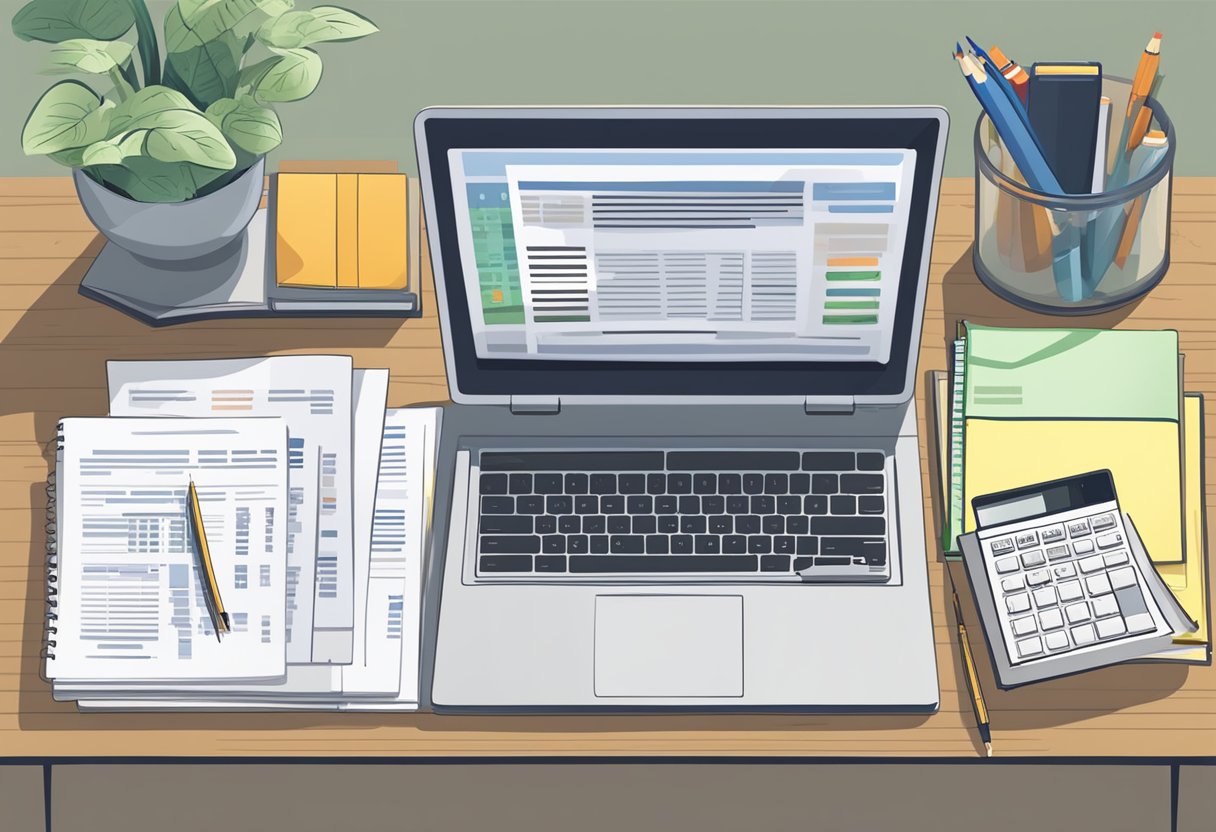
Definition of Royalties
Book royalties are the payments made to an author by a publisher for the use of their work. It is a percentage of the book’s retail price or the publisher’s net receipts from sales. Royalties are paid to the author based on the terms of their contract with the publisher.
The royalty rate is the percentage of the book’s retail price that the author receives. It is usually negotiated between the author and the publisher and can vary depending on various factors such as the author’s experience, the book’s genre, and the publisher’s marketing plans.
Types of Royalties
There are two main types of book royalties:
Gross Royalties: Gross royalties are calculated based on the book’s retail price. For example, if the book has a retail price of $20 and the author’s royalty rate is 10%, the author will receive $2 for each book sold.
Net Royalties: Net royalties are calculated based on the publisher’s net receipts from sales. This means that the author’s royalty rate is applied to the amount of money the publisher receives from the sale of the book after deducting expenses such as printing costs, marketing costs, and distribution costs.
Authors need to understand the different types of royalties and how they are calculated to ensure they receive fair compensation for their work. When negotiating with a publisher, authors should carefully consider the royalty rates and the type of royalties they will receive to maximize their income potential.
Calculating Royalties
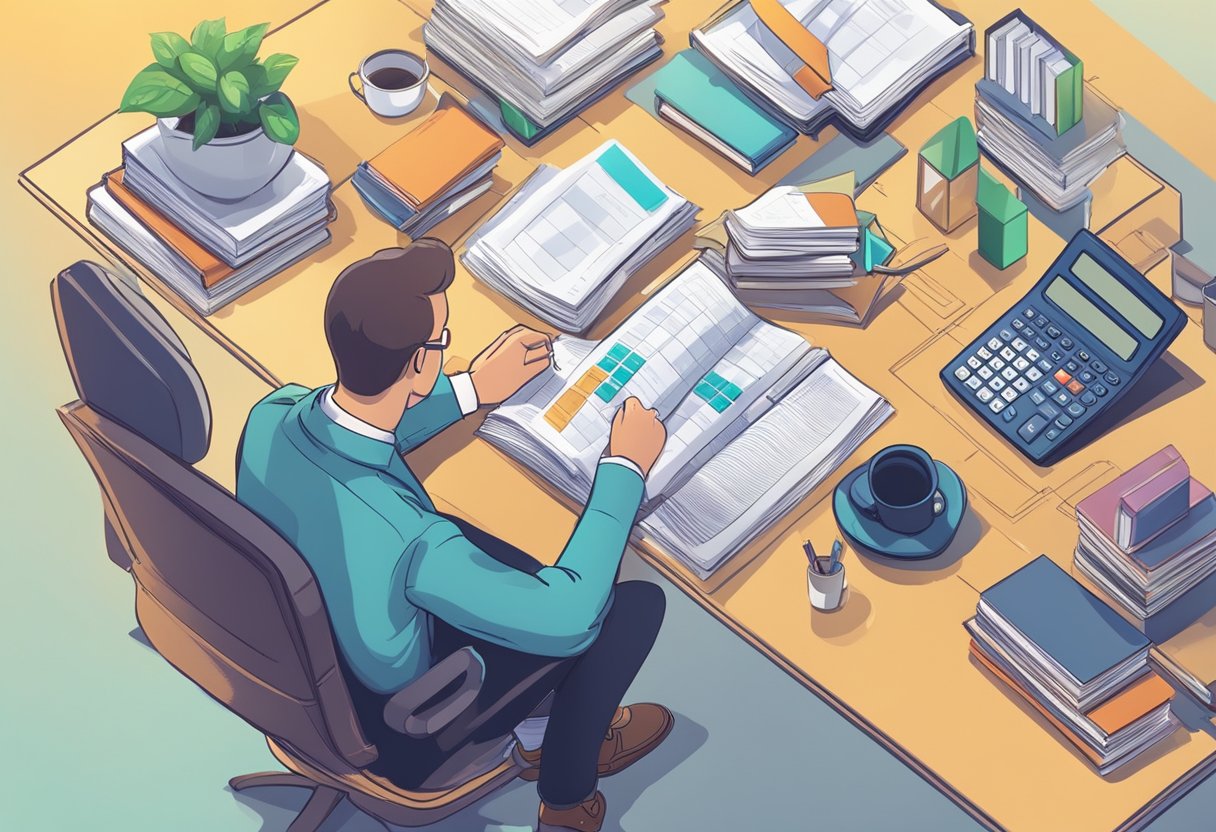
Calculating book royalties can be a complex process, but it is essential for authors to understand how their income potential is determined. The following subsections will explore the various factors that determine royalty rates, how to calculate royalties for different book formats, and the use of a royalties calculator.
Royalty Rate Determinants
Royalty rates are determined by several factors, including the book format, the publisher, and the author’s negotiating power. Print book royalties typically range from 10% to 15% of the book’s retail price, while ebook royalties can range from 25% to 70% of the book’s net sales. Audiobook royalties can range from 5% to 40% of the book’s retail price.
Publishers may offer different royalty rates to authors based on their negotiating power, the book’s sales potential, and the author’s track record. New authors may receive lower royalty rates than established authors, but they may also receive a higher advance payment.
Calculating Royalties for Different Formats
Calculating royalties for different book formats can be challenging, as each format has its own royalty rate and pricing structure. To calculate print book royalties, authors need to know the book’s retail price, the royalty rate, and the number of books sold. For example, if a print book has a retail price of $20, a 10% royalty rate, and sells 1,000 copies, the author would earn $2,000 in royalties.
Calculating ebook royalties is more complicated, as the royalty rate is based on the book’s net sales. Net sales are calculated by subtracting the retailer’s commission and any applicable taxes from the book’s retail price. For example, if an ebook has a retail price of $10, a 70% royalty rate, and the retailer takes a 30% commission, the author would earn $4.90 in royalties for each sale.
Audiobook royalties are typically calculated based on the book’s retail price, but some publishers may offer a royalty rate based on the number of hours sold. Authors should consult their publishing contract to determine how audiobook royalties are calculated.
Using a Royalties Calculator
Calculating book royalties can be time-consuming and complicated, but authors can use a royalties calculator to simplify the process. A royalties calculator allows authors to enter the book’s format, retail price, and royalty rate, and then calculates the author’s earnings based on the number of books sold.
Royalties calculators are available online and can be a valuable tool for authors who want to estimate their income potential. However, authors should keep in mind that the actual royalties earned may vary based on the book’s sales and the publisher’s royalty structure.
In conclusion, understanding how to calculate book royalties is essential for authors who want to maximize their income potential. By understanding the factors that determine royalty rates and using a royalties calculator, authors can estimate their earnings and negotiate favorable publishing contracts.
Income Potential for Authors
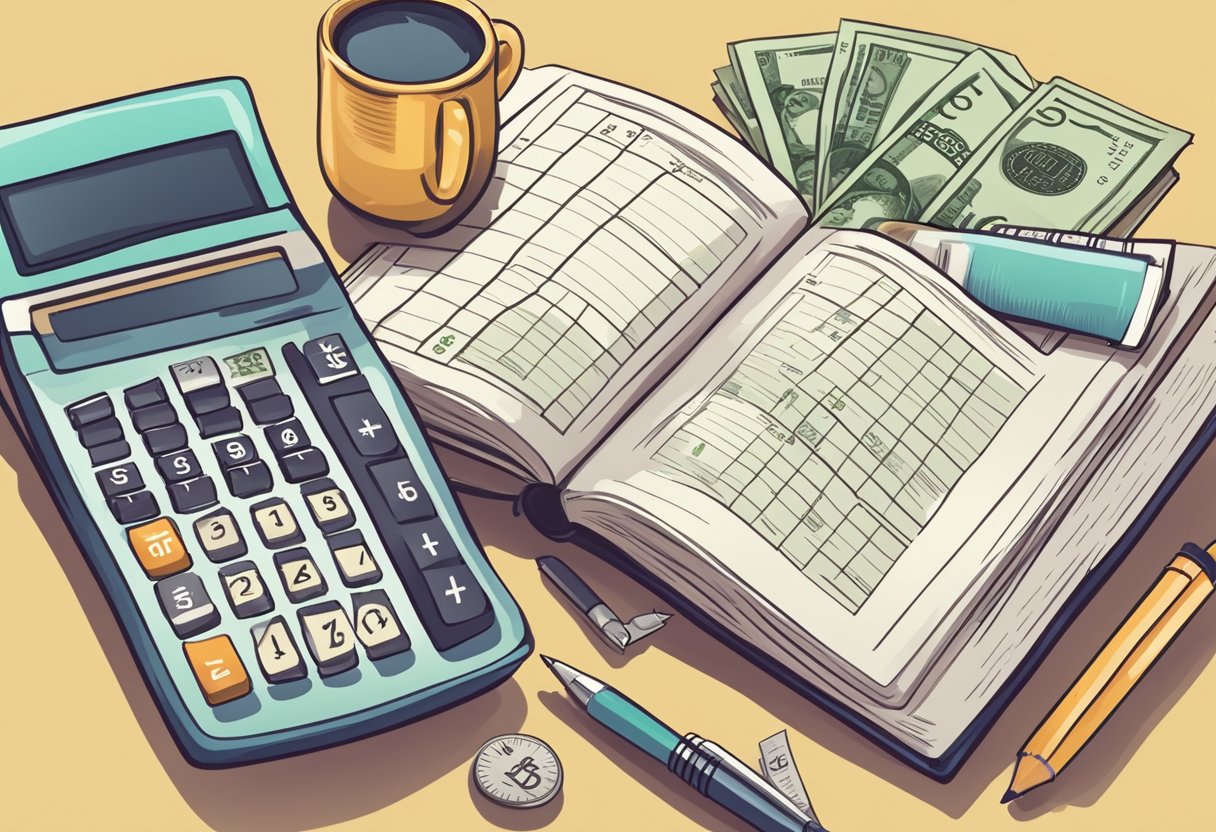
Authors can earn a significant income from book royalties, but the amount they earn depends on several factors. Understanding these factors can help authors maximize their income potential and achieve financial success.
Factors Affecting Income Potential
The following factors can affect an author’s income potential:
- Book price: The price of the book can affect the royalties earned per sale. Higher-priced books typically earn higher royalties, but may also have lower sales volume.
- Sales volume: The number of books sold directly affects an author’s income. The more copies sold, the higher the royalties earned.
- Royalty rate: The percentage of the book’s price that the author receives as royalties can vary based on the publisher, distribution method, and other factors.
- Advance: An advance payment from the publisher can affect an author’s income potential. If the advance is high, the author may need to sell more copies to earn royalties beyond the advance amount.
- Marketing and promotion: Effective marketing and promotion can increase book sales and, therefore, increase royalties earned.
- Book cost: The cost of producing the book can affect the royalties earned per sale. Lower production costs can result in higher royalties.
Maximizing Royalty Earnings
Authors can maximize their royalty earnings by taking the following steps:
- Negotiate a higher royalty rate: Authors can negotiate with publishers to receive a higher percentage of the book’s price as royalties.
- Focus on marketing and promotion: Effective marketing and promotion can increase book sales, leading to higher royalties earned.
- Keep production costs low: Lower production costs can result in higher royalties earned per sale.
- Consider self-publishing: Self-publishing can allow authors to earn a higher percentage of the book’s price as royalties but requires more effort in marketing and promotion.
By understanding the factors that affect income potential and taking steps to maximize royalty earnings, authors can increase their chances of achieving financial success through their writing.
Publishing Platforms and Royalty Structures
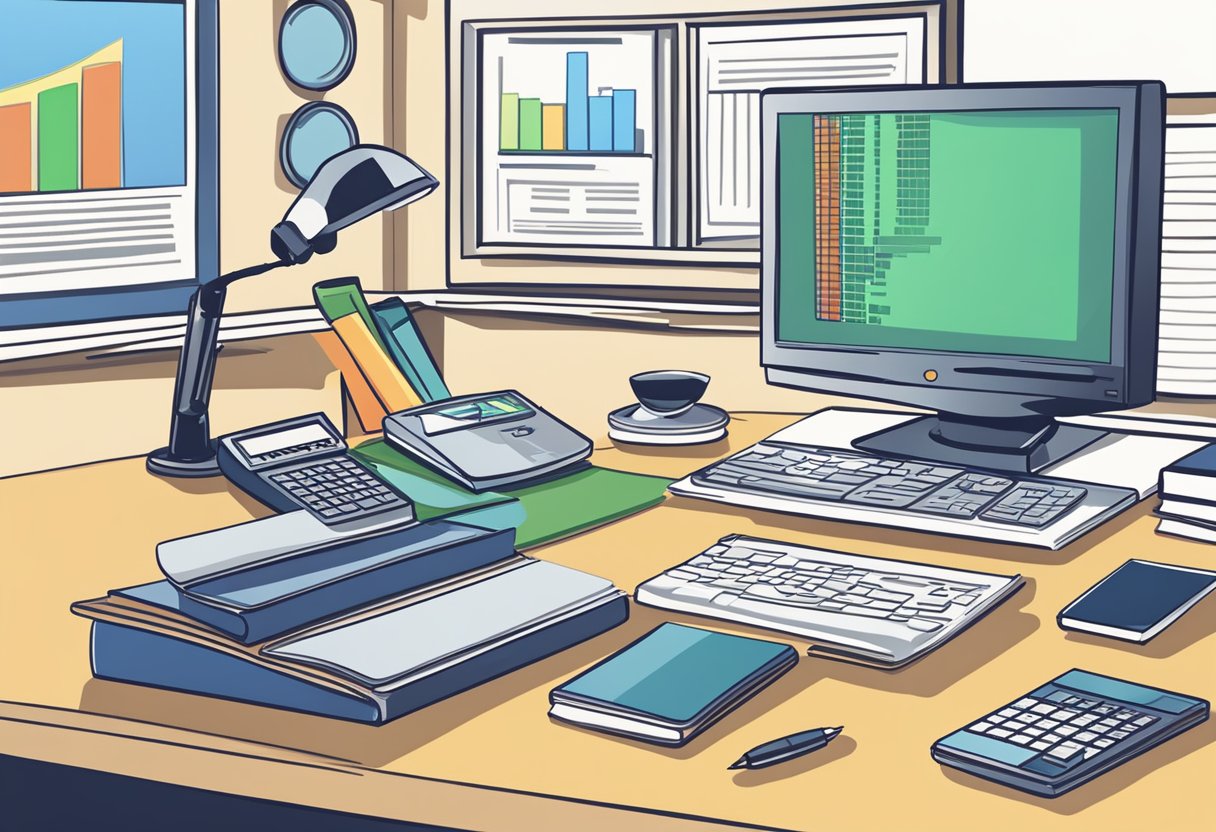
When it comes to publishing, there are two main options available to authors: traditional publishing and self-publishing. Each option offers different royalty structures, and it’s important to understand how they work before deciding which route to take.
Traditional Publishing Royalties
Traditional publishers typically offer authors an advance against royalties, which is paid out in installments. Once the advance has been earned out, authors receive a percentage of the book’s cover price as royalties. The exact percentage varies depending on the publisher and the author’s contract, but it usually ranges from 5-15%.
Self-Publishing Royalties
Self-publishing platforms like Amazon’s KDP Select offer authors a higher percentage of royalties than traditional publishers. Authors can earn up to 70% of the book’s cover price, depending on the platform and the distribution channels they choose.
Ebook and Audiobook Platforms
Ebook and audiobook platforms like Amazon’s Kindle Direct Publishing (KDP) and Audible offer authors a variety of royalty structures. For ebooks, authors can earn up to 70% of the book’s cover price, depending on the platform and the distribution channels they choose. For audiobooks, authors can earn up to 40% of the book’s cover price.
It’s important to note that some platforms offer expanded distribution, which can increase an author’s potential income but may also affect their royalty rates. Authors should carefully consider their options and read the fine print before choosing a platform and distribution channels.
Contractual and Legal Aspects
Understanding the publishing contract.
Before signing a publishing contract, it is essential to have a thorough understanding of its terms and conditions. A publishing contract outlines the rights and responsibilities of both the author and the publisher. It includes details such as the scope of the agreement, the length of the contract, and the royalty rates.
Authors must carefully review the publishing contract and ensure that they understand all the terms and conditions. They should seek the help of a legal expert if they are unsure about any aspect of the contract. It is crucial to ensure that the contract is fair and that it protects the author’s rights.
Negotiating Royalties
Negotiating royalties is a crucial aspect of the publishing contract. Royalties are the percentage of the book’s sales that the author receives. The royalty rates vary depending on the publisher, the author’s experience, and the book’s genre.
Authors should negotiate for the best possible royalty rates. They should research the average royalty rates in their genre and use that information to negotiate with the publisher. It is essential to ensure that the royalty rates are fair and that they provide the author with adequate compensation for their work.
Agents can be helpful in negotiating royalties. They have experience in the publishing industry and can help authors get the best possible deal. However, agents usually charge a commission for their services.
In conclusion, understanding the contractual and legal aspects of the publishing industry is essential for authors. They must carefully review the publishing contract and negotiate for the best possible royalty rates. Seeking the help of a legal expert or an agent can be beneficial in this process.
Pricing and Costs
Determining book price.
The book price is the amount that the author sets for their book. This price is usually set as the retail price or list price of the book. The cover price is the price that the book is sold for in stores. The author must determine the book price based on factors such as the cost of publishing the book, the target audience, and the competition.
One approach to determining book price is to perform market research to determine the average price that books in the same genre and of similar length are selling for. This can help the author set a competitive price that will attract buyers. Another approach is to calculate the cost of producing the book, including printing costs and delivery costs, and then add a markup to determine the book price.
Costs Impacting Royalties
The royalties that an author earns from book sales are impacted by costs such as delivery costs and printing costs. Delivery costs are the costs associated with shipping the book to the retailer or customer. These costs can vary depending on the shipping method, distance, and weight of the book. Printing costs are the costs associated with producing the book, including paper, ink, and binding.
To maximize their royalties, authors must consider these costs when setting their book price. If the book price is too low, the author may not earn enough royalties to cover their costs. If the book price is too high, the author may not attract enough buyers to generate sufficient sales to cover their costs.
In conclusion, pricing and costs are important factors that authors must consider when determining their book prices and calculating their income potential. By performing market research and considering the costs associated with producing and delivering their book, authors can set a competitive price that maximizes their royalties.
Distribution and Retail Channels
When it comes to book royalties and income potential, understanding the distribution and retail channels is crucial. This section will cover the various distribution channels available to authors and publishers, as well as retailer and wholesaler considerations.
Online and Physical Distribution
One of the most common distribution channels for authors and publishers is online retailers such as Amazon, Barnes & Noble, and Kobo. These retailers offer a wide reach and easy access for readers to purchase books. Additionally, they offer various royalty rates and marketing opportunities for authors.
Physical distribution channels include bookstores and libraries. Bookstores offer the advantage of in-person browsing and the ability to host author events. Libraries, on the other hand, offer the advantage of free access to readers and the potential for increased exposure for authors.
Retailer and Wholesaler Considerations
When working with retailers and wholesalers, authors and publishers must consider the wholesale discount offered. This discount is the percentage off the list price that retailers and wholesalers pay for the book. A higher discount may lead to increased sales but may also result in lower royalties for the author.
Authors and publishers must also consider the distribution channels offered by retailers and wholesalers. Some may offer exclusive distribution deals, while others may offer a wider reach through multiple distribution channels.
In conclusion, understanding the various distribution and retail channels available is crucial for authors and publishers when considering book royalties and income potential. By carefully considering the wholesale discount and distribution channels offered, authors and publishers can make informed decisions to maximize their earnings.
Book Formats and Specifications
When it comes to publishing a book, there are various formats and specifications to consider. This section will cover the most common formats and specifications for books.
Print Options
Print options for books include hardcover and paperback formats. Hardcover books are typically more expensive to produce but offer a higher quality and durability. Paperback books are cheaper to produce and are more commonly used for mass-market books. When it comes to print options, the author should consider the target audience and budget.
The color and trim size of the book are also important considerations. Color printing is more expensive than black-and-white printing, but it can enhance the visual appeal of the book. The trim size of the book refers to its physical dimensions and can affect the price of printing and shipping.
Ebook and Audiobook Specifications
Ebooks and audiobooks are becoming increasingly popular formats for books. Ebook specifications include file size, format, and compatibility with various devices. The author should ensure that the ebook is formatted correctly and optimized for different devices.
Audiobook specifications include file format and length. The author should consider the length of the book when creating an audiobook and ensure that it is compatible with different platforms.
In conclusion, understanding the different book formats and specifications is essential for authors who want to maximize their income potential. By considering the target audience, budget, and technical requirements, authors can make informed decisions about the format of their book.
Marketing and Promotion Strategies
Building author brand.
Building a strong author brand is crucial for long-term success in the publishing industry. It involves creating a unique identity that readers can associate with the author and their work. Effective branding can increase the author’s visibility, credibility, and sales potential.
One of the most important elements of author branding is the cover design . A professional and eye-catching cover can significantly increase the book’s appeal to potential readers. The cover should be designed to reflect the book’s genre and target audience.
Another aspect of author branding is establishing a strong online presence. This can be achieved through social media platforms, author websites, and blog posts . By regularly engaging with readers and other authors, the author can build a community and increase their visibility.
Launch and Sales Momentum
The launch of a book can significantly impact its sales potential. A successful launch can generate buzz and momentum that can carry the book to long-term success. Effective marketing and promotion strategies can help create a successful launch.
One strategy is to offer pre-orders before the book’s release date. This can help generate early sales and build anticipation for the book’s release. Another strategy is to offer a limited-time discount or bonus for early buyers.
Effective promotion strategies can also help increase the book’s visibility. This can include book reviews, author interviews, book signings, and social media ads. By reaching out to potential readers through multiple channels, the author can increase their chances of success.
Overall, effective marketing and promotion strategies are essential for maximizing an author’s revenue potential. By building a strong author brand and creating a successful launch, an author can increase their visibility and sales potential in the competitive publishing industry.
Financial Management for Authors
As an author, it is crucial to have a good understanding of financial management to ensure financial success. This section will cover two key aspects of financial management for authors: budgeting and investment, and tracking sales and payments.
Budgeting and Investment
Budgeting is an essential part of financial management for authors. It involves creating a plan for how to allocate the income from book sales to cover expenses and maximize profit. One way to budget is to create a spreadsheet that lists all the expected expenses, such as editing, cover design, and marketing costs. The author should also consider setting aside a portion of their income for investment in future projects or retirement.
Investment is another important aspect of financial management for authors. It involves putting money into a project or asset with the expectation of generating a profit in the future. For authors, investing in themselves by improving their writing skills or attending writing conferences can lead to increased revenue and success.
Tracking Sales and Payments
Tracking sales and payments is critical for authors to ensure they receive the correct amount of revenue and to identify any discrepancies. One way to track sales is to use a spreadsheet that lists the number of books sold, the revenue generated, and any associated expenses. Authors should also keep track of payment schedules and ensure they receive payment on time.
To simplify the payment process, authors can use online platforms such as PayPal or Stripe to receive payments from book sales. These platforms offer secure payment processing and are easy to use.
In conclusion, financial management is an essential aspect of an author’s success. By budgeting and investing wisely, and tracking sales and payments, authors can maximize their income potential and achieve their financial goals.
Author’s Experience and Credentials
Impact of author’s background.
An author’s background and experience can play a significant role in determining their book royalties and income potential. Publishers often consider an author’s credentials when deciding on the advance and royalty rates. Credentials such as academic degrees, awards, and previous publications can increase an author’s value in the eyes of publishers and readers.
For instance, if an author has a Ph.D. in a relevant field, they are more likely to be perceived as an expert in their subject matter. This can lead to higher advances and royalties as publishers are willing to pay more for books that are written by experts in their field.
Leveraging Experience for Better Deals
An author’s experience can also be leveraged to negotiate better deals with publishers. If an author has a proven track record of successful book sales, they can use this as leverage to negotiate higher royalty rates and better contract terms.
For example, if an author has previously published a book that sold well, they can use this as evidence of their ability to write successful books. This can lead to publishers offering higher advances and better royalty rates for the author’s next book.
Incentives can also be negotiated based on an author’s experience. For instance, if an author has a large following on social media, they can negotiate for more marketing support from the publisher to tap into their existing fan base.
In conclusion, an author’s experience and credentials can have a significant impact on their book royalties and income potential. By leveraging their experience and negotiating skills, authors can secure better deals with publishers and increase their chances of success in the publishing industry.
Latest posts

Achieving Your Word Count Goals with Daily Sprints: A Guide
Many writers struggle with meeting their word count goals, whether it’s for a school assignment, a blog post, or a novel. It can be frustrating to stare at a blank page or screen and feel like you’re not making progress. However, there is a technique that can help you achieve your word count goals and…

Beat Burnout: Setting Reasonable Writing Expectations
Writing can be a fulfilling and rewarding experience, but it can also be exhausting and draining. Writing burnout is a real phenomenon that can affect anyone, from professional writers to students. When writers push themselves too hard, they can experience stress, lack of motivation, and even physical symptoms like headaches and fatigue. To avoid burnout,…

Dealing with Criticism and Rejection as an Author: Tips and Strategies
As an author, receiving criticism and rejection is an inevitable part of the writing process. It can be difficult to navigate the emotions that come with having your work scrutinized, but it’s important to remember that criticism and rejection are not personal attacks. Instead, they are opportunities for growth and improvement. One way to deal…

Demystifying book royalties: A comprehensive guide for authors
21 September 2023
Magda Wojcik
Book royalties are payments that authors receive based on a percentage of the sales of their books, typically calculated as a percentage of the cover price or the publisher’s net revenue. With traditional publishers, book royalties are a percentage of the book’s sales revenue paid to the author, typically ranging from 5% to 15%. In self-publishing, authors retain a larger share of the royalties, often receiving 35% to 70% of the book’s list price when using platforms like Amazon KDP.
Book royalties — what are they and how do they work? This comprehensive guide aims to demystify the complicated landscape of book royalties, providing the clarity you need to navigate this essential aspect of your writing career. This post breaks down the complexities of book royalties so you can decide how to publish your book. It will also explore various types of royalties, dive into the factors that influence your earnings and offer practical insights on maximising your income as an author.
What are book royalties?
How do book royalties work.
- What factors impact book royalties?
What are the book royalties under different publishing models?
How can professional editing improve your chances of earning book royalties.
Book royalties are the financial compensation you receive from selling your books. When you publish a book, you enter into a contractual agreement with a publisher or a self-publishing platform. This agreement outlines how your compensation for each copy of the book sold. The concept behind book royalties is straightforward: you earn a percentage of the revenue generated from each book sale. This percentage is usually a fraction of the book’s retail price or the publisher’s net revenue, depending on the terms of the contract.
Book royalties work compensate you for the sales of your books. The process varies depending on the type of book, the publishing method (traditional or self-publishing) and the publishing contract terms. Here is a simplified overview of how book royalties work:
Royalty percentage
The royalty percentage represents the share of revenue you receive for each book sale. This publishing contract determines the percentage. In traditional publishing, it ranges from 5% to 15% or more, depending on various factors, including your prominence as a writer and the book’s format. When readers purchase a book copy, this percentage is applied to the book’s retail price or the publisher’s net revenue to determine the earnings per sale. This allows you to benefit from the commercial success of your literary works directly.
Book price vs net revenue
Choosing between book price and net revenue as the basis for calculating book royalties is critical in publishing contracts. When royalties are calculated based on the book price, you earn a fixed percentage of the book’s retail price, irrespective of discounts or deductions. In contrast, calculating royalties based on net revenue means your percentage is applied to the publisher’s earnings after subtracting various costs, such as discounts, returns, and distribution fees. The book price method offers straightforward and predictable royalties tied to the cover price. At the same time, the net revenue approach can result in lower royalties as it accounts for the publisher’s actual income after expenses.
Sales reporting
Sales reporting is the process through which publishers track and document the sales of books, providing you with detailed royalty statements. These statements include information about the number of copies sold, the royalty rate applied, any deductions such as returns or discounts and the earnings accrued by you during a specific reporting period. Publishers are responsible for compiling and sharing these statements with you to ensure transparency and accountability in the royalty payment process.
Royalty payments
Royalty payments are the monetary compensation you receive from publishers based on the sales of your books. These payments represent your share of the revenue generated by book sales, calculated according to the terms outlined in the publishing contract. Royalty payments are made regularly, often quarterly or semi-annually, based on the number of copies sold and the applicable royalty rate.
Advances in publishing refer to upfront payments made to you by publishers when they sign a book contract. These payments are a financial advance against your future book royalties. You receive this lump sum before the book is published, providing you with immediate income during the writing and production process. Once the book is published and royalties start coming in, your earned royalties are used to ‘repay’ the advance. You receive additional royalty payments once your earned royalties exceed the advance amount. Advances vary widely depending on your reputation, the book’s potential marketability, and the publisher’s budget.
Ebook and print-on-demand royalties
Ebook and print-on-demand (POD) royalties represent the compensation you receive for sales of digital ebooks and print copies produced on demand. These royalties often differ from traditional print book royalties. Ebook royalties are calculated based on a percentage of the ebook’s sale price. You may earn a higher percentage for ebooks compared to print editions. On the other hand, POD royalties are often based on the net revenue earned from each copy printed, considering factors like printing costs and distribution fees.
What factors impact your book royalties?
Several factors can significantly impact your book royalties. These factors include:
- Publishing method : Whether you choose traditional, self-publishing, or hybrid publishing, your royalty rates and earnings will be affected.
- Book format : The book’s format, such as hardcover, paperback, ebook or audiobook, can lead to varying royalty rates.
- Pricing strategy : The price at which the book is sold to readers can directly influence royalty earnings.
- Royalty rate : The percentage of each sale to the author can vary widely based on publishing method and negotiation.
- Distribution channels : The choice of distribution channels, including online retailers, brick-and-mortar bookstores, and international markets, can impact royalties.
- Publisher’s policies : Traditional publishers often have specific policies on royalties, advances, and sales reporting that affect author earnings.
- Sales volume : The number of copies sold significantly impacts total royalty earnings.
- Return policy : Whether books are returnable by retailers can affect royalty calculations, as returns may result in deductions from total sales.
- Author ’s reputation : Established authors with a strong readership and track record may have more negotiating power for higher royalties.
- Genre and market : The genre and target market of the book can influence sales and, consequently, royalty earnings.
- International sales : You may earn different royalties for sales in international markets due to exchange rates and distribution agreements.
- Subsidiary rights : Income from subsidiary rights, such as film adaptations, audiobooks, and foreign translations, can impact overall earnings.
- Advance payments : In traditional publishing, your advance against future royalties affects initial earnings.
Traditional publishing

Royalties offered by traditional publishers vary depending on the format or medium of the book. On average, the author’s royalties from paperback sales equate to 5–7%, hardcover — 15%, and ebook and audiobook — 25%. This range is significantly lower than the 35–70% range offered by the self-publishing platforms (discussed later in this post).
Self-publishing

Unlike traditional publishing , self-publishing offers the highest royalties, the fastest route to market, and complete control and ownership rights. Royalties offered by the PODs may vary depending on the book’s price, format, or country of distribution, ranging between 35% and 70%.
- Amazon KDP : 70% for books priced $2.99–9.99, 35% if below $2.99 or above $9.99.
- Apple Books : 70% royalties.
- Google Play Books : 70% royalties for books sold in over sixty partner countries and 52% in remaining countries.
- Barnes & Noble : 70% royalties for ebooks, 55% for printed books.
Professional editing services play a pivotal role in enhancing the quality and marketability of a book. Editing can significantly improve the quality and clarity of a text. This is supported by research results. For instance, in this study , 96% of authors who made of over $100,000 on their books chose professional editing services.
- At the initial stage, developmental editing focuses on the big picture — plot structure, character development, pacing and overall narrative coherence. A developmental editor provides valuable insights and suggestions to strengthen the story’s foundation.
- Line editing digs deeper into the prose itself. It seeks to enhance the writing style, language flow, and readability. This type of editing addresses sentence structure and word choice and ensures the text is engaging and impactful.
- Copyediting sharpens the manuscript’s details. Editors scrutinise grammar, punctuation, spelling, and consistency in formatting. It ensures the manuscript adheres to language conventions and maintains a polished appearance.
- Proofreading is the final step, focusing on eliminating any remaining errors or typos. It ensures the manuscript is pristine and ready for publication.
Final thoughts
In sum, as an author, you must grasp the significance of publishing choices, pricing strategies and the impact of sales volume on your earnings. Whether you choose traditional publishing or self-publishing, knowledge of book royalties empowers you to make informed decisions that align with your goals.
If you are getting ready to publish your manuscript, ask me for a free sample edit (and remember to use my early bird discount ). I am an experienced editor working with non-fiction, academic and business books.
I'm a freelance editor and indexer with a PhD in literary history. I work with non-fiction, academic and business texts.
Memberships

Incorporated in England and Wales. Company number: 10809565. Registered office: Kemp House 152-160 City Road, London, England, EC1V 2NX
© MWEditing 2023
Book Publishing Royalties: A Comprehensive Guide

Book royalties are a common term in the publishing world, yet for many, they remain a source of mystery. What exactly are book royalties, and how do they work? In this comprehensive guide, we will unravel the intricacies of book royalties, exploring their meaning, typical rates, calculation methods, and the impact of advances.
Understanding Book Royalties:
In essence, a book royalty is the compensation that a publisher pays an author for the rights to publish their book. While this definition is straightforward, it raises various questions, especially for new authors:
Do authors start earning royalties immediately?
How much can authors earn from royalties?
What is the standard profit margin for books?
Despite the initial complexity, book royalties can be demystified, providing authors with a clear understanding of how royalties work. This guide aims to clarify the concept of book royalties, offering insights into earning potential and calculation methods.
Deciphering Book Royalties:
What is a Book Royalty? A book royalty represents the compensation a publisher pays to an author for the rights to publish their book. These royalties are usually calculated as a percentage of book sales. For example, an author may receive 7.5% royalties on each paperback sale and 25% on each eBook sold.
While royalties are the standard in traditional publishing, self-publishing operates differently. In self-publishing, authors control pricing and profit margins, eliminating the concept of standardized royalties. Still, self-published books, which primarily sell in only an eBook format, do not come with advances and often have lower prices due to overcrowding in the eBook landscape.
Royalties vs. Alternative Income Streams:
While royalties are a common source of income for authors, they don't solely encompass how authors can earn money. Authors have diverse revenue streams, such as book advances, film/TV licensing, foreign rights, audiobooks, speaking engagements, consulting, product launches, coaching, or building personal brands. The narrow focus on book sales associated with royalties can be limiting for publishers but may not align with an author's broader financial interests.
Standard Book Royalty Rates:
Typical royalty rates may vary slightly, but some industry standards exist for various formats:
Hardcover Sales: Around 15%.
Trade Paperback Sales: Approximately 7.5%.
Mass-Market Paperback Sales: Roughly 5%.
eBook Sales: Typically 25%.
Audiobook Sales: Averaging 25%.
Some contracts include graduated royalties, where rates vary based on sales thresholds. For example, an author might earn 10% on the first 5,000 hardcover copies sold, 12.5% on the next 5,000, and 15% on all copies thereafter.
Calculating Book Royalties:
Many publishers determine royalties based on the book's retail price. This means that if a book retails for $20, and the royalty rate is 5%, the author earns $1 per book sold. These are often called "list royalties" or "retail royalties."
In some cases, publishers pay authors "royalties on net sales." As publishers sell books to various outlets at different prices, this method considers price discrepancies and discounts. Authors generally prefer retail royalties as they are based on the book's highest selling price.
The Role of Advances:
Advances are an integral part of the book publishing process and offer a higher level of financial security to authors, along with financial buy-in from publishers. An advance is a negotiable upfront payment made by a publisher to an author. Advances are not gifts but payments against future royalties, signifying the publisher's commitment to the author's work.
Advances can vary significantly. While there's no fixed average, six-figure+ advances are more common in major publishing houses, while smaller presses may offer lower advances. The advance amount depends on the publisher's estimation of potential book sales.
Advances are very enticing to authors, though they do come with trade-offs. Authors allow publishers to hold print and eBook licenses for their books (based on a term of license or term of copyright), somewhat limiting content usage. Authors receive a portion of the profits if the book earns its advance back in book copies sold or becomes a bestseller. In self-publishing, authors retain more extensive control of their earnings, but these earnings are much smaller when compared to the other sales revenue tributaries in traditional publishing. Self-published books tend to sell primarily in only one format (eBook) and come with a much lower price tag to compete among a glut of other self-published material. Furthermore, it is harder to license foreign rights, audio rights, film/TV rights, and merchandising rights for self-published titles than when a traditional publisher is in the picture.
An Example of Book Royalties with an Advance:
Suppose an author secures a $100,000 advance divided into three payments. Retail royalties are 7.5%, and the book costs $20. Earning the advance could take around a year if the author sells 5,000 copies in the first month. Afterward, any royalties become the author's.
Amazon's Self-Publishing "Royalties":
Authors retain their rights and control pricing and promotions in self-publishing, but self-publishing amounts to having a lot of nothing —rather than a little bit of something in traditional publishing. Amazon's Kindle Direct Publishing (KDP) offers two royalty options: 35% or 70%. KDP authors have the flexibility to use their books as they see fit. This does come with many drawbacks, however. As discussed before, eBooks are merely one sales revenue tributary (resulting in a financial portfolio that lacks diversity) and tend to be priced much lower, so it requires selling many eBooks in a "Walmart" or "McDonald’s" effect to get the numbers to work well for the author. Furthermore, eBook self-publishing requires being a marketing guru to get a self-published book to stand out, and every self-published book requires that an author put up their own time and money—and be ready to weather the storm every time Amazon changes its financial arrangements with authors.
Understanding book royalties is pivotal for authors considering traditional or self-publishing. Book advances offer much greater financial security to authors. While self-publishing can be attractive, authors should carefully consider the pros and cons. Authors should decide how their books work, ensuring their financial interests align with their broader goals and vision.

Ebooks, Publishing, and Everything in Between
- Downloads & Pricing
- Advertising
- Book Royalties: What They Are and How to Earn the Best Rates
- on Mar 14, 2024
- in Digital Publishing , Ebook Marketing and Sales
- Last update: March 14th, 2024
As a new author looking to publish your first book, you’ll encounter a lot of decisions and processes. Whether you choose self-publishing or you want a traditional book deal, one of the most important things to understand in this process is book royalties and how they work. This will affect your decision regarding which publishing method to choose, as well as the format of the book you want to publish.
To help you make such decisions, we will discuss in this article everything you need to know about book royalties, and how to get the highest rates in today’s publishing industry.
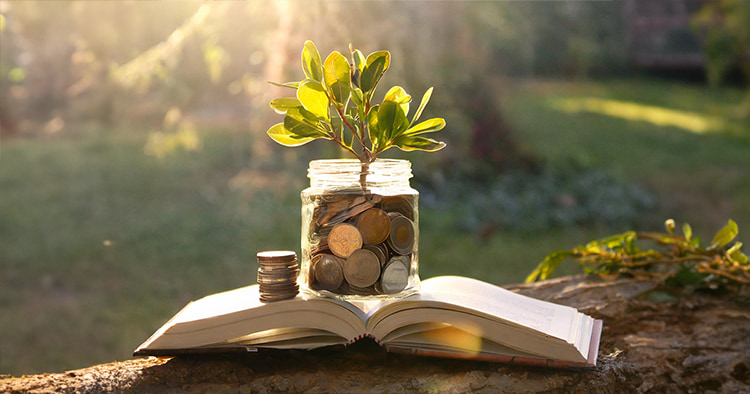
What Are Book Royalties?
The term “book royalties”–in both self-publishing and traditional publishing–refers to what authors earn from every copy of their books that gets sold. This royalty is calculated as a percentage of the profits from these book sales , and it differs significantly depending on the chosen publishing model. This percentage is paid to the authors as compensation in exchange for the rights to sell their books.
In the case of traditional publishing, this percentage is paid by the publisher to the author after the advances are covered. As for self-publishing, it’s paid for by the digital publishing platform that the author chooses.
Read more: Self-Publishing vs Traditional Publishing: Which Route Should You Choose?
How Do Book Royalties Work?
The way book royalties work differs hugely depending on the publishing model you choose. Whether you go for traditional publishing or self-publishing, each of these approaches operates differently when it comes to compensating authors for their work.
How Book Royalties Work in Traditional Publishing
When an author signs a contract with a traditional publisher, they usually negotiate and agree upon specific royalty rates and an advance first. This advance is an up-front payment that the publisher pays the author against future royalties ; the author doesn’t get any royalties until enough sales are made to cover the advances. Once the advance is covered, the publisher calculates and pays the royalty dues, usually every six months –but this can differ from one publisher to another.
With that said, sometimes authors have the option to pay back their advances and receive higher royalty rates . For example, an author might choose to pay back their advance (or a portion of it) to increase their royalty rate from 10% to 15%. This decision involves a trade-off as authors sacrifice immediate income (the advance) for potentially higher long-term earnings (through increased royalties). However, this can be a risky move since there is no guarantee that the future royalties will surpass the paid-back advance or that they’ll earn more money afterward.
Types of Royalties in Traditional Publishing
It is important to know that there are two main types of royalties that traditional publishers pay authors. The first is known as retail royalties (or list royalties ), and that is a percentage of the retail price of a book that authors receive with every copy that is sold. This is the most common type, and it is usually paid every 3 months .
There is also another type known as royalties on net sales , which is a percentage of the publisher’s net sales of a book. This percentage is calculated after accounting for the discounts given to retail stores by the publisher. This type of royalties is usually much lower than the retail royalties .
Generally speaking, authors benefit more from retail royalties as the list price is the highest amount at which a book is sold. With that said, it is important to note that royalties on net sales can be more beneficial in some cases, such as when a book is sold at a huge discount.
How Royalties Work in Self-Publishing
In self-publishing, the concept of royalties differs significantly because advance payments are not provided . Instead, the author benefits from higher royalty rates from each book sale . Authors typically receive these royalties once a month , provided they’ve reached the agreed-upon sales threshold during that month for the publishing platform to process the payment.
How Much Royalties Do Authors Get?
You might be thinking that since the author made the maximum effort in bringing their book to life, they would be able to reap all the profits. Unfortunately, this isn’t the case, neither in traditional nor in self-publishing. Here is a more detailed look at how much royalties authors get in both of these publishing methods.
AverageTraditional Publishing Royalties
The publishing royalty, or the percentage of revenue paid to authors, can vary depending on the publisher and book format. Even though many publishers offer standard royalty rates, this percentage can be negotiable , especially if you are an established author or have previously published a best-selling book. So whether you have an agent or you have signed directly with a publisher, make sure you’re getting the highest possible royalties.
As for the average book royalties in traditional publishing, they are usually as follows:
- 10% – 15% on hardcover sales
- 5% – 7.5% on paperback sales
- Around 25% on ebook sales
- Around 25% on audiobook sales
Let’s look at an example to better understand what these rates look like in real life, and imagine how much revenue you can get from your traditionally published book. Let’s say the paperback edition of your book is sold for $10 and you have signed a contract with 5% royalties . This means you get 50 cents for each book sold . So for each 1000 thousand copies sold , you’ll earn $500 in royalties .
Some publishers also choose to offer their authors graduated royalties ; in which case your earnings increase as the number of books sold rises . Here is an example of how it can go:
- 10% for the first 5000 hardcover copies sold
- 12% for the second 5000 hardcover copies sold
- 15% for every hardcover copy sold after that.
Average Self-Publishing Royalties
The model of book royalties in self-publishing is much different than that of traditional publishing. For starters, self-published authors receive much higher rates than traditionally published ones . They either receive these royalties immediately after each sale or they receive the consolidated amount once every month, depending on the publishing platform. This means they get to earn a lot more from self-publishing their books.
The royalty rates in self-publishing differ from one platform to another and from one book format to another. Here are the typical rates you can expect to get from self-publishing your book:
- 35% – 70% for ebooks (100% on Kotobee Books for a limited time)
- 20% – 80% for audiobooks
- 30% – 60% of print-on-demand books
How Long Do Book Royalties Last?
While the duration of book royalties in traditional publishing varies depending on the contract, it typically lasts for the life of the copyright (often 70 years) . After the author passes away, the rights and royalties are passed down to their heirs or beneficiaries. So it is important to carefully review the terms of the publishing contracts and, if needed, seek legal advice to ensure a clear understanding of your rights.
As for self-publishing , the book royalties last for as long as the book is being sold . So technically, as long as there are readers purchasing your books, you will continue to receive a share of the sales revenue.
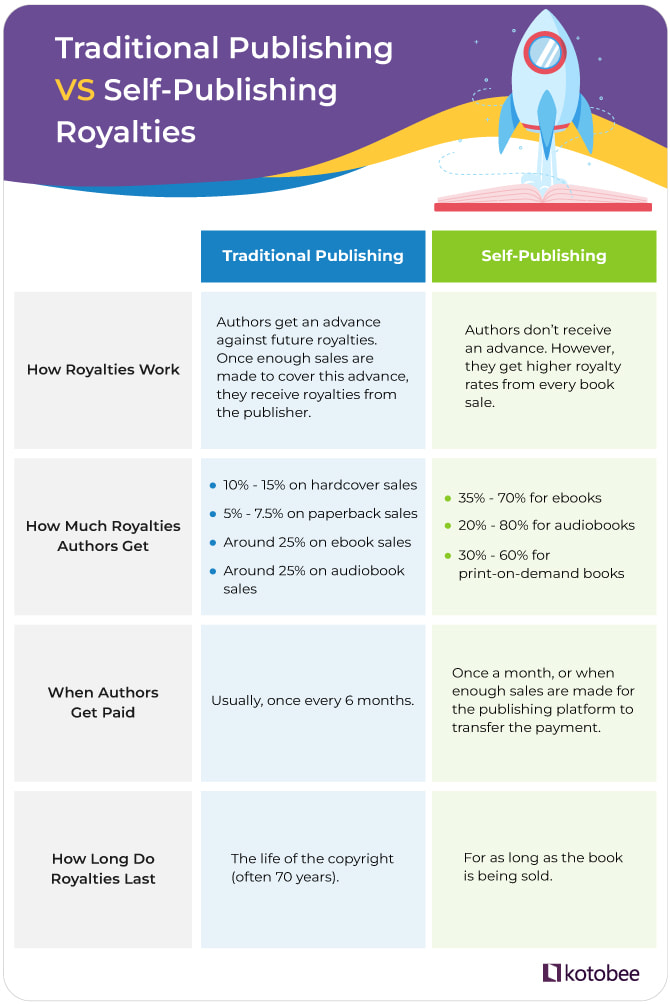
How to Earn 100% Royalties for Your Books
Now that we’ve covered the average royalty rates available in today’s publishing scene, you might be wondering; is there a way to publish your book for free and still earn 100% royalties? As a matter of fact, there is! All you have to do is get your manuscript ready for digital publishing, then go ahead and publish it on Kotobee Books .
Kotobee Book is a free digital publishing platform that aims to spread the love of reading and make books easily accessible to everyone. Supporting both static and interactive ebooks, authors find this platform ideal for reaching their target audience and earning high profits.
Not only does Kotobee Books offer the highest royalty rates, but it is super easy to use and offers many other benefits. For example, it allows you to publish your ebook in a matter of minutes and reach thousands of readers around the world .
Here’s all it takes to publish your book and gain 100% royalties for each book sold:
- Sign up for a free author account on Kotobee Books.
- Click on the “Add your first ebook” button from your account dashboard.
- Upload your book and add all the necessary information.
- Once done, press the “publish” button.
- In just a few minutes, your book will be available for sale on Kotobee Books, and you can gain 100% of its royalties!

Final Thoughts
Writing and publishing a book requires significant time and effort. Understanding how book royalties work is crucial to maximizing your revenue for the effort you’ve invested. Fortunately, by selling your book through Kotobee Books, you can retain all the profits without sharing them with anyone. So, prepare your manuscript for publishing and reap the maximum benefits in today’s industry.
- How to Publish a Book for Free and Maximize Your Profit
How to Start an Online Bookstore: A Step-by-Step Guide
Successful Book Launch Tips and Tricks for First-Time Authors
Leave a Reply Cancel reply
Save my name, email, and website in this browser for the next time I comment.
Currently you have JavaScript disabled. In order to post comments, please make sure JavaScript and Cookies are enabled, and reload the page. Click here for instructions on how to enable JavaScript in your browser.

Kotobee is the complete end-to-end ebook solution for you and your business. Export multiple formats. Deliver securely.
Create, publish, and sell ebooks with ease
Kotobee es la solución completa de ebooks de extremo a extremo para usted y su empresa.
Cree, publique y venda libros electrónicos con facilidad

Recent Posts
- Game-Based Learning: What It Is, and How to Apply It
- How to Become a Best-Selling Author: 5 Secrets for Success
- 12 of the Best Book Writing Software to Try in 2024 (Free and Paid)
- Entries feed
- Comments feed
- WordPress.org
Understanding Book Royalties: What Authors Need to Know
June 29, 2023
Are you an aspiring author who dreams of publishing your own book? If so, it's crucial to have a solid understanding of book royalties. While the world of publishing may seem complex and overwhelming, navigating the intricacies of book royalties is an essential step towards achieving success as an author. In this article, we will delve into the ins and outs of book royalties, explain their importance, explore the different types of royalties, provide tips for negotiating favorable terms, and analyze case studies to help you learn from both success stories and failed negotiations.
What Are Book Royalties?
Book royalties are the financial payments that authors receive as compensation for the sales and usage of their books. In simple terms, royalties are a percentage of the revenue generated from sales, licenses, and other forms of distribution. They serve as an incentive for authors, allowing them to earn income from their creative works long after the initial publication.
Definition of Book Royalties
In the publishing industry, book royalties refer to the income earned by authors from the sale of their books. This income is typically calculated as a percentage of the book's retail price or the publisher's net receipts. It is crucial for authors to have a clear understanding of the specific royalty agreements they enter into, as these agreements determine the amount of money they will receive.
How Book Royalties Work
When a book is published, the author's royalty payment is typically determined by a contract negotiated between the author and the publisher. Royalties can be paid in different ways - for example, as a percentage of the book's cover price or as a percentage of the publisher's net receipts from sales. Additionally, royalties can be paid out on a regular schedule, such as quarterly or semi-annually.
It's important to note that book royalties are not just limited to physical books. With the rise of digital publishing, authors can now earn royalties from eBook sales, audiobook sales, and even licensed adaptations of their work. This opens up new opportunities for authors to monetize their intellectual property in various formats.
When it comes to calculating book royalties, there are several factors to consider. One important factor is the royalty rate, which is the percentage of the book's revenue that the author will receive. This rate can vary depending on various factors, such as the author's reputation, the book's genre, and the publisher's marketing efforts.
Another factor to consider is the book's sales volume. The more copies of a book that are sold, the higher the author's royalty payment will be. However, it's important to note that not all copies of a book count towards royalties. For example, books that are sold at a deep discount or given away for promotional purposes may not generate royalties for the author.
In addition to sales, authors can also earn royalties from licensing their work. This can include licensing the book for translation into different languages, adapting it into a screenplay for a film or television series, or even creating merchandise based on the book's characters or story. Each licensing agreement will have its own terms and conditions, including the percentage of royalties the author will receive.
Furthermore, authors may receive royalties from subsidiary rights. Subsidiary rights refer to the rights to publish the book in different formats or markets. For example, an author may sell the rights to publish their book in paperback, hardcover, and eBook formats separately. Each of these formats can generate additional royalty income for the author.
It's worth mentioning that royalty payments are not always straightforward. Authors often receive royalty statements from their publishers, detailing the sales and revenue generated by their books. However, these statements can be complex and difficult to decipher, especially for authors who are not familiar with the publishing industry. It's important for authors to review these statements carefully and seek professional advice if needed to ensure they are receiving the correct royalties.
In conclusion, book royalties are an essential part of an author's income. They provide a financial incentive for authors to continue creating and allow them to earn income from their works long after the initial publication. With the advent of digital publishing and licensing opportunities, authors now have even more ways to monetize their intellectual property and maximize their royalty earnings.
The Importance of Understanding Book Royalties
As an author, understanding book royalties is crucial for several reasons. Firstly, royalties serve as a primary source of income for authors. Having a clear understanding of how much money you can expect to earn from your book allows you to plan your finances accordingly and make informed decisions about your writing career.
Secondly, understanding book royalties can directly impact your publishing decisions. Knowing the potential financial implications of different royalty rates and payment structures can help you assess and compare publishing offers from different publishers. This knowledge empowers you to negotiate favorable terms and choose the publishing option that aligns best with your goals.
Financial Implications for Authors
The financial implications of book royalties can vary significantly for authors, depending on the terms of their contracts. Higher royalty rates can result in more substantial payments, while lower rates may leave authors earning less from each sale. It's essential to carefully analyze the financial implications of potential royalties to determine the viability of publishing agreements.
Furthermore, understanding how royalties are calculated and the specific terms of your contract allows you to estimate future earnings from your book. This information can help you plan your writing career, set financial goals, and make informed decisions about marketing and promotion strategies.
Impact on Publishing Decisions
Having a clear understanding of book royalties also influences your publishing decisions. If multiple publishers express interest in your work, analyzing their proposed royalty rates and payment structures can help you assess the potential financial benefits of each offer. This knowledge empowers you to choose the publisher that offers the most advantageous terms for your writing career.
Additionally, understanding book royalties allows you to evaluate publishing options beyond traditional publishing. With self-publishing platforms becoming increasingly popular, authors have the opportunity to retain more control over their work and receive higher royalty rates. Being informed about book royalties enables you to make an informed decision about the publishing route that best suits your goals and aspirations.
Different Types of Book Royalties
Book royalties can vary depending on the format of the book and the rights granted to the publisher. Let's explore some of the most common types of book royalties:
Print Book Royalties
Print book royalties are the most traditional form of book royalties. They are based on the retail price of the physical book and are typically calculated as a percentage. The exact percentage can vary depending on the author's negotiating power, the publisher's standard rates, and the book's marketability.
For example, an author may negotiate a royalty rate of 10% of the book's retail price. If the book has a retail price of $20, the author would receive $2 for each book sold.
eBook Royalties
eBook royalties are becoming increasingly important in the digital age. These royalties are based on the sales of electronic versions of the book, which can be purchased and downloaded from various online platforms. eBook royalties are often calculated as a percentage of the publisher's net receipts from eBook sales.
Say an author has negotiated a royalty rate of 25% of the publisher's net receipts for eBook sales. If the publisher receives $5 from the sale of the eBook, the author would receive $1.25 as their royalty payment.
Audiobook Royalties
Audiobook royalties are earned when an audiobook version of a book is sold or licensed. These royalties are typically calculated as a percentage of the net proceeds received by the publisher from audiobook sales or licensing agreements.
For instance, if an author has negotiated a royalty rate of 15% of the publisher's net proceeds from audiobook sales, and the publisher receives $10 from an audiobook sale, the author would receive $1.50 as their royalty payment.
How to Negotiate Book Royalties
Now that we've explored the different types of book royalties, let's delve into how authors can negotiate favorable royalty terms.
Tips for Negotiating Royalties
When negotiating book royalties, it's essential to be well-prepared and aware of your value as an author. These tips can help you navigate the negotiation process:
- Research industry standards: Familiarize yourself with the typical royalty rates for authors in your genre and market. This knowledge will help you gauge the reasonableness of the offers you receive.
- Build your author platform: Investing time and effort in establishing your author platform, building a loyal audience, and demonstrating your market potential can strengthen your negotiating position. Publishers are more likely to offer favorable terms to authors with a proven track record or a strong online presence.
- Consult with literary agents or lawyers: If you feel overwhelmed by the negotiation process, seeking assistance from literary agents or lawyers experienced in publishing contracts can be beneficial. They can help you understand the terms of the contract, identify potential pitfalls, and negotiate on your behalf.
Common Mistakes to Avoid
When negotiating book royalties, it's crucial to avoid common pitfalls that can undermine your financial interests. Here are some mistakes to steer clear of:
- Accepting the first offer: While the excitement of receiving a publishing offer may be tempting, it's important not to jump at the first opportunity. Take the time to thoroughly evaluate the offer, compare it with industry standards, and negotiate for more favorable terms.
- Neglecting contract details: Carefully read the fine print of your contract, paying close attention to royalty rates, payment schedules, and clauses related to the sublicensing of rights. Ensure that the terms align with your financial goals and protect your intellectual property.
- Overlooking digital rights: In today's digital era, digital rights are an important aspect of book royalties. Make sure to clarify how eBook and audiobook royalties will be handled, especially if your book has the potential for digital adaptations.
Case Studies of Book Royalties
Lastly, let's examine some real-life case studies to understand how book royalties can impact an author's success and financial well-being.
Success Stories
Case studies of successful negotiations can provide valuable insights into the potential rewards of understanding book royalties. From self-published authors achieving financial independence to best-selling authors securing lucrative royalty deals, these success stories demonstrate the importance of grasping the intricacies of book royalties.
Lessons from Failed Negotiations
Learning from failed negotiations is equally important. Sometimes, authors make mistakes or encounter unfavorable terms that result in disappointing royalty payments. Analyzing these case studies helps us understand the potential pitfalls and avoid making the same errors in our own negotiations.
In conclusion, understanding book royalties is vital for authors aiming to navigate the publishing world successfully. It empowers authors to make informed decisions, negotiate favorable terms, and maximize their earnings from their creative works. By grasping the definitions, workings, and various types of book royalties, authors can set themselves up for financial success and establish rewarding careers in the literary realm.
Publishing Testimonials

I used Publishing Push to publish my novel and am completely satisfied with the service I received. In all my contacts with the organization, I found staff to be knowledgeable, professional and effective. Their friendly and helpful approach has been a welcome bonus.
Michael Brookes
Great experience and first class service! Huge thanks to Sophie and the team!
Mark Stuart
Brilliant experience working with Publishing Push. They kept me in the loop throughout the entire process and were supportive...All the staff were easy to communicate with and equally as talented with their skills. They streamlined the process...Would recommended Publishing Push.
Ramis IBRAHIM
I came to publishing push with very little vision other than my story. Their staff and process made it extremely easy to produce an amazing end product. I am so happy with the outcome. Thank you.
Working with Publishing Push was a complete pleasure...Publishing Push remove the worries and hassles so the Author can progress with their work unencumbered by the technical details of publishing. Publishing Push made the publishing experience extremely straightforward; I would not hesitate to publish through them again or to recommend them to any aspiring author.
Kate Taylor
Thank you so much Benjamin and the Publishing Push team! I cannot thank you enough for your dedication and determination to get my book published! You went above and beyond. I am so proud and happy how the book turned out. Such lovely friendly down to earth people! God bless you all! Wishing you all the best! Many thanks, Michelle 😊
Want to know more? Get in touch!
Speak to our publishing consultants, hq: publishing push ltd, soulspace, the boathouse, millbrook, guildford gu1 3xj.
© 2012 – 2024 PublishingPush.com

- Book Selling Tips , Publishing
What are Book Royalties and How Do They Work?
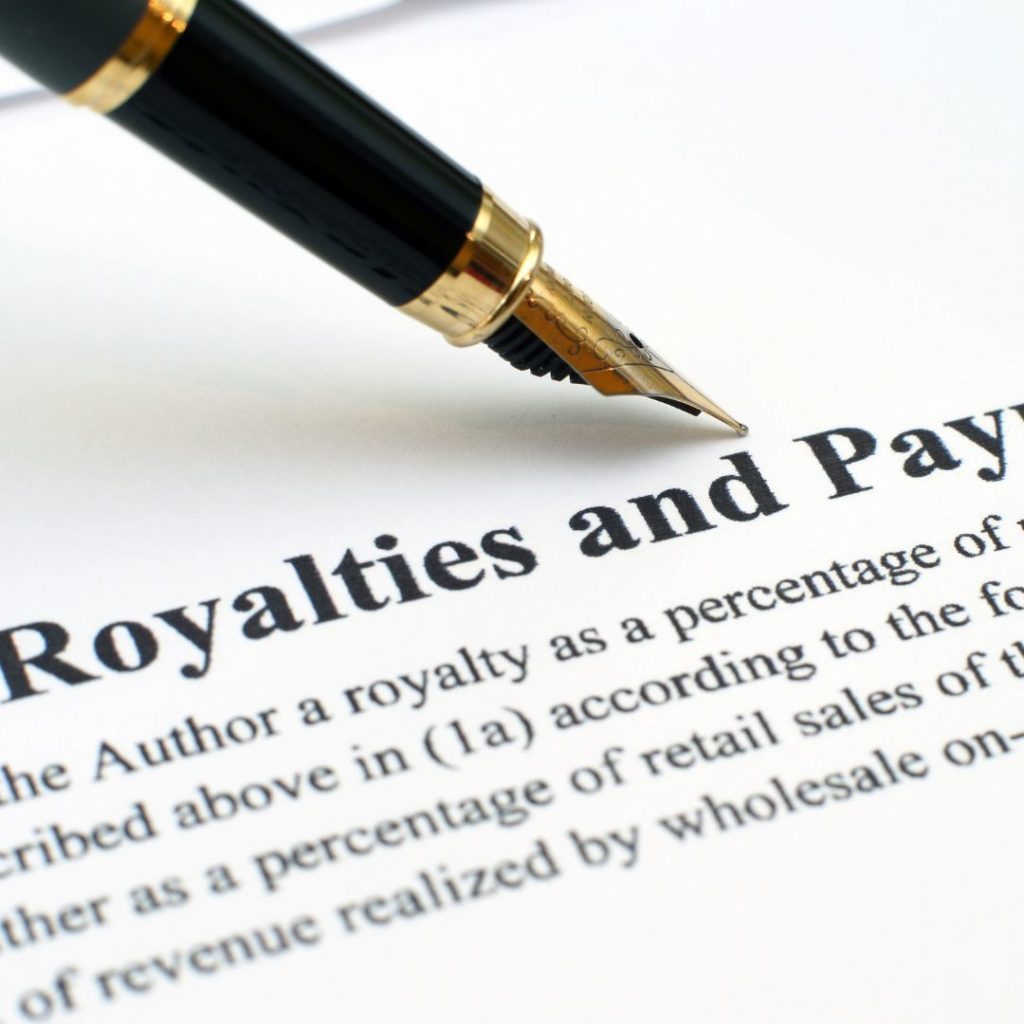
If you’re a new author, the term \” book royalties \” may be one you’ve heard thrown around a lot. But what are book royalties? And how do they work? How much money can you make from book royalties? And is there anything you need to avoid when it comes to royalties?
These are all common (and great!) questions for anyone who has ever written a book.
As it turns out, there are many ways to make money from your work as an author. And one of them is through royalty payments.
But why should book royalties matter to you ? This guide will help you understand everything about royalties—what they are, how they’re calculated, how much they might be worth to you, what happens when you sell copies of your book for more than their list price…and more!
What are book royalties?
Book royalties are the cut of the proceeds an author receives after a book has been published and sold. They’re often paid in the form of a lump sum, but can also be paid out incrementally as sales come in.
How exactly do book royalties work?
In order to understand how book royalties work, you have to start with the concept of intellectual property rights. Generally speaking, intellectual property refers to creations or discoveries that are protected by law because they are unique, original, and valuable. Intellectual property rights allow people who create something to profit from their creation—whether it’s a song, painting, or new invention—without worrying about someone stealing it from them.
When you sign a publishing agreement with your publisher, you’re giving them permission to publish your work under their name. They can then distribute it throughout the world. In exchange for this opportunity, your publisher pays you a royalty fee for every copy sold on top of whatever advance they may have given you upfront (usually an advance will be between $1K-$5K).
What factors affect the amount of book royalties an author receives?
There are a few different things that can impact the amount of royalties an author receives, such as:
- The format of the book: Is it a hardcover, paperback, or an eBook?
- The price of the book: How much did the reader pay for it?
- The royalty rate: This is the percentage of each sale that goes to the author. It’s typically between 15-25%, but can be higher or lower depending on the publisher and other factors.
- Whether or not the book is returnable: If a bookstore buys your book and then decides to return it, your publisher may deduct those copies from your total sales.
What is a standard book royalty rate?
The standard book royalty rate is 15%. However, this number can vary depending on the publisher, the format of the book, and other factors.
How long do book royalties last?
In most cases, book royalties are paid out for the life of the copyright, which is typically 70 years after the author’s death. However, it’s important to note that some publishers may include a clause in their contract that limits the number of years they have legal ownership of your work. This is something you’ll want to keep an eye on when signing your publishing contract.
What happens if my book sells for more than its list price?
If your book sells for more than its list price (also known as the cover price), you’ll still only receive a royalty based on the cover price. So, if your book has a cover price of $15 and someone buys it for $20, you’ll still only receive royalties based on the $15—not $20.
This is because retailers often offer discounts on the retail price of books to encourage people to buy them. So, while the customer may be paying more than the cover price, the retailer isn’t actually selling the book for that amount.
Are there different types of book royalties?
Yes! In addition to standard royalties, authors can also earn performance-based royalties , which are based on how well their book is selling. For example, an author might receive a higher royalty rate if their book hits certain sales milestones (such as 100,000 copies sold).
Another type of royalty is a foreign rights royalty , which is paid when a publisher buys the rights to publish your book in another country.
Lastly, there’s something called subsidiary rights , which are rights that you, the author, retain and can sell yourself (such as the rights to make an audiobook or create a stage play based on your book).
Do I have to pay taxes on my book royalties?
Yes. Just like any other income you receive, you’ll need to pay taxes on your book royalties. However, there are some deductions you can take as an author that can lower the amount of taxes you owe. For example, you can deduct any expenses related to writing and publishing your books, such as the cost of research materials, editing fees, and marketing costs. For the most up-to-date information you’ll want to go over this with a tax accountant who fully understands how an author’s earnings work.
How can I learn more about royalties at Lucid Books?
Here at Lucid Books , we believe every author deserves to be compensated fairly for their hard work, which is why we offer competitive royalty rates and advance payments.
If you’re interested in learning more about our publishing partnership opportunities at Lucid or you’re interested in submitting a book proposal, get in touch with us here. We’d be happy to answer any questions you have about the publishing process and our standard rates for book royalties.
We’re committed to helping authors just like you navigate the publishing process and reach your goals—whatever they may be. Reach out to our team today to learn more about what we can do for you.
Casey Cease
Leave a reply, about lucid books.
Lucid Books is a partnership publisher. We help you create impactful books that people read and share with others!
Recent Posts

5 Essential Tips for First-Time Authors: Navigating the Journey to Publication

The 5 Ways Publishing with Lucid Books Can Amplify Your Business Growth

Crafting the Perfect Title: How to Name Your Book
Browse the blog.
- [email protected]
- 844-332-5045
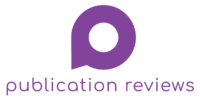
Book Royalties Explained: Everything You Need to Know
Understanding book royalties can be confusing, but this guide breaks it down for you. Learn about the different types of royalties and how they work.
If you’re an author, understanding book royalties is essential to making a living from your writing. But with so many different types of royalties and payment structures, it can be confusing to know how it all works. In this guide, we’ll break down the basics of book royalties and help you understand how you can earn money from your writing.
What are book royalties?
Book royalties are payments made to an author for the use of their work. When a book is sold, the author receives a percentage of the revenue generated from that sale. The percentage of royalties an author receives can vary depending on the type of book, the publisher, and the author’s contract. Royalties can also be earned from other uses of the author’s work, such as translations, adaptations, and licensing for film or television.
Types of book royalties.
There are several types of book royalties that an author can earn. The most common types include:
- Advance royalties: This is an upfront payment made to the author before the book is published. The amount is usually based on the publisher’s estimate of how many copies the book will sell.
- Net royalties: This is the percentage of revenue that the author receives after the publisher has deducted expenses such as printing, distribution, and marketing costs.
- Gross royalties: This is the percentage of revenue that the author receives based on the total sales of the book, without any deductions.
- Subsidiary royalties: These are royalties earned from the use of the author’s work in other formats, such as translations, adaptations, or licensing for film or television.
It’s important for authors to understand the different types of royalties and how they work in order to negotiate a fair contract with their publisher.
How are book royalties calculated?
Book royalties are calculated based on the type of royalty agreement between the author and publisher. For example, if the author has a net royalty agreement, the percentage of revenue they receive will be based on the publisher’s deductions for expenses such as printing and marketing costs. If the author has a gross royalty agreement, they will receive a percentage of the total sales revenue without any deductions. The exact calculation can vary depending on the specific terms of the contract.
Understanding advances and royalty rates.
When an author signs a book deal, they may receive an advance payment from the publisher. This is an upfront payment against future royalties and is typically based on the expected sales of the book. Royalty rates, on the other hand, refer to the percentage of revenue that the author will receive for each book sold. These rates can vary depending on the type of book (e.g. hardcover vs. paperback), the sales channel (e.g. online vs. brick-and-mortar stores), and the author’s negotiating power. It’s important for authors to understand both advances and royalty rates before signing a book contract.
Tips for maximizing book royalties.
While royalty rates can vary, there are some tips for authors to maximize their book royalties. One is to negotiate for a higher royalty rate, especially if the book is expected to sell well. Another is to focus on promoting the book and increasing sales, as higher sales will lead to higher royalty payments. Additionally, authors can consider self-publishing, which allows them to keep a larger percentage of the revenue from book sales.
Leave a Comment Cancel Reply
Your email address will not be published. Required fields are marked *
Save my name, email, and website in this browser for the next time I comment.
How Do Book Royalties Work?
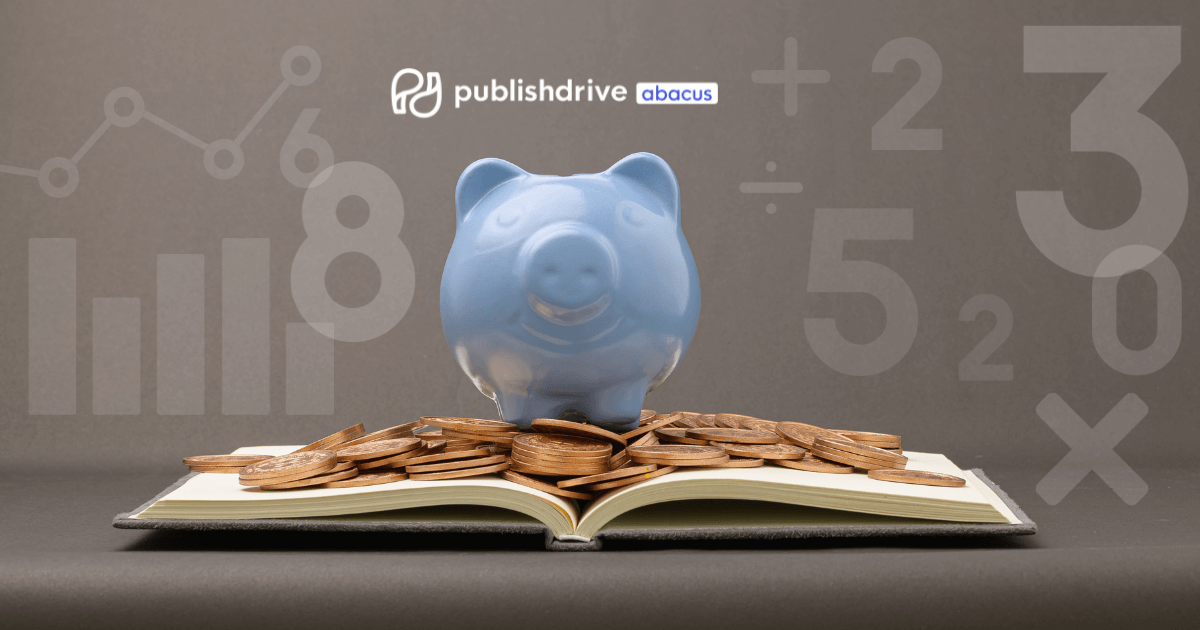
How do book royalties work? If you’re looking to publish a book, there are several topics to learn about, such as how to format your manuscript or design your cover. When it comes to actually earning money from your book, you’ve got to know the ins and outs of your book royalty options. Let’s go over what to know.
Key Takeaways
- What percentage do publishers take? Usually, most of the author’s royalties. What percentage do self-publishing sites take? Usually, only a quarter of the author’s royalties. All in all, you earn higher royalties under self-publishing, although there are other expenses to consider.
- For indie authors and especially publishers managing royalties across several channels, using a book aggregation platform like PublishDrive is perfect for saving time and money while collecting the maximum amount of royalties possible.
What Are Book Royalties?
What are royalties in books? Book royalties are what you’re paid through as a published author. Royalty rate refers to the percentage you’d get for every copy sold, based on the book’s retail price. Royalty percentages (and conditions) differ between traditional publishing and self-publishing.
Traditional publishing is when you work with a mainstream publisher to manage the publishing process for you. Self-publishing involves taking matters into your own hands.
Here’s a quick breakdown of the differences:
As you can see, traditional publishing earns you fewer royalties than self-publishing. I suggest reading up on self-publishing vs. traditional publishing to determine which route is best for you. Do know that traditional publishing is harder to achieve. Let’s dig deeper –
Traditional Publishing Royalties (What’s an Advance?)
In traditional publishing, there’s usually an exchange for the rights to the author’s book. And royalty rates vary across book formats. For example, ebook royalties differ from print royalties. Royalty rates vary across publishers, too. Generally, they’re around 10% (meaning the author gets only 10% of the royalties made.)
Here’s what you can expect from traditional publishers:
- Paperback: 5-8% royalties
- Hardcover: 15% royalties
- Ebook: 20-25% royalties
- Audiobook: 25% royalties
Let’s break down the math for a better picture:
- Your paperback retails at $20.
- You’re contracted to receive 5% royalties.
- That means you earn $1 per every book sold.
- Selling 1 million copies means making 1 million in royalties!
Important: What’s an Advance?
Here’s the thing with traditional publishers: You get your royalty payout only after you earn back your book advance. What’s an advance? It’s an upfront payment from the publisher based on how many copies they think your book will sell.
You see, mainstream publishers won’t pay in advance for a book they’re not sure is going to guarantee success. It’s important to remember that an advance is a payment against whatever future royalties you earn. If you don’t make enough to cover the cost of the advance, it’s most likely you won’t see another check. Reaching your advance can be a challenge, especially for newbies.
Here’s how indies earn book publishing royalties –
Self-Publishing Royalties (What’s an Aggregator?)
How do royalties work in self-publishing? Like traditional publishing, royalty rates vary across book formats and self-publishing channels. The major benefit is that self-publishing royalty rates are way higher.
What to expect from the best self-publishing sites in the game:
- Amazon KDP: Up to 70% royalties for books between $2.99 and $9.99, 35% if below $2.99
- Apple Books: Up to 70% royalties for most books
- Google Play Books: Up to 70% royalties for most books
- Barnes & Noble: Up to 70% royalties for ebooks, 55% for prints
- Kobo: Up to 70% royalties for books priced more than $2.99, 45% if below $2.99
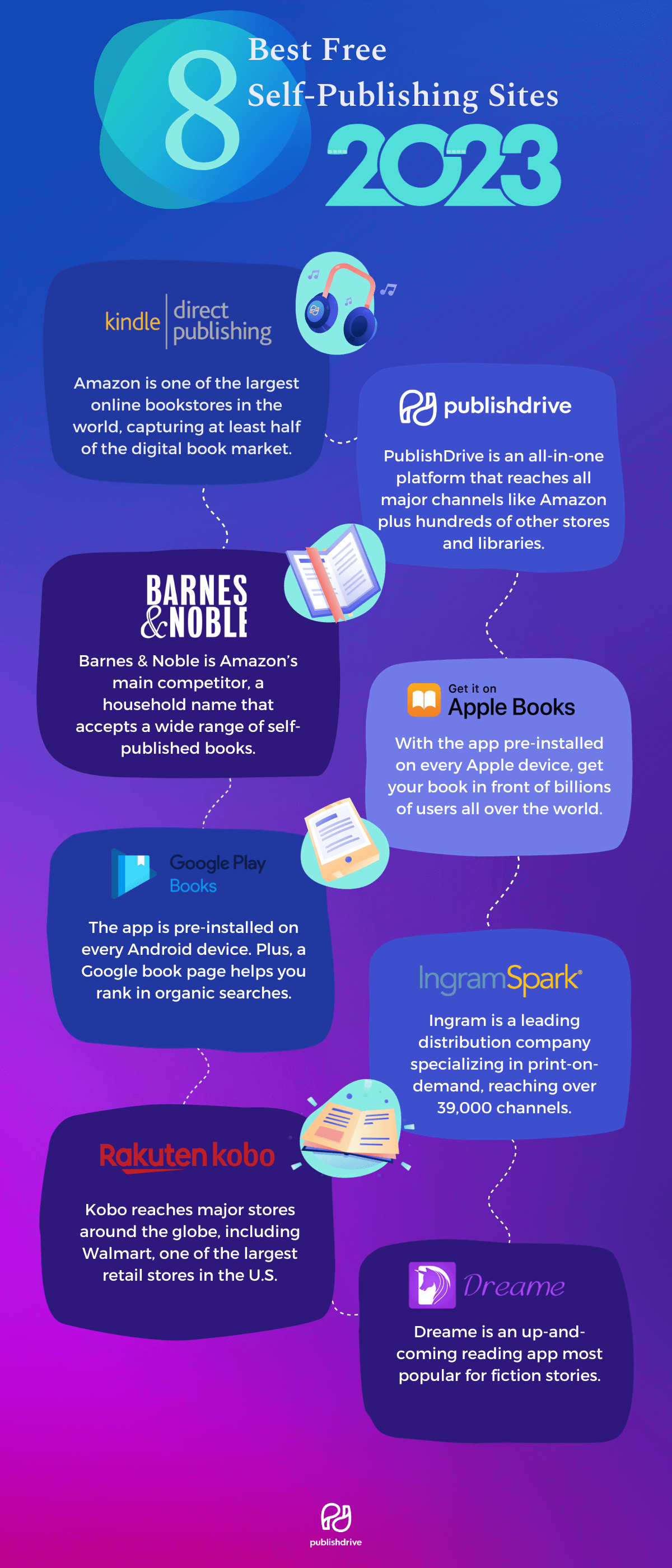
One of the coolest things about self-publishing is just how accessible and affordable it is. You can publish your book for free on many of the platforms mentioned above. With tens and thousands of channels accepting self-published titles around the globe, you need a solid book aggregator to reach them all –
Important: What’s an Aggregator?
If you decide to self-publish, consider publishing wide to as many markets as possible. That means reaching all the major stores mentioned above plus more. This strategy is about maximizing your reach and selling potential.
Trying to handle every single store and market will burn a lot of your time and energy. That’s why book aggregators exist. An aggregator distributes for you to multiple places like Amazon, Apple, and more. Most aggregators take an extra 10% of royalties on top of store royalties. No worries, your take-home royalty rate is still higher than traditional publishing.
How Do Book Royalties Work With PublishDrive?
You can choose a unique aggregator like PublishDrive that doesn’t take any extra royalties. That means you keep the royalties you earn from stores as if you’re handling them yourself. This is possible because of PublishDrive’s subscription-based model, where authors and publishers pay a flat monthly fee to publish.
Let’s do the math:
- Let’s say you sell a book for $9.99.
- The aggregator you’re with uses a 70% payout plan.
- That means you receive $5.99, and the aggregator gets $1.
- That $1 represents 10% of the sales price only.
- In terms of the amount you give up, you lose about 17% of your royalties to the aggregator ($1/$5.99).
By saving that 17%, authors earn more with subscription-based aggregation .
“When you’re selling 5,000 books a month at 10% versus a flat fee of 100 bucks, that’s sort of a no-brainer...We can use PublishDrive, save a ton of money, and still reach the same audience and actually a bigger audience which is awesome too. When I first heard about that, I almost thought it was too good to be true.” – Quinn & Bo Loftis
Managing Your Book Royalties With PublishDrive
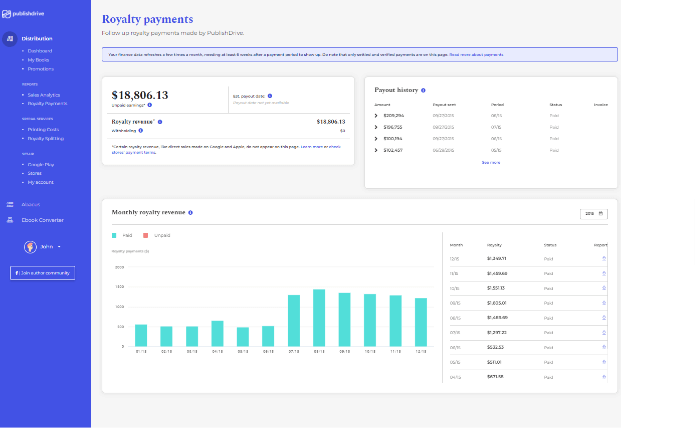
With PublishDrive, you earn more, plus get a ton of tools to help you manage your royalties and book sales like a pro:
- Sales analytics: See real-time sales performance for all of your stores in one place. Check out automated charts and graphs to help you analyze and understand where your sales come from. Download all your data in no time whenever you need it.
- Royalty reporting: Never miss a payment with automated royalty reporting and payouts. Get regular updates on your royalties.
- Abacus: If you work with other authors or collaborators, easily manage co-royalties with the Abacus tool. It does all the number crunching for multiple royalty revenues, fantastic for publishers. Learn more about PublishDrive’s royalty software for publishers .
💡 For publishers that work with multiple authors across multiple stores and channels, it’s important to optimize the work process to benefit everyone involved. With PublishDrive, you can manage everything on a single platform while earning your authors the most royalties they can earn.
Max Out Your Royalties With PublishDrive
✅ One dashboard is all you need to publish in hundreds of markets . ✅ Manuscript formatting, book marketing, royalty reporting, and more. ✅ Earn all royalties from book sales around the globe.
Try PublishDrive Free
Related posts
Brazilian ebook market in 2017: trends and predictions.
To help us understand the Brazilian ebook market, we asked newcomer Pablo Araújo (straight…
August 2020 Book Market Update: Best Book Genres & More
We are paying close attention to the book market this year. Although there can…
April 2020 Book Market Update: Best Genres & More During COVID-19
COVID-19 has affected communities of every size and function; from large institutions to small…
Are you looking for something on PublishDrive?
This website uses cookies
Select which cookies to opt-in to via the checkboxes below; our website uses cookies to examine site traffic and user activity while on our site, for marketing, and to provide social media functionality. More details...
Book Royalties: What They Are and How They Work
- February 13, 2024
Table of Contents:
What are book royalties, how book royalties are calculated.
- Key Factors Influencing an Author's Book Royalty Earnings
1- Publishing Contract Terms
2- book format, 3- sales volume, 4- retail price and discounts, 5- advance against royalties, 6- market and distribution channels, 7- subsidiary rights.
- 8- Author's Reputation and Track Record
9- Publisher Size and Type
The difference between advances and royalties, advances: an overview, key characteristics of advances:, royalties: an overview, key characteristics of royalties:, understanding the relationship, implications for authors, example of book royalties, example 1: ebook royalties based on net sales, example 2: book royalties with an advance, calculating royalties per sale, earning out the advance, number of books to earn out, example 3: audiobook royalties through a distribution platform.
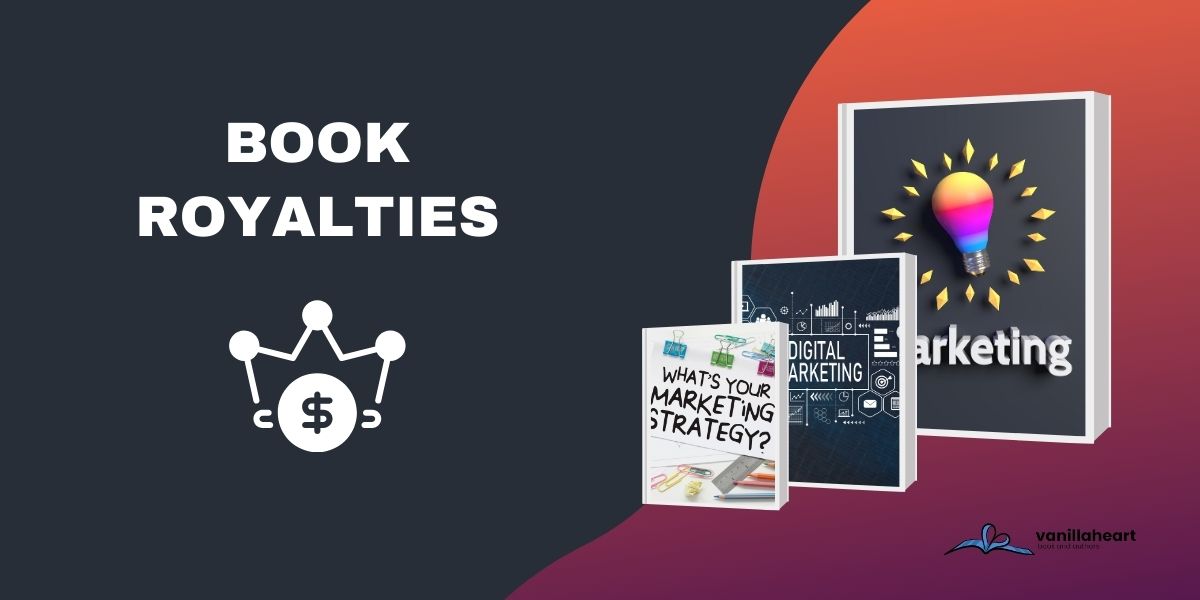
Book royalties are a fundamental aspect of the publishing industry, representing how authors earn money from selling their books.
Essentially, royalties are a financial agreement between an author and their comic book publisher , wherein the author is paid a percentage of the revenue generated from book sales. This compensation system allows authors to benefit directly from the success of their work, creating a symbiotic relationship between the creator and the distributor of literary content.
At its core, the concept of royalties is rooted in recognizing the author’s intellectual property rights. When a publisher decides to publish a book, they buy the right to reproduce and distribute the author’s work.
In return, the author is compensated with royalties, typically calculated based on the number of books sold, the book’s selling price, or a combination of both.
At the heart of the matter, the first question is how book royalties work. It is a financial agreement between an author and a publisher. This arrangement ensures that authors receive a percentage of the sales from their books. It’s a system designed to compensate authors for their creative output, aligning their financial rewards with the success of their work.
The calculation of royalties can vary, but it generally revolves around a percentage of the book’s selling price. This can be based on the book’s list price (the price set by the publisher) or its net sales (the revenue after discounts and returns). The publishing contract determines the percentage and can differ based on the book’s format and sales channel.
Key Factors Influencing an Author’s Book Royalty Earnings
Various factors influence the amount of book royalties an author receives, each playing a significant role in determining the financial rewards of their literary work. Understanding these factors is essential for authors to navigate the publishing landscape effectively and to negotiate the best possible terms for their work.
Here’s a closer look at the key elements of book writing services that affect book royalty amounts:
The specifics of the publishing contract, including the royalty rate, are foundational in determining how much an author earns from their book sales. Contracts vary widely, with royalties typically calculated as a percentage of the book’s list price or net sales. The negotiation of these terms can significantly impact an author’s earnings.
Book royalties can differ substantially based on the book’s format—hardcover, paperback, e-book, or audiobook. Due to their higher selling prices, hardcover editions often command higher royalty rates than paperbacks. E-books may offer higher percentages to authors because of lower production and distribution costs, while audiobook royalties vary depending on the platform, distribution model, and the usage of book formatting software .
The total number of books sold directly impacts royalty earnings. Higher sales volumes result in higher royalties, making the book’s market success crucial. Marketing efforts, book quality, genre popularity, and author recognition all influence sales volume.
The book’s retail price affects royalty calculations, especially when royalties are based on the list price. Additionally, the discount level offered to retailers and wholesalers can impact net sales revenue, thereby affecting royalties calculated on a net basis.
An advance is a pre-payment on future royalties. While it provides an immediate financial benefit to the author, it must be “earned out” through book sales before actual royalty payments begin. The size of the advance can affect the timeframe within which an author starts receiving royalty payments beyond the advance.
Book royalties can vary by sales channel, such as direct retail, online, or special sales (bulk purchases for educational purposes, for instance). International sales might also have different royalty rates due to varying distribution costs and market pricing. For authors seeking wider exposure, investing in effective book marketing services can enhance visibility and sales potential across various channels.
Income from subsidiary rights, such as translations, movie adaptations, and merchandise, can significantly affect an author’s total earnings from a book. These rights are often negotiated separately and have different royalty rates or lump-sum payments.
8- Author’s Reputation and Track Record
Established authors with solid sales histories may negotiate higher royalty rates and advances than new authors. A proven track record can give an author leverage in contract negotiations, leading to more favorable terms.
Larger publishers may offer lower royalty rates due to their extensive distribution networks and marketing capabilities, whereas smaller best amazon book publishers might offer higher rates to attract talented authors. Additionally, self-publishing platforms often provide higher royalty percentages but require the author to take on more marketing and distribution responsibilities.
The concepts of advances and royalties are pivotal to understanding the financial relationship between authors and publishers. Although interconnected, advances and royalties serve distinct purposes and operate under different parameters.
Here’s a breakdown of the key differences between these two important terms.
An advance is a lump-sum payment made by a publisher to an author before publishing the book. It’s essentially a prepayment on the future royalties the book is expected to earn. Advances are offered based on the publisher’s estimation of the book’s success and are meant to provide financial support to the author during the writing and publication process.
- Pre-publication payment: Paid before the book hits the shelves, giving the author financial support.
- Recoupable against royalties: The advance is not additional to royalties; rather, it’s an upfront portion of the royalties the author will earn. The author doesn’t receive royalty payments until the book sales surpass the advance.
- Varies widely: The size of an advance can vary greatly depending on the authorship practices , reputation, the genre of the book, and the publisher’s size and budget.
Royalties are ongoing payments made to an author based on book sales, calculated as a percentage of the book’s selling price or net revenue. Unlike advances, royalties are paid only after the book is published and as sales occur. The rate at which royalties are paid is stipulated in the publishing contract and varies based on the book’s format, sales channels, and other factors.
- Sales-based payment: Book royalties are directly tied to the number of books sold.
- Calculated as a percentage: The actual amount an author receives per book sold is a percentage of the sale price or net revenue agreed upon in the contract.
- Ongoing income: Royalties provide a stream of income over the lifetime of the book’s sales, offering potential long-term earnings for the author.
The relationship between advances and royalties is integral to an author’s earnings from a book. Initially, the advance offers immediate financial support, reflecting the publisher’s confidence in the book’s market potential.
Once the book is on sale, royalties accumulate with each purchase. However, authors receive royalty payments only after their book sales have generated enough revenue to “earn out” the advance.
If an author receives an advance of $10,000, they won’t start receiving royalty checks until their share of the royalties from book sales exceeds that initial $10,000. If the book doesn’t earn its advance, the author is not typically required to repay the difference, assuming the contract is standard.
Understanding the difference between advances and royalties is crucial for best-selling authors similar to Colleen Hoover , especially when negotiating contracts. While a large advance can offer immediate financial relief, a higher royalty rate can ensure more sustainable income, especially if the book becomes a bestseller or enjoys long-term sales.
- Royalty Rate: 25%
- Selling Price: $9.99 per e-book
- No Discount Applied; Net Sales: $9.99
E-books often have higher royalty rates due to lower production and distribution costs. At a 25% royalty rate, the author earns $2.4975 per e-book sold ($9.99 x 25%). Selling 5,000 copies results in $12,487.50 in royalties (5,000 copies x $2.4975).
- Advance Payment: $10,000
- Royalty Rate: 10% for hardcover sales
- List Price of Hardcover: $25.00 per book
In this scenario, an author receives a $10,000 advance from the publisher before publication. This advance is an upfront payment against the future royalties the book will earn once it sells.
For each hardcover sold at $25.00, the author’s royalty per sale would be $2.50 ($25.00 x 10%).
The author must “earn out” the advance amount through book sales to receive additional royalties beyond the advance. The book must generate $10,000 in royalties before the author receives more sales money.
To calculate how many books need to be sold to earn out the $10,000 advance:
- Advance Amount: $10,000
- Royalties per Book: $2.50
Number of Books to Earn Out=Advance Amount/Royalties per Book
Number of Books to Earn Out= Advance Amount/Royalties per Book
Let’s perform the calculation to find out the exact number of books that need to be sold.
To earn the $10,000 advance, the author must sell 4,000 hardcover copies of the book. Once sales exceed this number, the author will start receiving additional royalty payments; this is how long book royalties last, continuing to earn $2.50 for each book sold beyond the 4,000th copy.
- Royalty Rate: 40%
- Retail Price: $20.00 per audiobook
- Platform’s Share: 50% of Retail Price
- Net Revenue: $10.00 ($20.00 x 50%)
- Author’s Earnings: $4.00 per audiobook sold ($10.00 x 40%)
In this example, the audiobook services platform takes a cut of the retail price, and the author earns royalties on the remaining revenue. If the audiobook sells 3,000 copies, the author’s total royalties would be $12,000 (3,000 copies x $4.00).
Book royalties are the linchpin of an author’s financial success, reflecting the value of their creative endeavors. With a solid grasp of how royalties work, authors can better navigate the complexities of the publishing world, ensuring their writing passion is both a fulfilling pursuit and a financially viable career. Understanding is essential for any author aiming for success through traditional or self-publishing avenues.
limited Time offer
50% off on all services.
REDEEM YOUR COUPON: VHBA50
Recommended Blogs
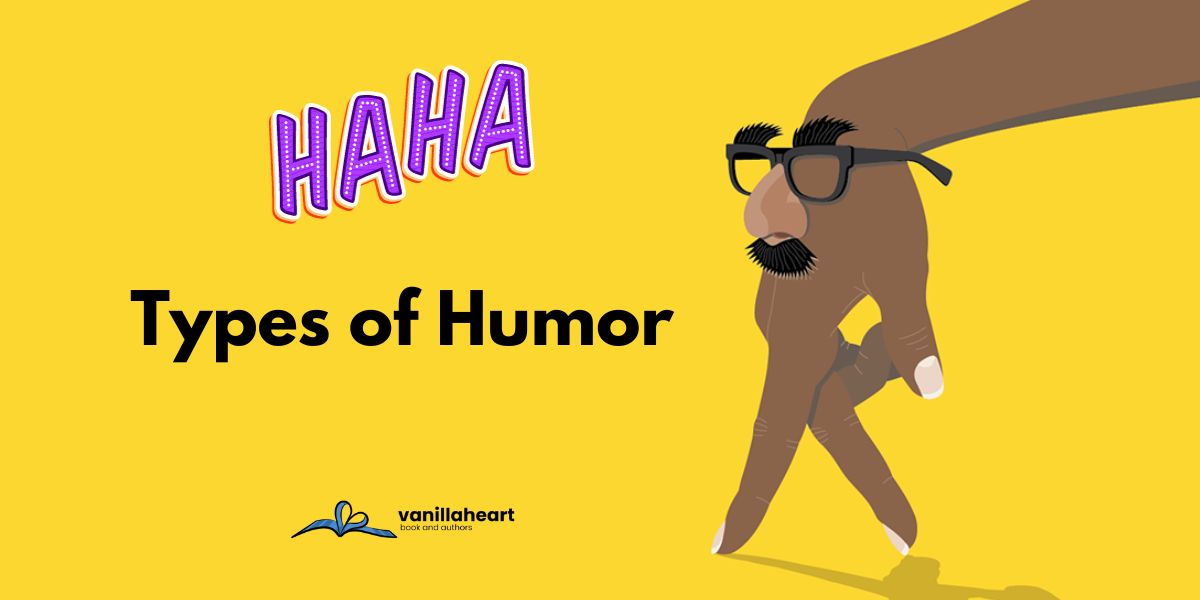
20 Types of Humor to Handle Your Funny Bone in 2024

How to Make Leather Book Covers in 10 Simple Steps

How to Get a Comic Book Graded? (Process and Costs)
Hire book authors & publishers at discounted rates looking for a book author or publisher contact us for a free consultation and get 30% off your first project..
Looking to publish? Meet your dream editor, designer and marketer on Reedsy.
Find the perfect editor for your next book
1 million authors trust the professionals on Reedsy. Come meet them.
Blog • Understanding Publishing
Last updated on Sep 05, 2022
How Much Do Authors Make? The Truth About Money in Publishing
How much can authors expect to earn from their books? A first-time author with a traditional publishing deal might expect an advance of $1,000-$10,000 and 5-18% royalties once they “earn out” their advance. Self-published authors do not receive advances, but their royalties can reach up to 70% for ebook editions.
If this sounds like cryptic mumbo-jumbo to you right now, that’s okay. In this post, we’ll break down money matters in publishing and help you understand how much authors make from publishing a book. For those already in the know, here are some up-to-date facts and figures:
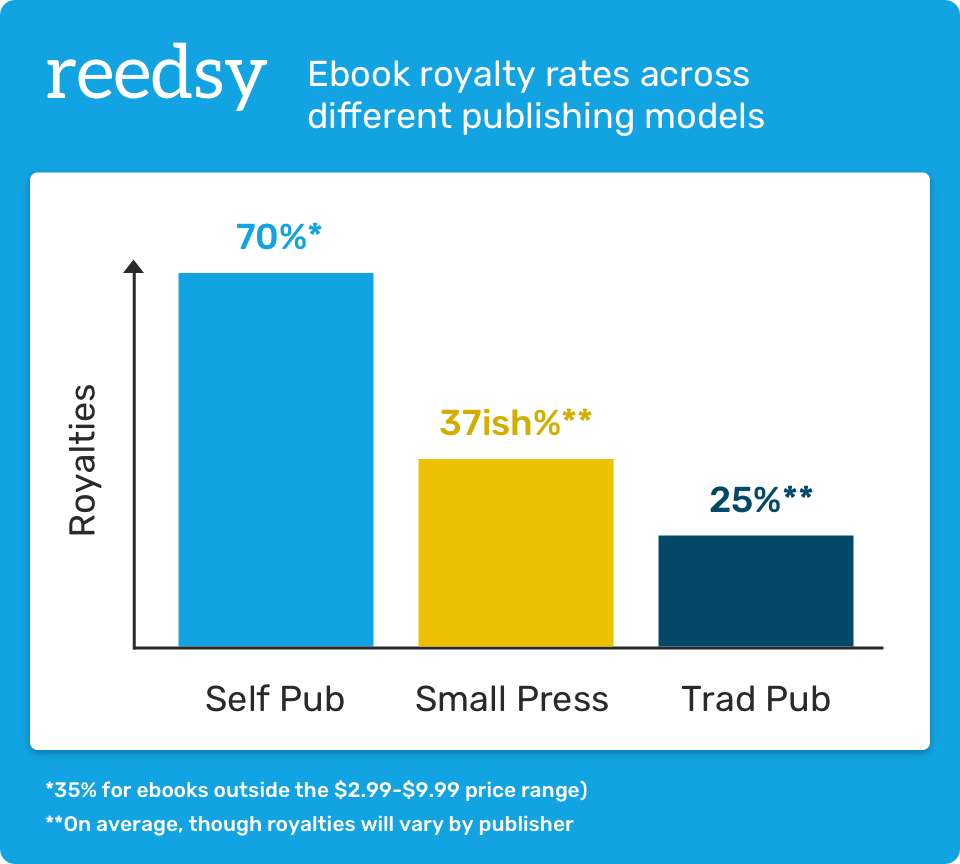
*Self-publishing figures based on Amazon KDP royalties .
As you can already tell, an author’s income will depend on many factors (most of which are out of an author’s control). So, let’s look closely at the world of advances, royalties, and additional income streams.

Advances in traditional book deals
In traditional publishing, authors receive an advance on royalties based on how well the publisher thinks the book will sell. The advance is estimated on other factors too, such as the publisher’s size, and the author’s popularity and track record.
There are also outliers, of course, household-name authors who nab hundreds of thousands in advances. To name a few:
- Roxane Gay received $100,000 for Hunger (her fourth book, a memoir).
- Scott Westerfeld received $175,000 for Extras (his 15th book, YA sci-fi).
- Viet Thanh Nguyen received $250,000 for The Refugees (his third book, a collection of short stories).
- Gillian Flynn received $400,000 for Gone Girl (her third book, a thriller).
- Kristen Roupenian received $1,200,000 for You Know You Want This (her first book, a short story collection including the viral “Cat Person”).
These authors are the exception, not the rule. They all published books with lower advances (or in Roupenian’s case, got a viral story in the New Yorker ) before ascending to the six-figure mark. The lesson here is that you need to be at the top of your writing game before you can get there financially — and traditional publishing still requires a great deal of luck. If you're publishing traditionally, a reputable literary agent to help you negotiate the best possible deal. In that case, you can check out our directory of literary agents to find relevant candidates.
The scales aren't always balanced
Moreover, one can’t ignore the racial disparities in trad pub payments exposed by 2020’s #PublishingPaidMe campaign , in which BIPOC authors reported much lower advances than white authors. To give a particularly egregious example, N.K. Jemisin — one of the most prominent sci-fi/fantasy authors working today, boasting four Hugo Awards and a MacArthur Genius Grant — received just $25,000 for each book in her Broken Earth trilogy. And this was after she’d published multiple successful series in the same genre!
#PublishingPaidMe was followed by an informal Twitter questionnaire, responses to which are available in this public spreadsheet , where you can get a sense of what advances are given to which genres, and how they might have been affected by biases.
If your book sells enough to repay the publisher of the advance they gave you, you’ll then earn royalties on the rest of the copies sold.
Want to finish a book in just 3 months? Sign up for our How to Write a Novel course.

NEW REEDSY COURSE
How to Write a Novel
Enroll in our course and become an author in three months.
Author royalties on sales
There is a staggering difference in the royalties earned by a traditionally published author and a self-published one. The former doesn’t have to take a financial risk to pay for book marketing, printing, and distribution, but agrees to receive lower royalties. In contrast, a self-published author takes ownership of the publishing process but also keeps most of the profit on each sale.
How much do authors make per book?
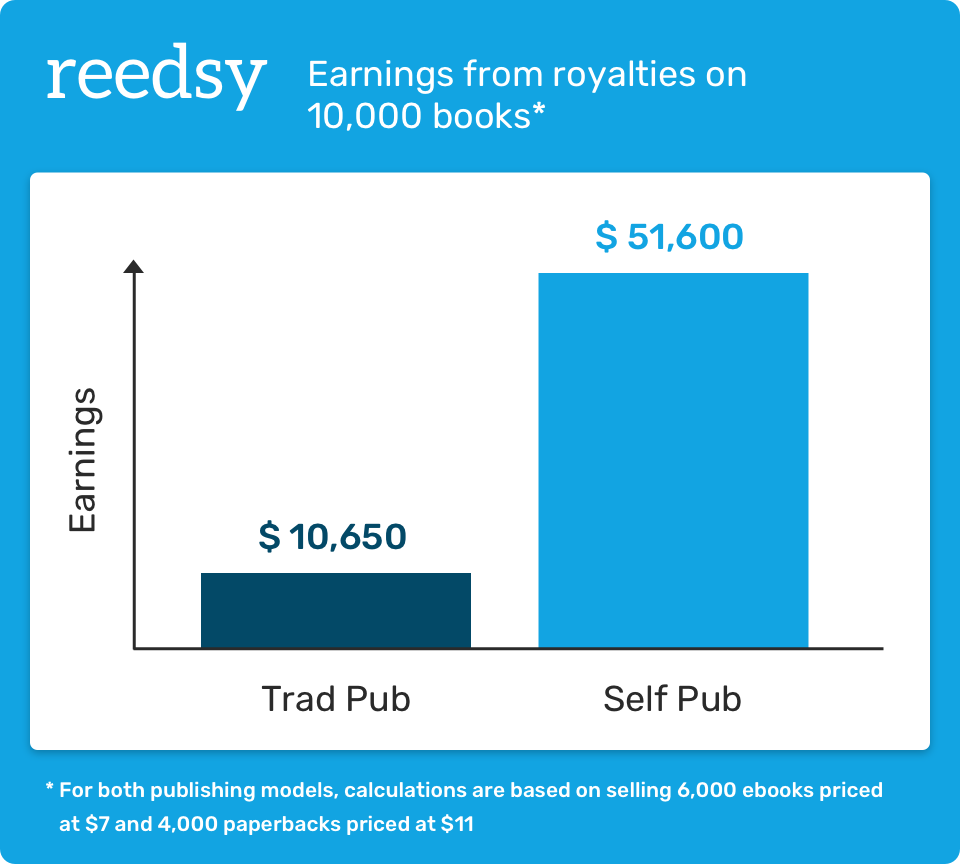
On the other hand, if you were to sell the same amount of copies independently, with 50% and 70% royalties for the two different formats, you’d make $51,600 一 five times as much.
This significant income difference means that, outliers aside, many more self-published authors make a living than traditionally published authors, with self-publishing royalty earnings outpacing trad pub’s advance plus subsequent royalties. This was proven by several years of Author Earnings reports — most notably, one study that divided authors into groups earning more than $10k, $25k, $50k, and $100k. The study found that the number of indie authors earning 5-6 figures/year from book sales was much higher than the number of Big 5 authors earning the same.
Curious about the success an indie author can achieve? Check out this list of 8 self-publishing success stories every author should know.
Though the raw data is no longer accessible to the general public, the Author Earnings methodology was extremely thorough and more reliable than any self-selecting author surveys. Their reports analyzed the sales data of up to a million published titles, extracted directly from Amazon’s website. With that in mind, the major findings were as follows:
- There were more high-earning self-publishing authors than Big 5 authors at every single publishing “age”. Whether an author debuted in the last century, the last decade, or the last 3-5 years, they were more likely to have a higher income as an indie.
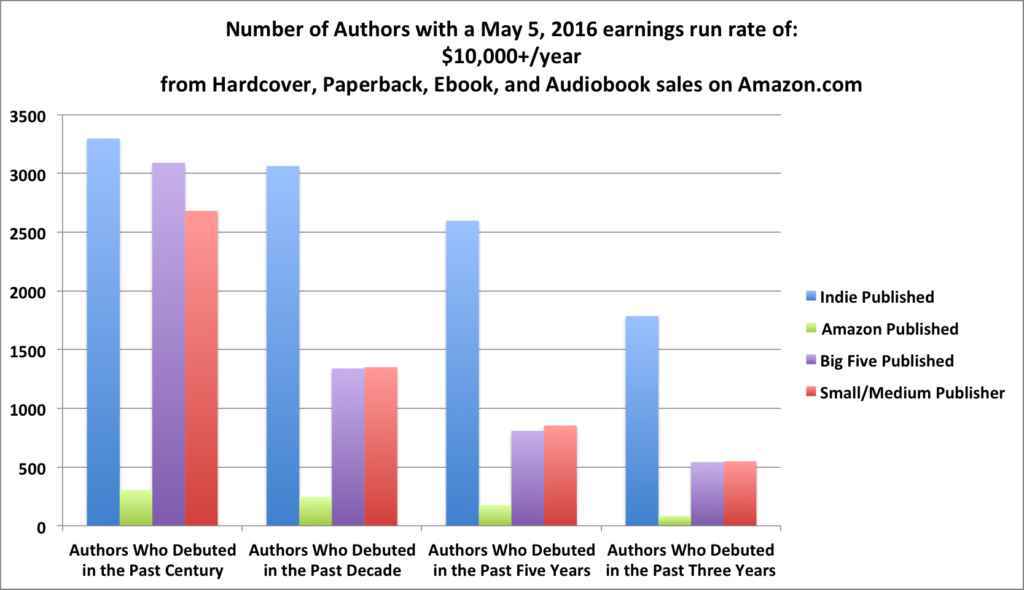
- The gap was much wider among new authors (those who’d published in the previous 3-5 years). Even looking at authors earning $50k+/year, indie authors outnumbered recent Big 5 authors by a factor of three (see the right side of this next graph).
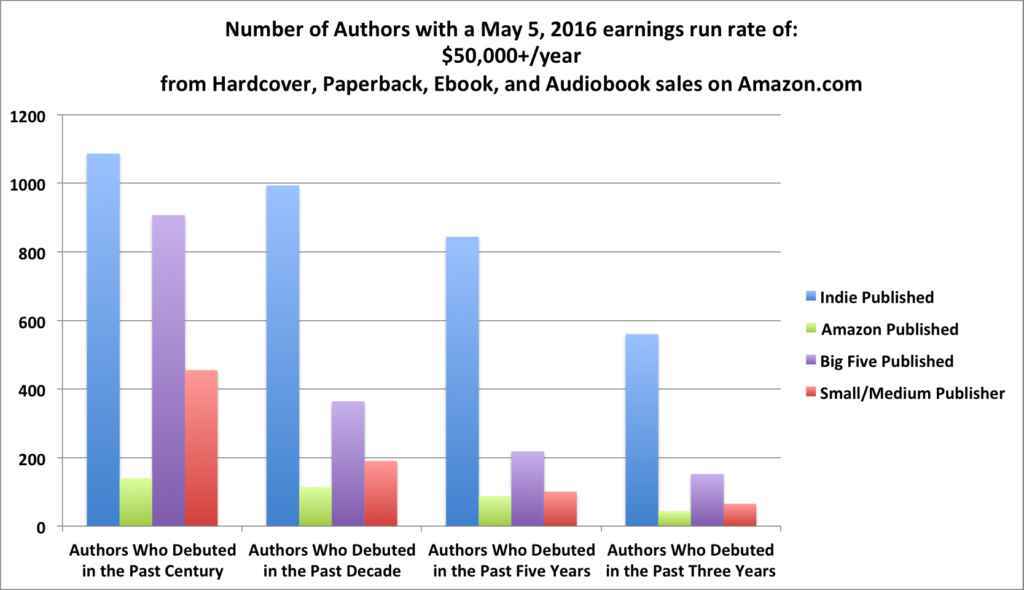
- Adjusting for non-Amazon sales still left indie authors with a significant income lead in every category except “authors who debuted in the past century” — which is no surprise, given the popularity of classics in brick-and-mortar bookstores.
In short, indie authors tend to make more than traditionally published authors, especially if they’ve recently debuted. This is partly because indie authors often work harder for digital exposure (extra helpful for those with extensive backlists!), but mostly because they receive much higher royalties than their traditionally published counterparts.
Is self-publishing or traditional publishing right for you?
Takes one minute!
Additional income streams for writers
In addition to book sales, there are several ways for writers to supplement their income.
Suppose your work gains enough traction to transcend the book format. In that case, you may receive royalties from subsidiary rights for screen adaptations (what people call having your work “optioned” by a company like Netflix), or merchandise, which can range from branded objects like mugs or posters to clothing or special editions of your books.
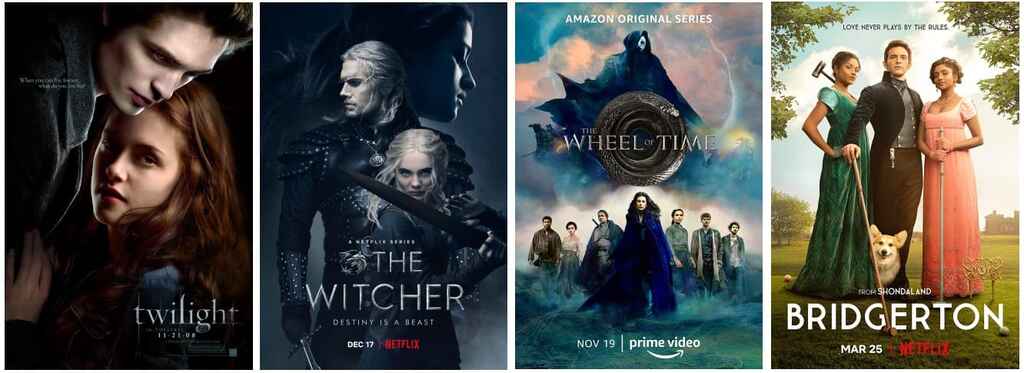
Many authors also choose to offer freelance services like professional editing and ghostwriting in order to grow their income. If that’s something you’re experienced enough to consider, Reedsy’s marketplace could help you find fellow authors in need of your help.

Get editing & ghostwriting requests sent to your inbox
There are 500,000+ authors on Reedsy need help publishing their book
Learn more about how Reedsy can help.
For more tips on how to pay the bills as an author, check out our 8 tips for making money by writing books .
Continue reading
Recommended posts from the Reedsy Blog

How to Publish a Book For Free: The 7 Best Sites
If you want to publish your book without spending a single dime, check out this handy list of 7 free self-publishing services.
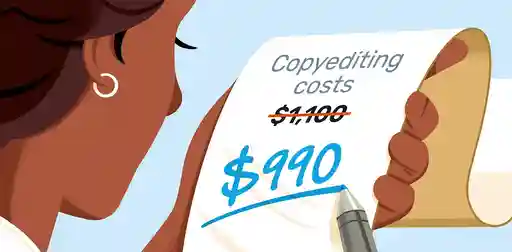
5 Ways to Save on Your Self-Publishing Budget
If you want to self-publish a book without breaking the bank, here are 5 tips to ensure you still get the best result possible.

30 Great Book Dedication Examples to Inspire Your Own
A list of 30 of the best book dedications in the business, that'll have you crying, laughing, and crying laughing.

Expository Writing: The Craft of Sharing Information
Expository writing is a fundamental part of how we learn and make sense of the world. Learn all about it in this post.

Additional Reviews: Query Critique December 2024
Additional critiques from Reedsy's December 2024 query letter session.

How to Make Money by Writing Books: 8 Tips for Success
If you want to be an author who makes a living from books, here are eight tips to help you make money as a writer.
Join a community of over 1 million authors
Reedsy is more than just a blog. Become a member today to discover how we can help you publish a beautiful book.
Do you need a literary agent?
Find out with our 1-minute quiz.

1 million authors trust the professionals on Reedsy. Come meet them.
Enter your email or get started with a social account:
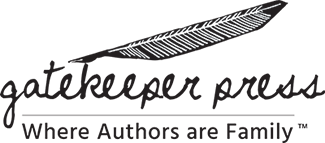
Ultimate Guide To Book Royalties for Self-Published Authors
by Gatekeeper Press | May 5, 2022 | Making Money
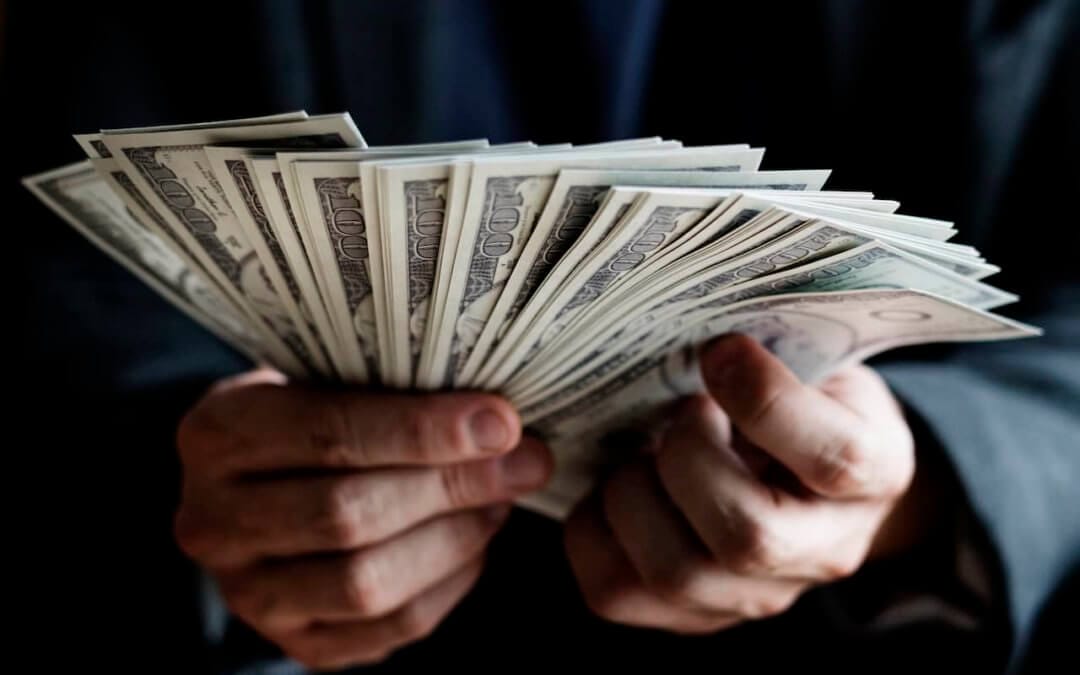
Table of Contents
You’ve decided to take the plunge into self-publishing , but aren’t quite sure how authors get paid when their book sells. Before you pour your heart and soul — and months of your life — into penning a book, let’s get you up to speed about how book royalties work.
As a fledgling writer, those juicy royalty rates, unique to self-published authors, were no doubt one of the tantalizing attractions that drew you to self-publishing in the first place. While true that a self-published author earns a royalty that’s about six times higher than that paid to a traditionally published author, there is obviously more to the story.
To learn all about book royalties, and self-publishing royalties, in particular, keep reading.
Book Royalties Explained
So, what are royalties, anyway? When an author publishes a book for sale he or she is paid a portion of the retail price that was collected from the consumer. This portion is referred to as a book royalty. The more books sold in a given period, the higher the royalty check.
There are significant differences, however, between the royalties paid to traditionally published authors and self-published authors. An author who publishes through a traditional publishing house is paid about a 7.5% royalty rate, which equates to about $1.00 per print edition sold. A self-publishing royalty hovers around 60% or about $10.00 per print edition sold.
With that kind of spread, you may wonder why anyone would ever choose the traditional publishing route! Well, here’s the rub. A self-published author makes some key tradeoffs. For example, he or she must pay for the cost of printing the book, which usually runs about $5.00/per print copy. So, right there your royalty has been halved.
Consider the other costs involved in self-publishing , born by the author alone, that must also be accounted for in the net proceeds. These include editing , formatting , cover design , and proofreading costs. A traditionally published author is typically not responsible for covering these costs.
How Are Book Royalties Calculated?
Noting that royalties are based on the price of your self-published book, setting an appropriate retail price is one of the most critical decisions you will make. There are several factors that can influence the retail list price and therefore the publishing royalties:
- Margin size
- Binding ( hardcover or paperback )
Other than the genre, all the other factors that affect print costs can be adjusted during the design phase of publication. Consider these examples:
If, for example, you wanted your paperback with 300 pages to be more profitable, you can adjust your margin size to reduce the page count. This small change reduces the print costs from $5.31 to $4.76 per unit.
Book Royalty Terms To Know
When an aspiring author is just becoming familiar with the publishing business, it can be helpful to learn the basic terminology regarding publishing royalties.
Book Royalty Advance
When an author signs a contract with a traditional publisher, he or she typically receives a book royalty advance upon signing. This is the only payment made until the book is in publication and enough units are sold to offset the royalty advance. This is called an advance against royalties and can equate to thousands of books.

Author’s Charges
Author’s charges are those expenses that will be charged against an author’s royalties. These charges are credited as they occur to book sales and debited against author accounts receivable or advances. Examples of author’s charges might include costs of proofreading, indexing, and any author alterations.
Royalties on Gross Sales
Authors benefit when the publisher agrees to pay royalties based on gross sales versus net. Royalties on gross sales are very cut and dried. Say you are paid a 10% royalty based on the gross sales of the book and your book sales were $20,000, then your take is $2,000.
Royalties on Net Sales
Most publishers pay royalties off the net sales. Net sales refer to retail sales with fewer expenses such as print costs, distribution, and retail discounts, and the net balance is what the royalty is then based on.
Graduated Royalties
Some publishers set up the book contract with what is called graduated royalties. An example is a starter royalty of 7.5% for the first 5,000 units sold, which is then increased to a 10% royalty for the next 5,000 units sold, and then to 12% for all books sold over 10,000 units.
Typical Book Royalty Rates
As you begin to research the various bookselling platforms available for self-published authors, you can get a feel for how book royalties work. Consider the self-publisher book royalty rates paid for print book sales on these two popular platforms:
Amazon KDP: 60%
Examples of royalties paid on Amazon would be:
- $5.59 after print costs for a 200-page paperback priced at $14.95
- $5.77 after print costs for a 350-page paperback priced at $17.95
B&N Press: 55%
Examples of royalties paid on B&N Press would be:
- $4.22 after print costs for a 200-page paperback priced at $14.95
- $4.67 after print costs for a 350-page paperback priced at $17.95
Now you know all about book royalties and how authors are paid. Interested in self-publishing your book to earn more royalties? Contact Gatekeeper Press !
Start Earning Author Royalties Today by Self-Publishing
If you have decided to pursue the self-publishing path to authorship, why not maximize your earning potential by teaming up with the pros at Gatekeeper Press . Our expert input will help you not only produce the most professional book possible, but also the most profitable one. Call Gatekeeper Press today at (866) 535-0913!
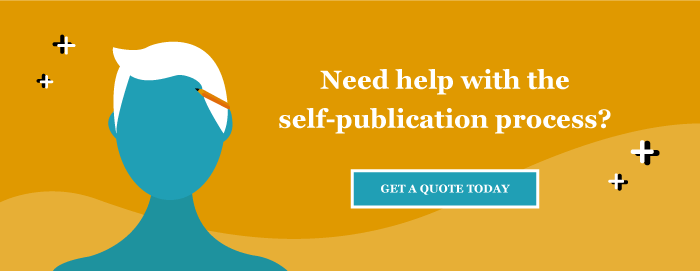
Free Consultation
- Kathi Kotchi Publishing Q&A
- Paperback vs. Hardcover: Best Option for Your Book?
- William Sutton Publishing Q&A
- How To Write Young Adult Romance Books
- Samuel Harrison Author Q&A
- Author Q&A (23)
- Editing (18)
- Making Money (7)
- Marketing (12)
- Publishing (61)
- Publishing Journey Q&A (3)
- Uncategorized (2)
- Writing (57)
How Book Advances and Royalties Really Work
by Kate Sullivan | 15 comments

Six-figure advance! Huge deal for new series by beloved bestselling author! Novel by new author goes for crazy amount at auction!
Industry headlines scream about how much traditionally published authors can make—massive advances, bidding wars on books—but have you ever stopped to really think about how published authors get paid?
With self-publishing, it’s pretty easy to figure out. You create a book, you get the book professionally edited and produced, you put the book into the marketplace via CreateSpace and Kindle (along with other venues, if you really want to cover your bases), you make sales, you get money.
You have to pay the editor and book designer and cover artist, yes, but then all the money that comes in from sales belongs to you, minus some small fees for distribution in ebook markets and the production costs of having paperbacks made via print-on-demand.
In some ways, calling the revenue from self-publishing sales “royalties,” like Amazon does, is misleading. That’s because you haven’t actually licensed your book to them—they’re really charging a distribution fee for their services. Royalties are something else entirely.
Advances and royalties are how the traditional publishing industry pays out. And they can be super-confusing, especially to a writer who’s used to the normal way of paying for things and getting paid, where you do work and someone pays you for it (or you pay someone else for their work).
Time to demystify traditional publishing payments!

How Advances Work
In the traditional publishing industry, everyone talks about advances. This is the big payday, the huge numbers that authors always aspire to. When you hear about a six-figure deal, they’re talking about the advance.
But what they’re not talking about is the fact that an advance is really just a loan.
That’s right, the advance isn’t a nice fat paycheck for that incredible book you’ve written. It’s actually a kind of payday loan, only with no interest.
What Does Advance Against Royalties Mean?
You see, advances are an advance on payment—which in this case means royalties. Advances are calculated based on how many copies of your book the publisher thinks they can sell in the first year, run through a standard royalty calculation.
In publishing, an “advance against royalties” is an advanced payment that will be offset by future royalty payments.
So if the publisher thinks they can sell a bajillion copies of your book in a year, they might offer a $500,000 advance—because they estimate that you’d receive $500,000 in royalties under their formula in that year (more on that shortly).
Earning Out
What you need to remember, though, is that you won’t receive a penny more until your advance earns out, which means that you actually sell the number of books it would take to earn that amount in royalties.
Which isn’t guaranteed.
Do You Have to Pay Back an Advance?
Now, the nice thing is, you don’t have to pay back the advance if you don’t earn out. That is, if the publisher estimates that you’ll sell 5 million copies of your book and pays you a huge $500,000 advance, but then your book only sells 12 copies to your immediate family, you don’t owe them back the difference.
The problem is, if that happens, you’re probably not going to be able to get another traditional publishing deal. No one likes betting to lose, and authors are judged based on the success of their last few books.
Installment Plan
The other thing to keep in mind about advances is that they’re typically not paid in a lump sum. Most of the time, you’ll get part of your advance when you sign the contract with the publisher, part during the writing and editing process, part when you deliver the final manuscript, and a final installment when the book is actually published and on shelves.
So that $500,000 is actually a few payments made over time (usually 3-4, depending on your publisher).
Granted, this can be really nice if you’re writing full-time, as it helps you spread your income over the time it takes to get the book to market, rather than having to manage your money over that time yourself. It’s a little more like getting a regular salary and a little less like winning the lottery.
But remember, after you receive that last installment, you won’t get paid a penny more until your book sells enough copies that your royalties equal the advance amount.
So that advance money really needs to last. While advances are calculated based on how much a publisher thinks a book will earn in only a year or two, in reality, it can take five years or more to earn out a big advance.
Average Advances
Now, most advances aren’t huge $500,000+ paydays. In reality, most midlist authors get maybe $10,000 as an advance, and that’s often for a whole series of 3 to 5 books. New authors may not get much of an advance at all, often only $2,000 to $5,000 even at a major traditional publisher.
And at a small press, authors often won’t get an advance at all. Betting on sales like that simply isn’t a gamble most small presses are willing or able to take.
However, small presses often compensate for the lack of up-front payment by offering larger-than-standard royalties, and offering them immediately. There’s no waiting for payment and you get payments regularly, instead of getting paid once and then waiting around to see if you’ll ever get paid again.

How Are Book Royalties Calculated?
We’ve mentioned a little about how royalties work when talking about advances, but let’s go into more detail.
If advances are like payday loans, then royalties are like bill payments—they happen regularly in exchange for giving something of value.
That’s because of how traditional publishing contracts work.
In a traditional publishing contract, you’re actually licensing your work to the publisher. You wrote the book, you own the intellectual rights in it, and you’re asking the publisher to help you bring it to market and get other people to pay for it.
So instead of paying out of your pocket to get the book edited and designed, like in self-publishing, you’re asking the traditional publisher to do that for you. Which makes sense—that’s their specialty, after all!
But in exchange, the publisher wants some money. That’s only fair, because they’re paying for editors, compositors, cover artists, PR and marketing people, printing costs, distribution, and so on.
So what happens is that you license your work to the publisher. They produce the book and get it into the marketplace. When the book sells, the publisher keeps some of the money and pays you a licensing fee, which is your royalties .
Average Royalties
Now, average royalties in the traditional publishing industry are based on a lot of things—and the numbers tend not to look pretty to authors. Most traditional publishing contracts have layers upon layers of different royalty calculations based on various benchmarks, and all of them can feel pretty small.
For instance, average royalties for a paperback book are usually 6-8%, while royalties for a hardcover are 8-10%. That’s a percentage of the list price of the book—whatever the publisher has suggested that bookstores sell it for. In the case of a paperback, that’s usually $5.99 to $8.99, while hardcovers tend to list at $24.99.
Ebook royalties vary, but tend to hover around 10% with many traditional publishers. Savvy publishers have started to raise royalties to about 25% for ebooks, as they know modern authors are smart enough to realize that publishers don’t have to pay for paper or shipping from their portion of ebook sales revenue, and so it’s only fair that digital copies should provide more income to the author!
Smaller independent publishers often offer much larger royalties than the Big Five. For instance, TCK Publishing offers 50% gross royalties !
However, this figure is based on gross revenue from the book instead of list price, as with the Big Five. Gross revenue means whatever money the publisher actually receives from a sale, rather than what the suggested selling price of the book is. So the figure your royalties are based on is the list price minus any discounts that were granted to the distributor, minus any physical production costs for a print book.
You can learn more about how gross royalties work here.
Sliding Scales
If you sell more than a certain number of copies, your royalties may increase. This is called a breakpoint . So you might be getting 8% royalties on all paperback sales up to 10,000 copies, but after 10,000 copies, you’ll go up to 10% royalties because you’ve proven through sales that your book is valuable to the publisher, so you get rewarded.
It’s kind of hard to keep track of all this, so conscientious publishers send out royalty reports with their payments. The format of these varies depending on the publisher, and not all publishers include all kinds of information with their reports.
At the very least, you should get a document explaining how many sales you made of what format in the period you’re being paid for. So you might get a report listing how your sales of 457 paperbacks, 21 hardcovers, and 5,671 ebook sales add up to the total amount of royalties you’re receiving this period.
If you received an advance, the royalty report should also list how you’re doing on repaying that amount. Basically, with an advance, you start with a beginning balance of negative that amount (say, -$500,000) and then your royalties are applied to clearing that negative balance before you start getting paid again.
Reserve Against Returns
Of course, it’s still not as simple as that!
Traditional publishers often hold what’s called a reserve against returns for books. That’s because bookstores can return unsold books at pretty much any time, for full credit or a full refund.
So if your book was predicted to be incredibly popular, a bookstore might order 100 copies. But then for some reason, it flops and only 3 copies sell. The store can return all 97 unsold copies—up to a year later—and the publisher will give them full credit.
To avoid taking a loss on the deal, the publisher holds a certain amount in an account that goes against your royalties. This is the reserve against return. Periodically, they’ll reconcile the actual amount of books returned against this account, which is kind of like an escrow, and will either deduct the appropriate amount for the returns that actually happened or release money to you because returns were lower than expected.
(Obviously, as an author, you want low returns!)
Still, this account gets really confusing really fast, especially because it means that you won’t always be getting paid the full amount of royalties your statements show you’ve earned. But you can check the size of the reserve against returns account on that statement to be sure that all your sales are properly accounted for somewhere, even if you’re not actually getting the money just now.
When Do You Get Paid?
After all this, you probably just want to know when you get paid!
Unfortunately, even that’s kind of complicated.
Traditional publishers pay on a variety of schedules. Some pay quarterly (every 3 months), while others pay twice a year or even only once a year. So once you’ve earned out your advance, you may still have to wait 6 months or more to get the money you’ve earned in royalties.
Plus, some publishing contracts specify that you have to meet a certain threshold before you get paid. This is usually pretty low, only $25 to $50, but it’s worth keeping in mind, especially if you’re publishing with a small press and don’t expect a ton of sales.
Once that check comes, it could be big or small, depending on how well your book is selling. So you can see that being a traditionally published author is going to require some really smart money management, even if you’re incredibly popular and your books are selling like crazy! The gap in between payments can be a long one.
Why Choose Traditional?
Given all this complexity behind getting paid, why would anyone choose a traditional publisher over publishing by themselves?
Well, for one, traditional publishers often have a broader reach than anyone other than a celebrity can match. They can get your book into thousands of bookstores all around the world, promote it with the resources of a full marketing department, arrange for book tours and interviews with major media, and more.
Granted, that kind of special treatment tends to be limited to authors with established track records of being bestsellers. New authors have to do much of their own marketing work, even with a Big Five contract.
However, writers want to write. By selling a book to a traditional publisher, you don’t need to worry about managing a team to produce the book, or figure out how to do formatting or uploads. And you don’t have to pay up front or out of pocket for all the things that are required to release a professional publication.
Basically, by licensing the publishing company your work, you’re paying them to do the behind-the-scenes stuff for you. To many authors, that’s well worth the cost.
Getting paid in traditional publishing can be confusing and complicated, but it also means you don’t have to pay up front for production. Only you can decide what form of publishing is right for you!
For more on how authors get paid, read on!
- How Self Published Authors Get Paid for Paperback Sales
- How Self Published Authors Get Paid for Ebook Sales
- How To Earn a Full-Time Income as an Author
Kate Sullivan is an editor with experience in every aspect of the publishing industry, from editorial to marketing to cover and interior design.
In her career, Kate has edited millions of words and helped dozens of bestselling, award-winning authors grow their careers and do what they love!
15 Comments
I have written a book and would like to have a list of good publishing companies that would be interested in publishing a book by a first-time author. My book is fiction and is about a tennis player. It also has romance and humor in it. It is a very clean book with no swear words in it, so it would be a book that could be read by readers of all ages.
Thank you for any advice you can give me.
So, let’s say you get a $50,000 advance for your first book. Is it taxed as a royalty or something else?
What exactly is ‘enhanced royalties’. Is it an advancement.
A publisher was promoting enhanced royalties and subsidiary rights.
Hi Lesley, I don’t think it’s the same as an advance, I would assume it means a higher royalty rate than what would normally be offered. Subsidiary rights usually means the right to create ebooks, audiobooks, and other forms of media from the book.
I have paid a traditional publisher upfront fee of $8,964.00 Australian to edit and publish my book. He said I will get 10% of the Royalties. He then placed in the contract Advance against Royalties of $1828 already applied. What does this mean. Is he going to take this out of my royalties before I receive any money from Sales
Hi Pam, I’m not really sure. Did you receive an advance? Because “advance against royalties” means you receive an advance (which is how much the publisher predicts you would earn in royalties in the first year), then you wouldn’t receive any more royalties until your book actually earns out the advance amount. But if they didn’t actually pay you an advance I’m not sure what that means
Thanks for this info!
You’re very welcome, Stacy! :)
I’M NEARLY FINISHED WRITING MY FIRST BOOK,AND IM SEEKING A TRADITIONAL PUBLISHER TO PRODUCE THE FINISHED PRODUCT. IM NEW TO ALL OF THIS BUT WILLING TO THE UTMOST TO TURN MY LIFETIME DREAM INTO REALITY. ID APPRECIATE YOUR SOUND ADVICE.
Hi Felix, what genre is your book? I can point you to a list of publishers based on your genre :)
Thanks for this most useful article! How do I find an account, or other professional, to review my contracts and royalty statements to determine if I am getting paid the correct amount?
I meant accountant!
Hi Luke, thanks for your comment! I don’t have any specific advice to offer on finding an accountant, but you might find this article helpful— they discuss working with accountants for writers and authors. I hope that helps!
Thank you Kate for this great overview. Fredrike Bannink, author of 50 books
Hi Fredrike, thanks for your comment. We’re glad you found the post helpful!

Learn More About
- Fiction (223)
- Nonfiction (71)
- Blogging (46)
- Book Promotion (28)
- How to Get Reviews (9)
- Audiobooks (17)
- Book Design (11)
- Ebook Publishing (13)
- Hybrid Publishing (8)
- Print Publishing (9)
- Self Publishing (70)
- Traditional Publishing (53)
- How to Find an Editor (11)
- Fitness (4)
- Mindfulness and Meditation (7)
- Miscellaneous (116)
- New Releases (17)
- Career Development (73)
- Online Courses (46)
- Productivity (45)
- Personal Finance (21)
- Podcast (179)
- Poetry Awards Contest (2)
- Publishing News (8)
- Readers Choice Awards (5)
- Reading Tips (145)
- Software (17)
- Technology (15)
- Contests (4)
- Grammar (59)
- Word Choice (64)
- Writing a Book (62)
- Writing Fiction (195)
- Writing Nonfiction (68)

- In the News
- Film & TV Licensing
- Purpose & Core Values
- Ingenium Guarantees
- Publishing Model
- Hybrid Compared
- Publishing Package
- Author Services
- Launch Team Training for Authors
- Ingenium Books Podcast
- Blog Articles
- Author Coaching
- Foundations of Memoir Masterclass
- The Best Memoir
- One Million Readers
- Andrea L. Wehlann
- Colleen E. Clark
- Corrina Grace
- Cynthia Barlow
- Gwyn Teatro
- Heidi Hackler
- Henrik J. Mondrup
- Jack F. Rocco, MD
- Jamie Sussel Turner
- Lauren Clucas
- Marjorie Aunos, PhD
- Marie Beswick Arthur
- Dr. Peter Silverstone
- Dr. Pranathi Kondapaneni
- Tanya Hackney
- Tricia Jacobson
- Yvonne Caputo
- Christina Sisto
- Our Catalogue 2022
- Choices by Lauren Clucas
- Come Passion by Colleen Clark
- Deeper Days by Andrea L Wehlann
- Dying with Dad by Yvonne Caputo
- Flying With Dad by Yvonne Caputo
- Listen for Water by Marie Beswick Arthur
- Mom on Wheels by Marjorie Aunos
- Nova, The Courage to Rise by Tricia Jacobson
- Recycled by Jack F Rocco
- Stillness in the Storm
- The 49th Protocol by Todd Gray
- The Picture Wall by CA Gibbs
- The Promise of Psychedelics by Peter Silverstone
- The Weaver’s Way by Corrina Grace
- Titles area under development
- Submit Manuscript
- Get the Ingenium BooksLetter!

5 comments
Demystifying Royalties for Authors
By Boni Wagner-Stafford
July 28, 2021
Royalties for authors. We work with words, not necessarily numbers. What’s the story behind these numbers? What am I seeing on my statement? What should I see? We’re answering these and other questions in this post. Let’s be honest: you don’t spend months–or even years–of your life writing a book, getting it professionally edited and proofread, designing a cover, and doing marketing without hoping you’ll make some money. Even if the money isn’t your “why,” every author hopes to earn at least enough to recoup what they’ve invested on getting their book published in the first place. Regardless of your publishing route. The pay you get for all your effort comes in the form of author royalties. So how do they work?
This post is based on a conversation, with John Wagner-Stafford of Ingenium Books, from The Empowered Author Podcast , episode #39. Listen here:
Want to be considered as a guest on our podcast? We’d love to hear from you .
What exactly are royalties for authors?
Author royalties are what a publisher pays you as an author for the rights to sell your book. Since they’re calculated as a percentage of your book sales, they’re similar to how a business owner will pay themselves from the profits the business makes. In other words, they’re not a set amount.
What percentage of royalties do you earn as an author?
According to John Wagner-Stafford, co-founder of Ingenium Books, the percentage of royalties you can earn depends entirely on your contract with the publisher. And royalty structures generally depend on the type of publisher you’ve opted for:
- Traditional publishing: With a traditional publisher, you generally earn between five and fifteen percent royalties. Paperback books normally earn a smaller percentage than hardcover books. Ebooks tend to earn a higher percentage: sometimes as much as twenty-five percent.
- Self-publishing: If you self-publish your book, you earn 100 percent of your royalties.
- Hybrid publishing: With a hybrid publisher, you typically get paid between forty and sixty percent royalties.
How are royalties calculated?
There are two ways for publishers to calculate royalties: on the retail sales and on the net sales.
- When royalties are calculated on retail sales, they’re calculated as a percentage of the retail price of the book. For example, if your contract states that you’ll earn ten percent of royalties on retail sales and your book sells for $20, you’ll earn $2 per copy of your book sold.
- When royalties are calculated on net sales, you earn a percentage of whatever earnings are left over once discounts and expenses have been factored in. This is the more typical scenario for hybrid publishers. Even in self-publishing, that 100 percent in royalties you earn is normally based on what comes in after distribution costs have been subtracted and your publishing platform has taken their cut. How much this is varies from one publishing platform to another. Amazon’s Kindle Direct Publishing – or KDP – generally pays between thirty-five and seventy percent minus distribution cost for ebooks and between forty and sixty percent minus printing costs for paperbacks.
Advances on royalties
You often hear about a politician or celebrity landing a book deal with an advance of thousands of dollars. An advance is an amount of money the publisher pays you upfront, before the book has been published.
Many new authors fall into the trap of thinking an advance is an amount of money on top of what they’ll be earning in royalties. However, the advance is really like a loan: once you start earning royalties, the publisher will first use them to pay back the advance amount. You won’t see any royalty payments until that amount has been paid off in full.
Holdbacks against r eturns
When a bookstore orders your book, they’ll order a certain number of copies and keep them in stock for a certain time period. They then may opt to return the copies that don’t sell within this time to the publisher, and the publisher refunds the money they’d spent on these unsold copies. Traditional and hybrid publishers generally hold back a certain amount of money to cover returns. If you’re a self-published author, it’s a good idea to have a similar buffer so that you don’t have the scenario of looking at your sales for January, spending your money and then in February or March you suddenly have to fork out for returns.
How often do you get paid?
How often you get that royalty payment really depends, again, on your publisher. Amazon’s KDP, for example, pays every month, approximately sixty or ninety days after the end of the month in which your sales have been reported. For example, you’ll be paid at the end of March or April for however many books you sold in January. (Sixty days except if you’ve opted into expanded distribution, in which case it is ninety days.)
Traditional and hybrid publishers generally prefer paying either twice a year or quarterly. This way, you get a bigger lump sum rather than hundreds of small payments of only a few dollars throughout the year.
As with KDP and other online publishing platforms, there will be a significant period of time between when the books sell and when you actually get paid. For example, you may be paid at the end of the second quarter of the year for the books you sold during the first quarter: so, at the end of June you may get paid for the books you sold between January and March.
How important are royalty statements?
When you receive a royalty payment, you will normally get a royalty statement too: a summary of how much you’ve earned in royalties within that payment period. These statements can be very helpful to you as an author, and not just for the purposes of doing your tax returns.
Because the royalty statement tells you how many books you’ve sold and how many were returned, you can use them to tell whether your marketing strategy is working or not. If your statement shows a low number of books sold or a high number of returns, you’ll know that you need to ramp up your marketing efforts and maybe even change your strategy completely to try and sell more books.
Over to you
What’s been your biggest learning about royalties on book sales? Are your statements making sense to you? If you’re with a publisher, what’s the statement and payment frequency?
What do you think?
looking for royalties owed for books by Richard W, McDowell: Vietnam Days and California days
Richard, you would have to contact your publisher, perhaps through your legal representative.
The book publishing LAP or Lambert Academic Publishing claim that they pay authors 12% of their book retail sales. This fact did not apply in my case because this organisation wrongfully claimed that they did not sell and of the books that I was author to. We had a contract for the royalties to be paid or equavilant book purchasing rights supported but for 5 years they repeatedly wrote me that nothing was sold. How can I confirm on the numbers that were sold and what is owing to me?
David, I’m sorry you’re having this trouble. There are ways to check how a book is doing, however it is only the publisher that receives the specific sales data for a title they’ve published. You can check online retailers like Amazon or Barnes & Noble and look at a book’s sales rank and # of reviews. This won’t tell you numbers of copies sold but it can tell you how popular a book is compared to similar titles. If your book has a good ranking and lots of reviews, that would tell you that some copies have sold, but it won’t tell you how many. Publishers may have contractual language that permits them to withhold royalty payments to an author unless royalties in a particular period (e.g. a quarter/3 months) do not reach a certain threshold, but they will usually report these sales even if no payment is due. It is, unfortunately, not out of the realm of possibility that a title does not sell any copies — if there was not a good match of content/cover to a targeted reader audience and if there was not a robust pre-launch and launch marketing campaign. We have taken a quick peek at Amazon and if your book is Consequential Macroeconomics, it could very well be that the retail price (showing at $88 for a paperback) is very much working against you. Not many people today will spend that much money for a book, no matter how good it might be! Seems like you might have an option to write to LAP and request a price change, or request a termination of the agreement, and consider a revision/republishing strategy. Just our initial thoughts.
[…] Demystifying Royalties for Authors […]
Submit Your Nonfiction Manuscript to Work With Us at Ingenium Books
Session expired
Please log in again. The login page will open in a new tab. After logging in you can close it and return to this page.

- Write for us
- Self-Publishing
Home → Publishing
Book royalties for authors: how do they work.
You’ve probably come across the term royalties if you’re a reader or considering becoming an author.
In the simplest terms, a royalty is what publishers pay an author for the rights to publish his or her book.
But how do book royalties work? How do authors earn a living from royalties?
In this article, we will share everything you need to know about book royalties, how they’re calculated, and what advances are.
What Is a Book Royalty?
Let’s say you’ve submitted a book to a publisher, and they’re ready to publish. Before going any further, you (the author and copyright holder of the book) need to grant the publisher the right to publish your work for an agreed-upon fee. This fee is called a royalty.
Royalties are usually paid out as a certain percentage per sale. All of this will be outlined in the contract between you and the publisher.
Book publishers usually have standard royalty rates for different versions of your book. So the royalty for a paperback, hardcover, eBook, and audiobook will be different.
Royalties are common in traditional publishing, where you sell the right to your book to the publisher. Whereas self-publishing, you set the price and decide the profit margin.
How Is a Book Royalty Calculated?
Royalties are calculated and paid out to you based on a percentage of every individual sale of your book.
Let’s take an example. If you and the publisher have decided the price of your book will be $20, and you receive a 7.5% royalty on it, you earn $1.50 per sale. The remaining $18.50 goes to the publisher. Royalties like this, based on the retail price of the book, are called list royalties or retail royalties.
Sometimes, publishers pay you royalties on net sales when they sell your book to different outlets at different prices. For example, a publisher might sell more copies of your book to a bigger retailer (and therefore at a higher bulk discount) than they would to a smaller bookstore. Publishers then calculate royalties on net sales after taking the discounts into consideration.
Since list royalties mean that your book is sold at a higher price, it might be a better option.
What Are Some Typical Book Royalty Rates?
On average, traditional publishers offer the following royalty rates:
- Audiobook: 25%
- Mass-Market Hardcover: 15%
- Trade Paperback: 7.5%
- Mass-Market Paperback: 5%
Some publishers may vary slightly with their royalty rates.
Other publishers might offer graduated royalties. In this contract, you’re offered your royalties only after a certain number of sales. For example, you could get 4% on your first 1,000 paperback sales, 6% on the next 1,000, and finally, 7.5% on every sale afterward.
On Book Advances
Royalties might seem like the best option for an author, but here’s the caveat: you don’t earn them right away. You only get your royalties once you earn your advance.
An advance is a negotiated upfront payment a publisher gives to an author. In essence, an advance is an advance on royalties.
For example, if your agreed upon royalty for a $20 book is 7.5%, and a publisher decides to pay you an advance of $1500, you’ll only receive royalties after 1,000 sales. That’s because your 7.5% royalty on a $20 book is $1.5, and $1.5 times 1,000 sales is $1500.
There’s no average advance in the market. Six-figure advances are mostly found in large publishing houses. Five-figure or smaller advances are quite common.
There are differences in advances based on how many sales publishers predict. So, if an author has made quite a name for themselves or they have a history of books with high sales, it’s more likely that they’ll get a comparatively larger advance on their royalty. Publishers won’t risk giving you a heavy advance if you’re a first-time author or if you’re writing on a niche subject.
Keep in mind that royalties aren’t a donation. Publishers expect to make back the money they paid you. So, if your book doesn’t meet their expected profit margin, they’re unlikely to publish your next book.
Selling Out a Book Advance
So let’s say everything goes well, and your book sells enough copies to match your advance. So, what’s next? Let’s take our previous example of the $1500 advance.
Your book has sold 1,000 copies in the first month. Then, over the course of the next eleven months, an additional 4,000 copies have been sold. What do you get?
Depending upon your contract, you get paid royalties per specific increments. So, if your publisher decides that they pay you royalties for every 500 sales, you get paid $750 for every additional 500 sales.
So, over the year you made $1,500 (Advance) + $750 (First 500-sale increment) + $750 (Second 500-sale increment) + $750 (Third 500-sale increment) + $750 (Fourth 500-sale increment) = $4,000 in royalties.
Amazon Self-Publishing Royalty
Self-publishing might be a better option because you get to keep the rights to your book. KDP’s royalties in that sense aren’t really royalties (even though they’re termed as such).
If you choose to self-publish with KDP, you have two royalty options for eBooks: 35% or 70%. There are certain conditions that come with either choice.
The important thing is that you have full rights over your book.
Are Royalties the Only Way to Go?
An author need not limit him or herself to only royalties and advances to make money. Sometimes, they don’t necessarily work towards the author’s best interest because they overemphasize book sales.
Authors can give talks, build a personal brand, offer coaching, or launch exclusive content to earn their living. Because let’s be honest, not every author is going to sell a million copies of their book.
So, if you’re thinking of publishing a book, weigh your options, make an educated prediction on your sales, and see what selling option works best for you.
If you want full rights over your book and control over pricing, self-publishing could be a better option. But if you know you’ve written a piece that will only sell with the right publisher, royalties are the best way to go.
You May Also Like

Publishing Your Novel: 4 Secret Pet Peeves of Acquiring Editors

Three Things to Remember About Joan Didion: Prolific Author and Essayist

J.K. Rowling’s Secret Book
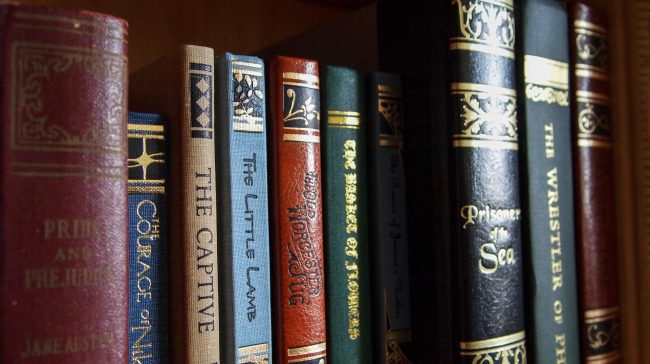
How To Find Publishers? (If You Choose The Traditional Publishing Route)
- Self-Publishing
Book Royalties: 6 Solid Secrets New Authors Need To Know
- September 22, 2022
Popular Posts
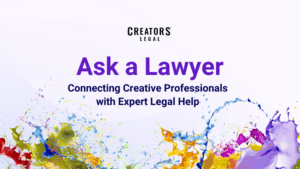
🔥Get Ready, Creators! ‘Ask a Lawyer’ is About to Change the Game – Coming Soon!🚀

Why You Should Get Your Guests to Sign a Podcast Release Form

Why Songwriters Need to Protect Their Assets with Copyright

Why Photographers Need To Know About the Model Release Form
- amazon kindle , apple books , Author , book royalties , book royalty , Book writer , e-book , Published author , Publishing , self publishing , Self-published author

If you’re an aspiring author, you must have heard of book royalties. These are payments that publishers make to an author for publishing their book, which is also how authors earn money. The process behind royalties often confuses many first-time authors, prompting questions such as when they can start earning royalties and how much they can make.
Understanding royalties is crucial if you want to be a full-time writer. It will help you figure out a contract that favors your best interests. Here’s what you need to know about book royalties and how much you can earn as an author:
1. What Are Book Royalties
A book royalty is the amount that a publisher pays an Author in exchange for the rights to publish their book. Royalties are a percentage of book sales, which means that an author can earn 7.5% royalties on every paperback sold and 25% royalties on every e-book sold.
Royalties are a staple in traditional publishing, but they don’t exist in self-publishing since authors determine the prices and the profit margin.
Even though many authors depend on royalties to earn money, they don’t always favor the author since it compels publishers to prioritize book sales instead of quality.
2. Book Royalties Aren’t the Only Way to Earn Money
Authors can make money through various other ways apart from selling their books. They can become a guest speaker, look for new clients, offer consulting services, launch a related product, or create a personal brand.
While the best-case scenario is to write a book that flies off the shelves, that doesn’t always happen, so exploring more ways of generating income is ideal.
Unfortunately, publishers only buy books they think will sell in large numbers, marketing them to the largest audience possible. Revenue can come slow, but if you work hard enough, you will become an earning author.
3. The Typical Rates for Book Royalties
Generally, the average royalty rate is around 10% under traditional publishing and 70% under self-publishing.
Traditional publishing:
- Trade paperback sales: 7.5%
- Hardcover sales: 15%
- Mass-market paperback sales: 5%
- E-book sales: 25%
- Audiobook sales: 25%
Self-publishing:
- Amazon KDP (Kindle Direct Publishing): up to 70% royalties for books between $2.99 and $9.99, 35% if below $2.99
- Apple Books:> up to 70% royalties
- Google Play Books: up to 70% royalties
- Barnes & Noble: up to 70% royalties for e-books, 55% for prints
- Kobo: up to 70% royalties for books priced more than $2.99, 45% if below $2.99
However, some contracts for authors include graduated royalties, which means you’ll earn an increased percentage once you sell a certain number of copies.
4. Calculating Book Royalties
For the most part, publishers pay royalties based on the book’s retail price . For instance, if the book sells at $25 and the royalty rate is at 5%, you will earn $1.25 for every book sold. These royalties are usually called list or retail royalties .
Retail royalties are the best deal you can get. Because if your book enters the best-selling list, you will have stability in your income.
Sometimes, publishers pay authors royalties on net sales , which involves selling the books to bookstores at different prices. What you earn depends on how much it sells at these outlets; of course, after factoring in price differences and discounts.
5. All About Advances
An advance is an up-front payment that a publisher pays an author for the right to publish their book. While you may have heard of advances worth millions of dollars for top-rated books from major publishers, the reality is that most advances are much smaller.
Six-figure advances are typical in large publishing houses, and five-figure advances are more common everywhere else. However, it is also possible to receive small advances, especially from academic presses.
It’s important to note that you won’t earn royalties until your book has sold enough copies to repay the advance.
6. Self-Publishing Royalties
E-books are terrific for making a big first impression. And, because you don’t need an agent to publish an e-book, you can keep everything you earn. You can self-publish your work on platforms like Amazon KDP (Kindle Direct Publishing) , Apple iBooks , Barnes & Noble, and more!
Also, when you self-publish, you don’t have to share your book royalties with a publisher. Instead, you keep all the money from sales. Self-publishing royalties are much smaller than what you would get if you handed over the rights to a New York publisher.
For self-publishing, you have to take into account many things. You are alone for editing, creating the cover, making the marketing efforts, etc. In other words, you’ll have to hire an illustrator for the cover and a book editor to check your work. If you want to take this path, keep yourself and your book safe by getting a contract between author and illustrator and a contract for hiring an editor .
Book royalties can be tricky to navigate if you’re a first-time author. However, by understanding how it works, you can get the best deal possible. One that protects your interests and the best royalty rates.
So, how can you negotiate these deals and be sure the publisher will comply? Get a contract agreement, where you’ll decide which rights are you willing to give the publisher and what are you earning.
If you don’t want to take chances with your work, you can self-publish it and earn the full profits or at least a significant portion of them. Whether you choose the traditional approach or self-publishing your work, you must ensure that you are safeguarded at all times.
Get the best contract for your situation and don’t take any risks! It is only your lifetime work, and you must protect it at all times!
Creators Legal is the first and only legal platform for content creators. We designed a platform just for content creators to craft simple, straightforward, and trustworthy contracts in a fast, easy-to-use platform. With a powerful form builder, a secure e-signature system, and your own personalized dashboard to store and organize all your contracts, you can get yourself protected in minutes without the need for expensive entertainment lawyers!
Recent Posts

Essential Tax Deductions for Independent Creators
Tax season can be a complicated time for independent creators, who must sift through various potential deductions. Unlike traditional employees with W-2s, creators must understand

How to Negotiate Film Distribution Deals in 2024
Introduction So, you’ve produced a movie. The next step is getting it in front of audiences worldwide. This is achieved through film distribution deals, which

10 Essential Tools for Independent Filmmakers in 2024
Ready to enhance your independent filmmaking skills? The opportunity to create engaging film content, without the constraints of a hefty budget, is now a more

Leased Beats: Empowering Women in Music
Is it possible for women to embark on a lease-to-success journey in the music industry? The answer is a resounding yes, and the instrument that’s
Subscribe to Our Newsletter
Join our community and subscribe to the newsletter for updates, useful info and special offers.
GO TO BRIEFCASE
© 2021-24 CreatorsLegal.com, Inc. Creators Legal is not a law firm and cannot provide legal advice. We are a self-help online and software service and do not provide or participate in any legal representation. We are not a substitute for a lawyer, law firm or professional legal advice. We are not a ‘lawyer referral service’. Use of CreatorsLegal.com is subject to our Terms and Conditions and Privacy Policy .
Do you want to leave?
You are about to leave the current page. Please note that your changes will not be saved if you are not logged in. If you would like to access the draft of your contract please login in or register before leaving this page.
We use cookies to personalize content and ads, to provide social media features and to analyze our traffic

Book Royalties, Explained and Demystified
Let’s talk about book royalties.
Despite the regnal-sounding name, book royalties have absolutely nothing to do with kings, queens, or the aristocracy.
You can think of royalties as the lifeblood of the publisher-author relationship. It’s there to nourish both parties, helping them to thrive and enabling them to create and distribute even more books to readers all over the world.
Without royalties, most writers would have little incentive to write, while publishers would have nothing to publish in turn. The publishing industry as we know it would cease to exist.
Table of Contents
Why should you learn about book royalties
We know that all of this talk about money, contracts, and royalties can seem scary and overwhelming.
Lots of questions might be popping into your head right now. Like… Why are book royalties important? How exactly do they work? Are they necessary for your writing career? How much can you expect to earn if you do opt to earn from them? And how can you maximize the earnings that you’ll get from royalties?
These are all valid questions that all writers, regardless of experience, should be asking.
Why are book royalties called… royalties
Before we get into the meat of the matter, let’s answer this question first:
Why are author payments called “book royalties” when they seem to have no connection to actual royalty whatsoever?
Though we might have mentioned earlier that the modern meaning of the term has nothing to do with the aristocracy there is, in fact, a small connection that dates back to medieval Britain.
Book royalties – some brief notes on etymology
There used to be a time when mines containing “royal” metals like silver and gold were exclusively owned by Britain’s ruling monarch. Anyone who wished to extract these minerals from the mines needed to ask permission from the reigning king or queen first.
The crown would then receive a portion of the profits generated by the mining operations. This payment was known as a “royalty” because it was derived from the extraction of “royal” metals.
Fast forward to the present day, and the concept of paying “royalties” has carried over into the creative industries, particularly in publishing.
Instead of monarchs, authors have become the new rights holders, with their books and creative outputs taking the place of mines, and publishers acting as the ones who extract value and pay royalties in return.
How a writer gets paid in royalties
We’ve already previously discussed the various ways in which authors get paid for their work and how much they usually make per book sold in this blog.
But for the purposes of this article, let’s do a quick review of how writers usually make money through a publishing contract.
Receiving a flat fee payment
Receiving a flat fee payment is exactly just that. You sign over your rights to your book through a publishing contract. Then you receive some agreed-upon amount of money upfront. It’s a simple and straightforward process. The amount doesn’t change no matter how many copies of your book the publisher sells.
If you agreed to $5,000 as a flat fee in your contract, then that’s the amount that you will receive, no more, no less. Regardless of whether you sell five copies or five million copies of your book, $5,000 is all that you will get.
Through royalties
Royalties, as we’ve mentioned previously, are payments made by a publisher to an author in exchange for rights to their work. The more books that are sold in any given period, the higher the royalty that the author can receive.
Your standard book contract royalty rates are mostly determined by the final retail price of your book. In traditional publishing, these rates can be influenced by a number of things including:
- Your literary agent’s expertise and skill in negotiating
- How marketable your publisher deems your book to be
- Your book’s genre
- Your book’s format (e.g. hardcover, paperback, audiobook, e-book)
Publishers can take anywhere from 5 to 25% percent of a book’s net sales price, but due to the factors we have listed above, the rates can vary from author to author, contract to contract, and even from book to book.
Receiving an advance against royalties (aka “book advance”)
Lots of traditional publishers offer this kind of payment scheme to their authors, especially for authors who have already produced bestsellers for them before.
This is how an advance against royalties usually works: A publisher provides an “advance” on the author’s contract, based on their projected sales performance for the book (usually a first year’s sales figures). If the book sells well, then the author will receive additional royalties on top of the initial advance.
It’s probably the most desirable kind of author payment method combined. When popular authors talk about getting a million dollar deal for their book, this is the kind of deal that they’re talking about. You essentially get the benefit of a flat fee payment with the flexibility that is offered by royalties.
How book advances work
So, let’s imagine that you’re a hotshot author who has another possible bestseller on your hands.
You think the book is going to fly off the shelves. Best of all, your publisher agrees that it does have a lot of potential.
So off your agent goes to draw up a contract with the publisher. Upon signing, you’ll receive an advance of $50,000 for the first 20,000 copies of your book. Any additional copies sold beyond that will earn you a royalty of $4 per book.
It’s a sweet deal for authors because you won’t have to wait around for your book to sell just to earn. You can receive money right off the bat.
The downside is that if you want to earn more, you do have to wait until you have “earned” the advance first.
Let’s say for example that you received an advance of $5,000 on a book project. You receive book royalties at $1 per book. At this rate, you’d need to sell 5,000 copies first before you start earning regular royalties again.

Why are book royalties so important?
Book royalties, in a nutshell, refer to the payments received by authors from publishers for the use of their work. They’re one of the major ways for authors to earn money from their books.
Aside from giving authors a chance to make money off of their books, royalties are important because:
- Royalties ensure that your favorite authors produce a steady stream of creative output that you can enjoy. What better way to motivate an author to write than by showing them that their work is being appreciated by people and can also earn them an income at the same time? It’s basic human nature, after all. When we’re rewarded for something that we do, we keep on doing that thing.
- Book royalties help protect an author’s intellectual property rights. Contracts involving royalties usually have clauses that provide compensation if there is unauthorized use of an author’s work. These contracts also cover everything that can be derived from the work like movie rights and foreign market sales.
- For publishers, the more opportunities they have to earn through author royalties, the better. Book royalties also serve as an incentive for them to invest in promising new authors and their work.
- Aside from the publisher and the author, there are other people who are deeply involved in producing a book and getting them to readers like typesetters, agents, editors, distributors, and more. Book royalties are a way to ensure that all of these parties get their fair share of the pie.
How are typical book royalties calculated – a few examples
Calculating book royalties is a straightforward process for the most part.
Here’s a brief overview of how typical book royalty payments work:
1st step: Someone buys a book, and you earn a percentage of its final sales price.
2nd step: Your publisher then deducts fees from the proceeds you’ll receive from the sale.
3rd step: Your distributor (if you have one) also deducts their own fees.
4th step: You’ll finally earn the amount that’s left after the publisher, distributor, booksellers, and other involved parties have deducted their fees.
Of course, calculations can differ depending on your book’s specifics (e.g. format, genre, length, etcetera), as well as the terms that were stated on your contract. Whether you choose to go through a distributor or publish directly through a bookselling site, the royalty percentage and involved fees can vastly vary.
Here are a few examples of how royalties can be calculated depending on where or how you sell your book:
For an ebook published through Amazon’s Kindle Direct Publishing
Amazon’s KDP is one of the world’s largest and most popular self-publishing services, with over a million books from self-published authors published each year.
The platform typically pays out 70% of a book’s sales price as royalties to the author.
However, KDP charges a “delivery” fee for every book sold through the platform.
Yes, we know that you’re curious on how exactly a delivery fee is supposed to work on a purely digital platform, but the reality here is that there really is a cost involved in getting your book from Amazon’s servers to a reader’s device.
So Amazon KDP’s delivery fee is dependent on how large your book is, based on its digital size (in megabytes).
For the United States, Canada, and Australia, the rate is $0.15 per MB in their respective currencies. In the United Kingdom, the delivery fee rate is £0.10 per MB.
The formula here then is:
Below is a computation for an ebook that is 1 MB in size, priced at $5.99, and with a book royalty rate of 70%:
So, you’ll get $4.04 for every book sold through Amazon’s KDP.
For an ebook published through other platforms like Google Play Books and Barnes & Noble Press
These platforms have a pretty straightforward royalty process. They just pay out a percentage of a book’s final sales price as royalty.
The formula is simply:
For a book that is sold at $5.99, you’ll get $4.19 (provided that your royalty rate is pegged at 70%).
For ebooks sold direct-to-reader
Some writers opt to cut out the middleman or distributor entirely, and just sell their books directly to their readers. This is done usually through an online sales page on the author’s website or through social media.
Though it can potentially make you more money, the calculations for the deductions can be quite complicated.
Here’s how it usually goes.
1st step: You start with a retail price for your book. For this example, let’s say that you’ve decided that your book should be priced at $15.
2nd step: Next, you’d have to deduct fees related to order processing, like credit card payment fees, delivery fees, etcetera.
3rd step: To get your total profit, subtract the costs that you have incurred during the printing of your book.
4th step: Whatever’s left is your profit (i.e. your book “royalties”).
Amazon has a handy printing cost and royalty calculator that you can use to estimate your earnings based on book type, page count, list price, and marketplace.

Standard book contract royalties in traditional publishing and self-publishing
Authors who are traditionally published typically have rates anywhere between 5% to 30%. For example, the standard book royalty rate for a paperback is 7.5%.
If it seems low, you must remember that the publisher also has to cover production and distribution costs. Unless it’s a certified bestseller, the profit margin is notoriously small for traditional publishing houses – like 10% – and that’s on a good year.
In self-publishing, you typically don’t have book royalties in the strictest sense of the term. Authors have full control of the production and distribution process, and as such, can dictate what their desired prices and profit margins will be.
Essentially, you’ll be able to earn the full profit (minus deductions for editing, cover design, marketing, typesetting, etc.) from each book sale.
“Royalties” only come into play in self-publishing when you sell your books on a marketplace or distribution channel like Amazon Kindle’s Direct Publishing (KDP) , Barnes & Noble Press, and IngramSpark Publishing. These outlets charge distribution fees, though compared to print, their fees are still much lower than traditional publishing fees.
To illustrate, Amazon KDP has a royalty rate of 60% for a standard paperback, while Barnes & Noble has a rate of 55%. That is way, way higher than the 5% to 30% that you’d get through a traditional publisher.

Book royalties taxes – do you need to pay them?
The answer here is, yes, of course. Book royalties ARE income. As such, they must be reported on an income tax return and you would have to pay taxes on them.
You might not think of yourself as a businessman, but to the IRS, you are essentially running a small business on your own. You will be treated like a small business owner. And you will be taxed like a small business owner.
It doesn’t matter whether you’re traditionally-published or not. You are selling a product, and that product is your book.
There are various deductions that are available to you as an author. These deductions can significantly reduce the amount of taxes that you owe the government. Overhead expenses related to writing and publishing can be deducted, and this includes fees paid to editors, typesetters, and graphic designers.
Other types of book royalties
There are other variations to the traditional book royalty structure that you may not be aware of.
The first type is graduated royalties . Usually, book royalties have a fixed rate throughout the duration of the publishing contract. If your contract specifies that you’ll receive 10% of a book’s final sales price as royalties, then that’s all you’ll receive.
With graduated royalties, your royalty percentage can increase if you meet certain criteria. If you start at 10% per book, your percentage can increase to 11%, 12%, and so on if you reach certain sales targets.
Another type is royalties on net sales . This involves the publisher paying royalties based on your book’s total net sales, with discounts and fees deducted from the royalty amount you earn. If your books are in ebook format, this is likely the royalty structure you’ll encounter.
Final words
A book is the product of not only an author’s efforts, but of a whole team of professionals working and collaborating together.
So the next time you pick up a book and lose yourself in its pages, remember that behind every word, every sentence, every chapter, that is laid out on the page is brought forth by a network of people working tirelessly to bring that book to life. And at the heart of that network is the humble book royalty, quietly flowing through the veins of the publishing industry, keeping it strong and vibrant for generations to come.

How would you rate your experience using this page?
Visit our help center for resources to common issues, thank you for your feedback., help topics.
- KDP Help Center Home
- Create a KDP Account
- Manage Your KDP Account
- Two-Step Verification
- CreateSpace Account
- Year End Tax Forms
- What is my tax account status?
- Taking the Tax Interview
- Kindle Store: BR - BR Tax Withholding
- AU & IN Goods and Services Tax
- Applying for a U.S. EIN for Corporations and Non-Individual Entities
- Setting Prices for Amazon Japan
- Setting European Union Prices
- How EU Prices Affect List Price Requirements
- Set Trim Size, Bleed, and Margins
- Format Front Matter, Body Matter, and Back Matter
- Save Your Manuscript File
- Paperback and Hardcover Manuscript Templates
- Cover Creator
- Create a Paperback Cover
- Format Images in Your Book
- Paperback Fonts
- Fix Paperback and Hardcover Formatting Issues
- Paperback Submission Guidelines
- Create a Hardcover Cover
- What criteria does my eBook's cover image need to meet?
- Why is my cover image not updating on Amazon?
- What file formats are supported for eBook manuscripts?
- Create a Table of Contents
- KDP Tools and Resources
- Publishing Service Providers & Resources
- Getting Started with Kindle Create
- Kindle Create Tutorial
- Prepare Reflowable and Print Books with Kindle Create
- Prepare Comic eBooks with Kindle Create
- Prepare Print Replica Books with Kindle Create
- Previewing and Publishing Your Kindle Create Book
- Kindle Previewer
- Kindle Comic Creator
- Kindle Kids' Book Creator
- Quality Notifications Dashboard
- Guide to Kindle Content Quality
- Enhanced Typesetting
- X-Ray for Authors: Tips and Tricks
- KDP Bookshelf
- Arabic (Beta)
- Chinese (Traditional) (Beta)
- Hebrew and Yiddish
- Indian-Language Publishing
- Books Titles & Editions
- Authors & Contributors
- Write a Book Description
- Make Your Book More Discoverable with Keywords
- Kindle eBook Pre-Order
- Primary Audience and Reading Age
- Publishing Public Domain Content
- Language & Page-turn direction
- Schedule a Release
- International Standard Book Number (ISBN)
- Print Options
- Color Ink Options
- Upload and Preview Book Content
- Convert a Paperback Word File to PDF
- Price Troubleshooting
- Paperback Printing Cost
- Hardcover Printing Cost
- Printing cost changes FAQ
- Printing Cost & Royalty Calculator
- Book Status
- Low-Content Books
- Kindle Vella - Reader Experience
- Kindle Vella - Start a Story
- Kindle Vella - Publish an Episode
- Kindle Vella - Royalties, Reporting, and Payments
- Kindle Vella - Content Guidelines
- Hardcover Print Elements
- Edit your Series
- Delete a series
- Set the reading order for your series
- Where can I find my Amazon Series Page?
- How to create a series with multiple authors
- Can I offer discounts to books in my series?
- Series Collections on kdp.amazon.co.jp
- How do I order a proof or author copy?
- How much do proof or author copies cost?
- What is the cost to ship my proof or author copy?
- When will my proof or author copy arrive?
- I’m getting an error ordering my author copy
- I’m getting an error ordering my proof copy
- My proof or author copy came damaged
- My proof or author copy didn’t arrive on time
- My proof or author copy has printing errors
- KDP Categories
- Read Sample (Look Inside the Book)
- Customer Reviews
- Search Results
- Why are my books not linked on Amazon?
- Link Your Books on the KDP Bookshelf
- How do I unlink my books?
- Sales Ranking
- Ways to Promote Your Book
- How to enroll in KDP Select
- How to cancel KDP Select
- KDP Select All Stars
- Kindle Countdown Deals
- Royalties in Kindle Unlimited
- Free Book Promotions
- Author Central
- Create A+ Content
- A+ Content Examples
- A+ Content Guidelines
- Advertising for KDP books
- eBook Distribution Rights
- Paperback and Hardcover Distribution Rights
- Buying and Gifting eBooks for Others
- Sample Chapters
- Audiobooks Through ACX
- Amazon Literary Contests
- Nominate Your eBook for a Promotion (Beta)
- Update Your Book Details
- Update Your Manuscript
- Modify Converted eBook Content
- How to Send Your Updated eBook to Customers or Yourself
- Update Your Cover
- Unpublishing and Deleting Books
- eBook Royalties
- Paperback Royalty
- Hardcover Royalty
- Orders Report
- Promotions Report
- Pre-Order Report
- Month-to-Date Report
- Prior Months' Royalties Report
- Royalties Estimator
- Payment Report
- Old Sales Dashboard
- Sales and Royalties Report
- Historical Report
- KDP Payment Options
- When will I get paid?
- How to add (or edit) my bank account?
- Troubleshoot Payment Issues
- Digital Book Pricing Page
- Print Book Pricing Page
- eBook List Price Requirements
- Content Guidelines
- Metadata Guidelines for Books
- Intellectual Property Rights Frequently Asked Questions
- Reporting Possible Violations of Our Guidelines
- Privacy Notice Information
- Bonus Content
- Featured Offer Eligibility for Third-Party Sellers
- Introduction
- Paths to Getting Your Content on Kindle
- Comparing Formats
- Cover Image Guidelines
- Navigation Guidelines
- HTML and CSS Guidelines
- Hyperlink Guidelines
- QA Standards
- Text Guidelines - Reflowable
- Image Guidelines - Reflowable
- Table Guidelines - Reflowable
- Creating Fixed-Layout Books with Text Pop-Ups
- Creating Fixed-Layout Books with Image Pop-Ups or Virtual Panels
- Creating Fixed-Layout Books Without Pop-Ups
- Creating Kindle Editions with Audio/Video Content
- Creating Dictionaries
- Enhanced Typesetting and Page Flip
- Attributes and Tags Supported by Enhanced Typesetting
- HTML and CSS Tags Supported in Kindle Format 8
- Media Queries
- Guidelines for Converting XMDF to KF8
- Topic 1 - Account Setup (U.S. Publishers)
- Topic 2 - Account Setup (non-U.S.)
- Topic 4 - Help Readers Find Your Book
- Topic 5 - Build Your Amazon Detail Page
- Topic 6 - Introduction to Book Design
- Topic 7 - Format Your eBook Manuscript
- Topic 8 - Format Your Paperback Manuscript
- Topic 9 - Design Your Cover
- Topic 10 - Upload Your Book Content
- Topic 11 - eBook Rights & Pricing
- Topic 12 - Paperback Rights & Pricing
Have feedback? Can't find your answer in our Help pages?
KDP Reports
Kdp reports overview, download reports.
- Reports Filters
- KDP Payments
- KDP Royalties
- Go to kdpreports.amazon.com .
- Select a report type from the menu on the left.
- Filter the report details by marketplace, author, format, title, and time period.
- Click Download report button.
Report Filters
- All Books: It shows the performance of all of your books at-a-glance. You can hover on a date in the graph to see a daily breakdown of your top books by units ordered or KENP Read.
- Compare Books: You can see up to 10 of your books by units ordered or KENP Read. By default, you will see your top books, up to 10.
Was this article helpful? Yes | No
Make more money and reach more readers through Kindle Unlimited. Learn More
Total KDP Select Author Earnings
February 2024
•
$51.9 Million
Please sign in to continue

Understanding the various types of book royalties is crucial for authors who wish to succeed in the publishing world. In today's fast-paced industry, it is essential to have a firm grasp on how royalties work, as they play a significant role in an author's earnings. The publisher is in charge of marketing and selling a book once it is out. The publisher participates in this process by paying the author royalties, which are a portion of the money made from book sales. The royalty rate is normally outlined in the author's contract and may change depending on the book's format and sales volume, among other variables. There are several types of book royalties, including royalties based on the book's list price, paperback royalties, and royalties based on net sales. Understanding these various types is essential for authors to accurately track their earnings and make informed decisions about their publishing contracts. This article will examine the many kinds of book royalties and describe how they operate so that authors will have a thorough understanding of this crucial part of the publishing process. Let's investigate the world of book royalties and see how they help authors succeed.
Read the related article here: Determining Fair Book Royalty Agreements: Key Factors to Consider
Overview of Types of Book Royalties
The portion of sales proceeds that authors receive as book royalties is referred to. These royalties are normally computed using a percentage of the book's sale price and are intended to compensate the author for their creative effort. Depending on their publishing agreement and the number of their book's sales, authors might earn a variety of book royalties. Authors often earn a royalty rate in traditional publishing that ranges from 8% to 15% of the book's retail price. This means that for every book sold, the author will receive a percentage of the book's price as a royalty payment. The significance of royalties for authors' income cannot be understated, as these payments serve as a source of ongoing revenue for the author. This money can be used to pay bills, supplement the author's salary, and encourage them to do more writing and publishing. Additionally, book royalties convey a sense of reinforcement and acknowledgment to authors by demonstrating the worth and commercial success of their work.

Different Types of Book Royalties
There are different types of book royalty that an author might receive. One common type is the advance against royalties, where the author is paid a lump sum upfront by the publisher before the book is published. The advance is then deducted from the royalties earned from book sales. Another type is a royalty-only arrangement, where the author does not receive a book advance but is instead paid royalties based on the sales of the book. The amount of royalties paid is usually a percentage of the book's cover price or the net revenue generated from sales. For self-published authors, the royalties paid may vary depending on the platform or distributor used. While some platforms provide a tiered structure where authors receive more royalties based on the number of copies sold, others offer a flat royalty rate. No matter what kind of book royalties an author receives, they all serve as a financial incentive and reward for their artistic labor.
Advance Against Royalties
A typical method of payment for authors in the publishing industry is an advance against royalties. An advance is a lump sum payment made to the writer before publication and is made in anticipation of future book sales. The advance is typically deducted from future royalties earned by the book. There are different types of book royalties that authors may receive, including a flat fee or a percentage of the book's sales. This means that the amount and timing of author payments can vary depending on the type of royalties agreed upon in the book deal. Once the book is published, the publisher starts selling copies and the author begins to receive royalties. The royalty payments serve as a way to recover the advanced amount. If the book sales do not generate enough royalties to cover the advance, the author may not receive additional payments until the advance is fully recovered. However, if the book becomes successful and sells well, the author can continue to receive future royalties beyond the recovery of the advance.
Print Book Royalties
Print book royalties are the sums paid to authors as a proportion of book sales in exchange for their writing. Book royalties come in a variety of forms, including royalties for hardcovers, paperbacks, and special editions. The royalties charged for various book types can differ. Hardcovers and special editions typically have larger royalties than paperbacks do. The policies and negotiation power of the publisher, the author's reputation and track record, as well as the state of the market, can all affect the specific royalty rates. Additionally, authors often receive an advance against future royalties, which is an upfront payment made to the author before the book is published. The advance is deducted from the royalties earned from book sales. Once the book is published and starts generating sales, the author starts to earn royalties. The royalties are paid to the author based on the agreed-upon royalty rate and the number of copies sold. Overall, print book royalties are a crucial factor in determining how authors get compensated for their work and incentivize them to continue producing quality content.
E-book Royalties

One of the most important aspects of e-book publishing is understanding how authors are paid through book royalties. There are different types of book royalties, including a percentage royalty based on the sales price of the book, a flat fee royalty based on the number of copies sold, and a percentage royalty based on the net revenue earned by the publisher. Authors may receive a book advance, which is an upfront payment granted by the publisher before they begin collecting royalties. The authors are compensated using the agreed-upon royalties after the book is published and sold. With e-books, authors receive a percentage of the sales price or the publisher's net profits for each copy sold. Due to the development of digital platforms and self-publishing, e-book royalties have undergone tremendous change. Authors might potentially earn more royalties and have greater control over their work by self-publishing. Furthermore, because digital platforms have lower production and distribution costs, authors may receive higher royalties. In general, understanding e-book royalties and the effects of digital platforms is critical for authors wishing to be reimbursed for their work.
Audiobook Royalties
Audiobook royalties are structured in various ways, similar to traditional book royalties. There are mainly two types of book royalties: flat fee and percentage-based. In a flat fee structure, authors are paid a one-time amount for granting the rights to produce an audiobook. This structure is common for established authors with a large following. On the other hand, percentage-based royalties are more common for new or emerging authors. In this structure, authors receive a percentage of each sale or download of their audiobook. The percentage can vary depending on the distribution channel and sales volume. Distribution channels play a significant role in determining audiobook royalties. The more access an audiobook has to different platforms, the higher the chance of reaching a larger audience and generating higher royalties for the author. Authors usually sign a contract with a publisher who pays them book advances and royalties. The publisher is responsible for distributing and marketing the audiobook and pays authors based on the number of copies sold or downloaded. Overall, the structure of audiobook royalties is crucial for authors to receive fair compensation for their creations.

Subsidiary Rights Royalties
Subsidiary rights royalties refer to the additional income that authors can earn from the various rights associated with their books. These rights can include film, merchandise, and foreign rights. When a book is published, publishers usually acquire the exclusive right to exploit these subsidiary rights. By doing so, they can generate additional revenue streams from the book's success. For example, film rights allow a book to be adapted into a movie, which can potentially generate substantial returns. Merchandise rights can result in the creation of products like t-shirts, posters, or even action figures related to the book, which can also contribute to the author's earnings. Foreign rights involve the translation and publication of the book in different languages, allowing the author to reach a wider audience and earn royalties from sales in those markets as well. By capitalizing on these additional rights, authors have the opportunity to earn more beyond the book advances and royalties they initially receive.
Read the related article here: Understanding the Basics: How Do Book Royalties Work?
Factors Influencing Book Royalties
There are several factors that can influence book royalties, one of which is the exploitation of subsidiary rights. These rights include film, merchandise, and foreign rights. When a book is popular, there is a chance that it will be made into a movie or television show, giving the author the opportunity to make more money from the sale of these rights. The author's earning potential can be further increased by licensing merchandising rights to produce items like apparel, toys, or accessories based on the book. As their novels can be translated and sold in several countries, reaching a wider audience and generating royalties from worldwide sales, foreign rights are also a significant source of income for authors. Authors can greatly increase their earnings and maximize the commercial success of their books by wisely utilizing these additional rights.
How to Negotiate for Fair Royalties
Understanding and negotiating royalty agreements is critical for authors to guarantee they are compensated fairly for their work. Before signing an agreement, it is critical to thoroughly read and appreciate its conditions. Authors should understand the many forms of royalties available, such as advance royalties, net profits royalties, and wholesale royalties, and negotiate for the one that best meets their needs. Researching the market and comparing royalty rates of similar books can also provide a basis for negotiation. Authors should present their accomplishments and the potential success of their work to publishers in order to strengthen their position during negotiations. Additionally, it is essential to be flexible and open to compromise to reach a fair outcome. Seeking the assistance of a literary agent or attorney can also be beneficial in negotiating fair royalties. By following these tips and being well-prepared, authors can secure favorable royalty rates and ensure they are properly rewarded for their hard work and talent.

In conclusion, this essay has explored the various types of book royalties that authors can receive. These include advance royalties, flat royalties, and tiered royalties. Advance royalties are a lump sum payment made to authors before to the publication of their book, flat royalties are a fixed proportion of the book's sales, and tiered royalties increase as sales volumes increase. It is critical for authors to understand the many forms of royalties and be able to negotiate reasonable terms with publishers. Knowledge and negotiation are critical in ensuring that authors are fairly compensated for their efforts and originality. Authors can secure better contracts and avoid being taken advantage of if they understand the complexities of book royalties. To be successful in the publishing sector, authors must arm themselves with the requisite information and negotiation abilities.
Embarking on the intricate journey of understanding book royalties can be both daunting and rewarding. As an author, it's pivotal to have a partner that ensures you're both informed and protected throughout your publishing endeavors. That's where Authors On Mission comes into play. We're committed to guiding you through the complexities of the publishing world, ensuring you are poised to make informed decisions every step of the way. Don't let the maze of royalties and agreements deter your literary ambitions. With our expertise and support, you're not navigating this path alone. Visit us and let us be the guiding light on your publishing journey, ensuring you are recognized and rewarded for your passion and hard work. Together, we'll turn your literary dreams into reality.
FREE RESOURCES
Success Stories
Testimonials
Schedule A Consult

Formerly BestsellingBook.com
Email: hello @AuthorsOnMission.com
Address: 447 Broadway, 2nd Floor Suite #2056, New York, 10013, United States

Authors On Mission. All rights reserved.
Self-Publishing Royalties: Rates, Comparisons, and Calculators for 2023
What are the royalty rates for self-publishing, (**updated fall 2023**).
“What are the self-publishing book royalties I can earn?”
“Is there a royalty calculator for Amazon KDP and other sellers?”
I got you! Here you’ll find out how much money will you make self-publishing and selling your book on Amazon, Barnes & Noble, Draft2Digital, and IngramSpark. I’ve got answers for e-books and print books.
I break down book royalties (or author compensation) for books that are self-published and sold to customers on Amazon KDP ( Amazon Kindle Direct Publishing ), Barnes & Noble ( Barnes & Noble Press ), Draft2Digital , and IngramSpark .
Each self-publishing platform has its own royalty calculator you can use to determine how much you’ll make in royalties (or compensation) for each self-published book you sell. I’ve included links to those calculators.
At the end are some hypothetical book royalty scenarios and a comparison of how the retailers stack up against each other.
Get more information like this to guide you in your author journey.
Hop on my author email list today., amazon kindle direct publishing (kdp).
E-books: $0.99–$2.98=35% | $2.99–$9.99=70% (minus delivery costs) more info here from KDP or here from Vellum
The Amazon.com (US) delivery cost is $0.15/MB of your converted MOBI file. As the folks at the book formatting company Vellum explain, “it is the smallest (MOBI7) version of your book that is used to compute Delivery Costs.”
For authors who enroll in KDP Select (Kindle Unlimited): books under $2.99 are eligible for 70% royalties (minus delivery costs) during special promotions.
Kindle Unlimited (KU) e-books get pay-per-page-read royalties when the book is read by KU users ( more info here from KDP ); the pay-out to US authors from the KDP Select Global Fund varies monthly, and has typically ranged from about $0.40 to $0.50 per 100 pages read . You can calculate the payout from statistics available in the KDP author dashboard.
Print books: 60% of list price minus the printing cost (standard distribution); 40% of list price minus the printing cost (via expanded distribution) more info here and more info here
Note that effective June 20, 2023, an Amazon KDP price change is in effect .
Royalty calculator here (You can also click on the image below to access the calculator.)
Kindlepreneur KDP Royalty Calculator here
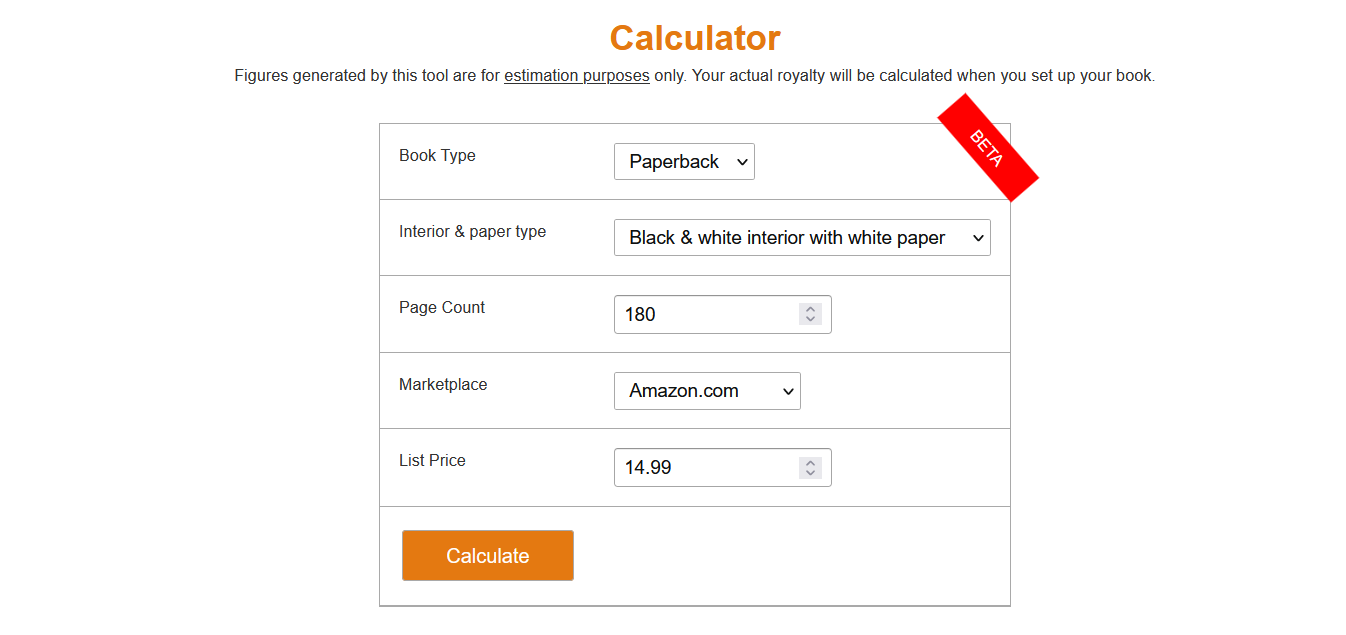
Barnes & Noble Press (B&N Press)
E-books: 70% of your list price.
Print books: Earn 55% of your list price (B&N keeps 45% of every sale) minus the printing cost .
Royalty calculator here (click on the image below to access the calculator)
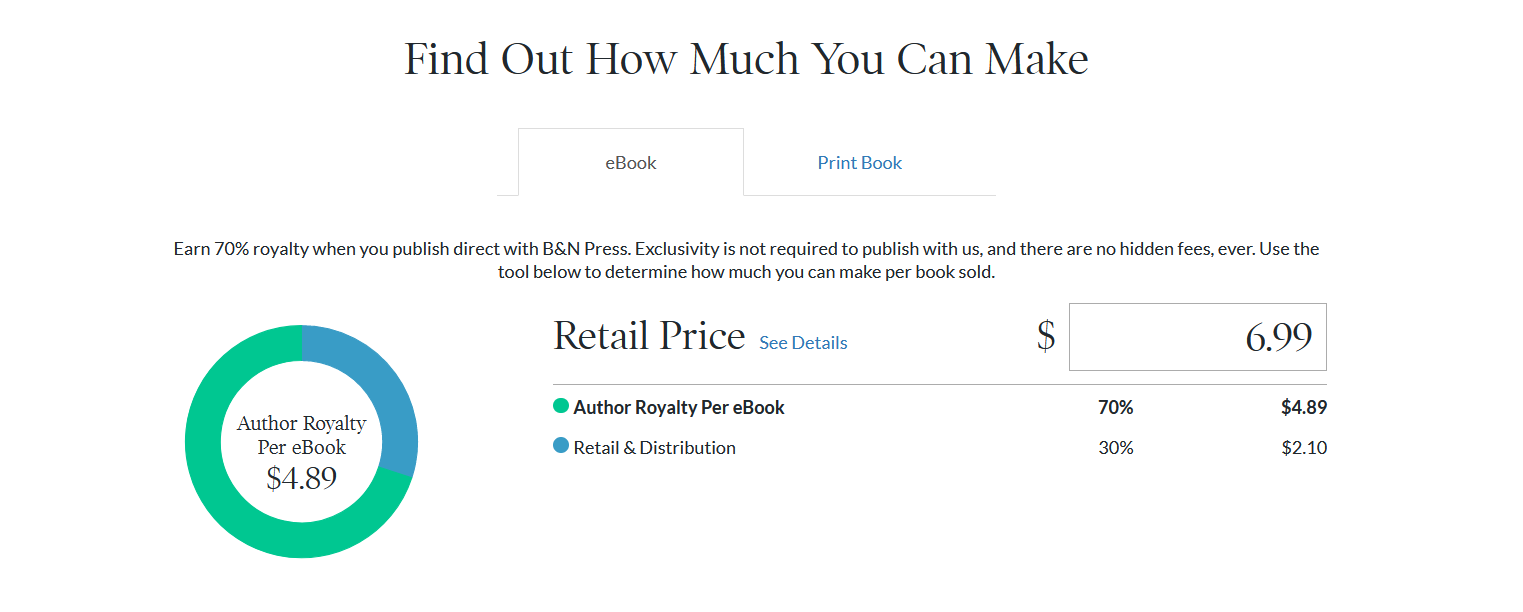
Draft2Digital
E-books: D2D takes a cut of 10% of the retail price (15% of net royalties) from the author
Apple Books: 70% of most books’ list price
Google Play Books: 70%
Kobo: $0.01–$2.99=45% | $2.99+=70% more info here (You can make more if distributing exclusively through Kobo Writing Life.)
Print books: 45% of your list price minus the printing cost (retailer keeps 45% of every sale and D2D keeps 10%) minus the printing cost .
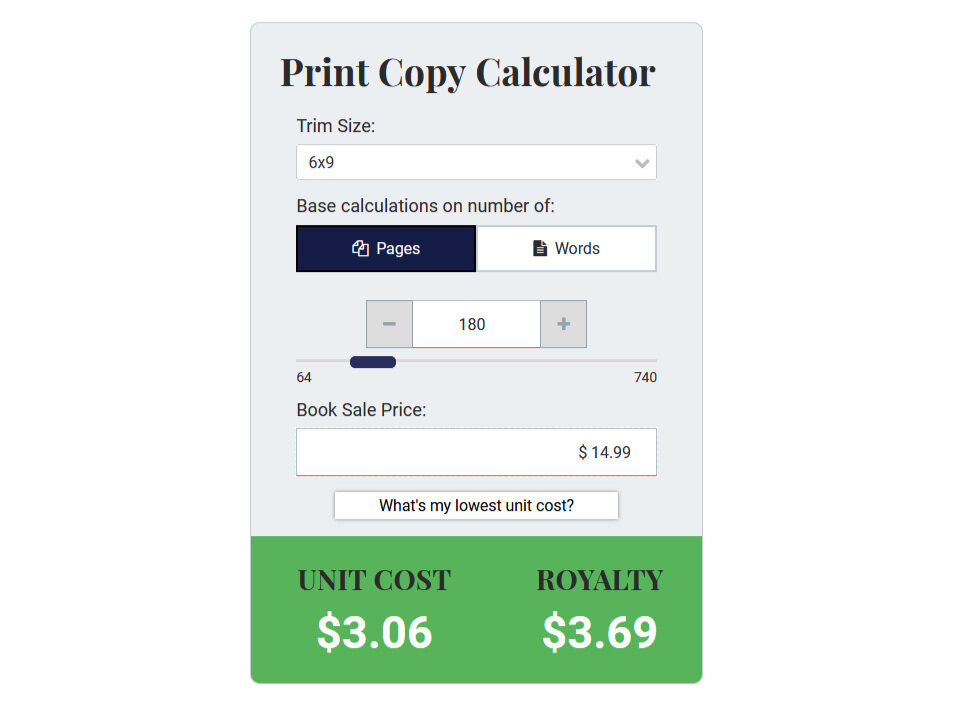
IngramSpark
E-books: 60% of your list price
Print books: 45% of your list price (recommended), minus the printing cost and setup fee
You have the option of keeping a higher percentage, but this will deter IngramSpark partners from buying your book.
About the IngramSpark setup fee and market access fee:
Effective May 1, 2023, there are no more title setup fees. (Prior to May 1, authors had to pay $49 per book to publish and distribute a book through IngramSpark.)
For 60 days after launch, authors can make revisions and can re-upload their books for no fee. After day 61, the normal $25 fee applies for revisions.
IngramSpark, as of July 1, 2023, charges a 1 percent “market access” fee—1 percent of your book’s list price—to be able to distribute your book for you.
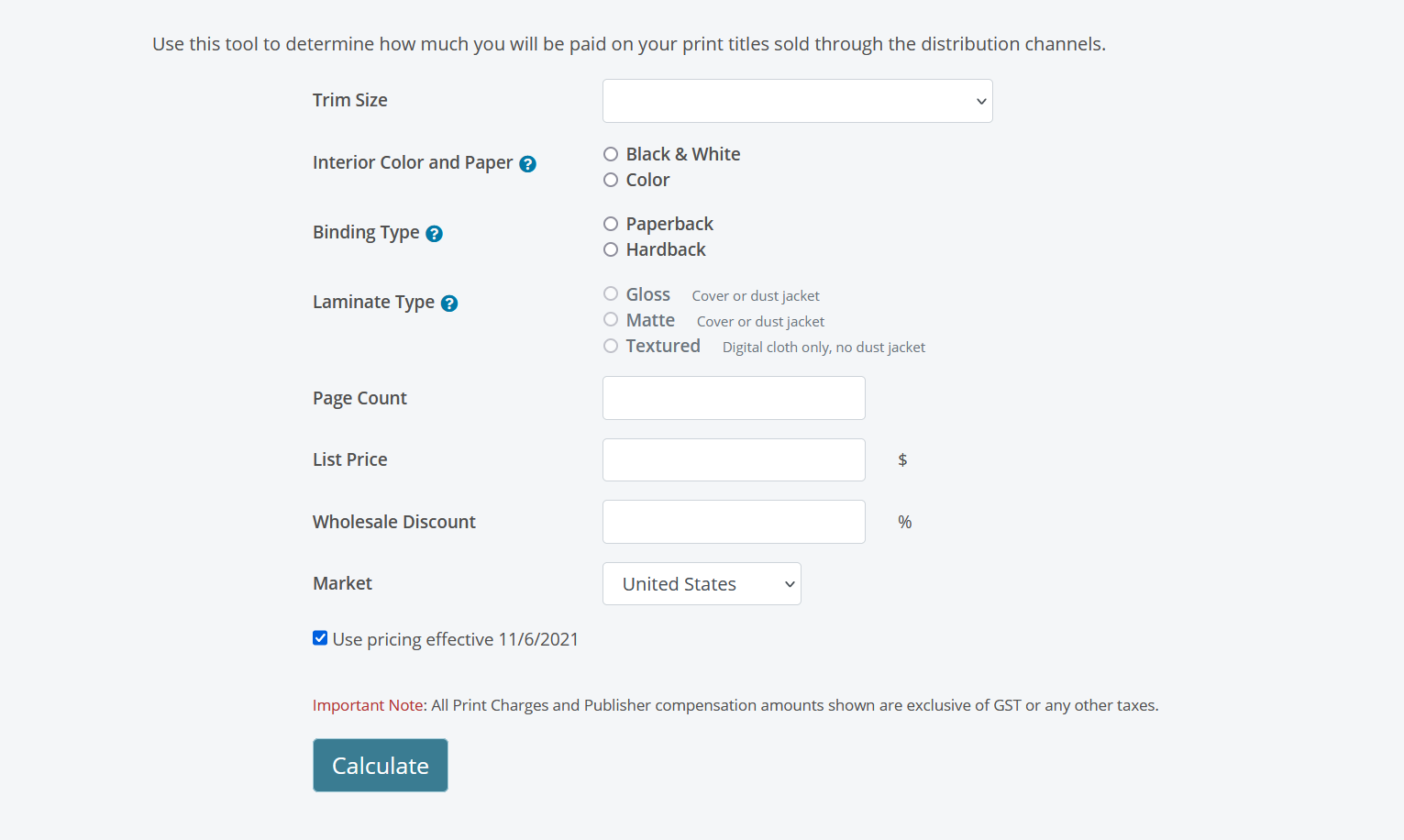
Examples (as of Summer 2023)
For an e-book priced at $6.99 , the author royalty would be
$4.80 on Amazon KDP (US) (assuming the smallest MOBI7 version of your book is 0.5 MB [$0.09 distribution fee])
$4.89 on Barnes & Noble Press
$4.40 on Draft2Digital
$4.19 on IngramSpark
For a 6″ × 9″, black ink, white pages, paperback, matte cover, 200 pages, with a list price of $16.99, the printing cost would be roughly $3.25 to $4.08, and, as of May 1, 2023, the author royalty would be
$6.94 if sold directly on Amazon.com; $3.55 if sold via Amazon expanded distribution (US) (printing cost is $3.25)— get the explanation here
$5.74 on Barnes & Noble Press (printing cost $3.60)
$3.77 on Draft2Digital (printing cost is $3.88)
$3.57 on Ingram Spark (with the 55% distribution discount; $3.40 after July 1, 2023 (market access fee), ( printing cost $4.08)
You can see from the above example that a $16.99 list price might be a bit low, and you might want to increase it.
A few more tips about self-publishing author royalties:
Try the royalty calculators for the most accurate information. Each retailer calculates its author compensation differently and changes its rates over time.
Consider your unique situation. Ask yourself where it makes sense for your book to be sold.
Learn how to reduce print costs on Amazon. Takeaways from Kindlepreneur’s “How to Reduce Print Costs” guide on that subject include writing a shorter book, choosing a 6″ × 9″ (or smaller) paperback in black ink, and making sure your line spacing is no wider than usual and that your font is no larger than usual.
Barnes & Noble Press and IngramSpark offer hardcover print book options.
Amazon KDP now offers hardcover print book options—but you have more limited choices than the above.
If you want to purchase a large number of print books to sell on your own, shipping costs are tough to calculate. Only IngramSpark, in its Print and Ship Calculator , makes those figures transparent. The method of shipping, number of copies ordered, and author’s zip code will determine the shipping cost. Barnes & Noble Press, last I knew, does not ship books to non-US authors.
Sign up and start getting more helpful tips and resources for authors , bookmark this, or share it.
Become a Bestseller
Follow our 5-step publishing path.
Fundantals of Fiction & Story
Bring your story to life with a proven plan.
Market Your Book
Learn how to sell more copies.
Edit Your Book
Get professional editing support.
Author Advantage Accelerator Nonfiction
Grow your business, authority, and income.
Author Advantage Accelerator Fiction
Become a full-time fiction author.
Author Accelerator Elite
Take the fast-track to publishing success.
Take the Quiz
Let us pair you with the right fit.
Free Copy of Published.
Book title generator, nonfiction outline template, writing software quiz, book royalties calculator.
Learn how to write your book
Learn how to edit your book
Learn how to self-publish your book
Learn how to sell more books
Learn how to grow your business
Learn about self-help books
Learn about nonfiction writing
Learn about fiction writing
How to Get An ISBN Number
A Beginner’s Guide to Self-Publishing
How Much Do Self-Published Authors Make on Amazon?
Book Template: 9 Free Layouts
How to Write a Book in 12 Steps
The 15 Best Book Writing Software Tools

1. My book will be published by a...
2. my book will be an:, 3. my royalty rate will be:.
*Please note that this royalty rate is based on the market averages for paperback books. Actual royalty rates for traditional and indie publishing can vary by author depending on several factors.
4. My book's retail price:
5. the # of books sold:, your results, your profit per book sold, for books sold, you earn:, for 1,000 books sold, you earn:, for 10,000 books sold, you earn:, royalties comparisons for 10,000 books sold, want to receive personalized tips on how to sell more books right in your inbox, what are book royalties.
This free book royalty calculator helps you to determine what royalties you can receive with self-publishing and traditional publishing routes. A book royalty is a percentage of the revenue an author receives for each book sold.
In traditional and independent publishing, the author receives a contract from the publisher which includes royalty percentages, book rights, advances, and other legal terms. The author’s royalty fee is decided upon by the publisher, usually on a case-by-case basis, depending on several variables such as the author’s credentials, book genre, book type, and more.
In self-publishing, the author is given a royalty rate based upon the self-publishing platform that the author uses to publish the book. Book royalty rates on self-publishing platforms are typically standard and consistent for all authors, and will typically only vary depending on the type of book (ex: eBook, print, hardcover).
How do Book Royalties work?
Book royalty rates are typically calculated as a percentage of the gross or net revenue for each book sold. For example, if the net revenue of a book is $10.00, and the author’s royalty rate is 15%, the author would receive $1.50 in profit for each book sold.
The terms in your book’s contract, or which publishing route you decide to take, will determine when you receive your book royalties, and how often you are paid. For example, if you self-publish through Amazon's Kindle Direct Publishing, royalties are paid out monthly, approximately 60 days after the end of the month in which the royalties are earned.
However, if you publish traditionally and receive an advance, you will likely not be paid your book royalties until you have essentially been able to pay back the amount of any initial advance with your book sales. Because there are many variables involved, be sure to check with your publisher to get clear on the payment process.
Why are Book Royalties important?
An author should be thoroughly educated on all of the terms in the publishing contract, especially when it comes to understanding their book’s royalty rate.
This is because royalties are directly linked to an author’s profit. By determining what your royalty rate is, you can learn how much profit you should expect to see from your book sales.
What is the standard rate for Book Royalties?
Below is a chart that breaks down the standard author royalty rates. However, please note that these royalties have been calculated based on market averages.
An author’s actual royalty rate can vary depending on several factors, especially if the book is being published by an actual publishing house, such as a traditional big 5 publisher or indie publisher.
Variables that affect an author's royalty rate:
- The author’s experience, credentials, and social following
- Book length
- Any advancements
- Amount of books sold
How to use the Book Royalty Calculator
Here are the steps on how to use this book royalties calculator to determine your royalty rate, and book profit potential based on each publishing method.
#1 – Determine how your book will be published.
Traditional Publishers are considered the “Big 5” publishing houses. These publishing companies are Hatchett Book Group, HarperCollins, Macmillan Publishers, Penguin Random House, and Simon & Schuster. If you plan to pursue these publishing houses for your book, then you'll want to select “Traditional Publisher” on the Book Royalties Calculator.
Independent, or Indie, Publishers are smaller publishing houses. They are also known as a small press. The publishing model is similar to traditional publishing, but with an indie publisher, it can be less competitive and more niched down for authors.
Self Publishing Platforms allow authors to upload and publish their books, and they typically follow a print-on-demand business model. Examples of self publishing platforms are Amazon’s Kindle Direct Publishing, IngramSpark, KoBo, etc.
#2 – Select the type of book you will publish.
Will you be publishing an eBook or physical, printed book? If you will be publishing both, use the calculator twice to compare the results of each book type.
#3 – View your royalty rate.
If needed, adjust your royalty rate.
#4 – Enter the cover price of your book.
This will be how much retail stores will sell your book for.
#5 – Click “Calculate.”
The calculator will generate your results based on the options you selected.
#6 – View your results.
Voila! You can now view your results, which will show you how much you will earn per book, as well as how much you were earn per 1,000 books sold. To get an idea of how much you will earn over time in comparison to the other publishing methods, you can use the comparison chart.Take note of the comparison table, which will show you the amount you will earn with each publishing method.
Reasons to use this Book Royalties Calculator:
#1 – to compare your book’s earning potential, #2 – to plan for book sales and earnings, #3 – to keep track of how many books you need to sale to meet your goal, #4 – to understand how book royalty rates work, #5 – to get a clear picture of the earning differences amongst the three types of publishing, traditional vs indie vs self publishing.
If you’re deciding which publishing method to pursue for your book, there are several factors to account for.
There are many pros and cons involved with each, so it’s important you familiarize yourself with each method, and do extensive research before deciding which option is the right path for your author career.
However, if you’re considering the publishing option in terms of earning potential, it’s important to realize that self publishing has the highest earning potential, and allows authors to keep the rights to their work, as well as all creative control during publishing.
Self publishing can also be tricky to navigate as a beginner, which is why we always encourage our readers to invest in a quality self publishing course to learn the ins and outs of the trade. Learn it once, then apply the strategies to all of your future books!
Check out our Publishing Guide for How to Choose for a more in-depth analysis on the differences between self publishing and traditional publishing.
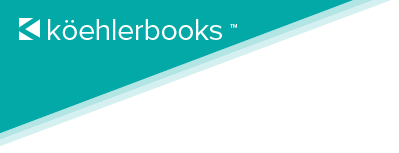
Koehler Books pays author royalties based on the net proceeds of the book, meaning the money left over after the book is sold to a distributor or bookseller, as well as printing costs. Typically this is between $4.00 and $5.00. The net is then split with the author according to the percentage agreed to in the contract, typically 60% for hybrid/copub deals and 40% for traditional deals.
The Breakdown
Below is an example of a typical copub book and how royalties work (prices may vary depending on number of pages, list price, etc):
210-page 6×9 softcover book with black and white interior, color exterior $17.95 — suggested list price $8.97 — wholesale price (50% wholesale rate) $3.52 — print price (author price is $5.28) $5.37 — net $3.22 — author’s royalty per 60% rate
The Royalty Reports
Royalty reports and payments are first issued in the quarter six months after the publication date. They may be paid via Pay Pal or check. Koehler Books uses Title Verso for our royalty system, reports and Author Nexus. Title Verso uses direct feed data provided by our distributor, Ingram Books for increased accuracy.
The reports are excellent and easy to read and will be issued if the author has royalties due to be paid, or they may be referred to their Author Nexus. Below is a screen shot of a partial royalty report, shown with approval of our bestselling author Buck Wyndham.
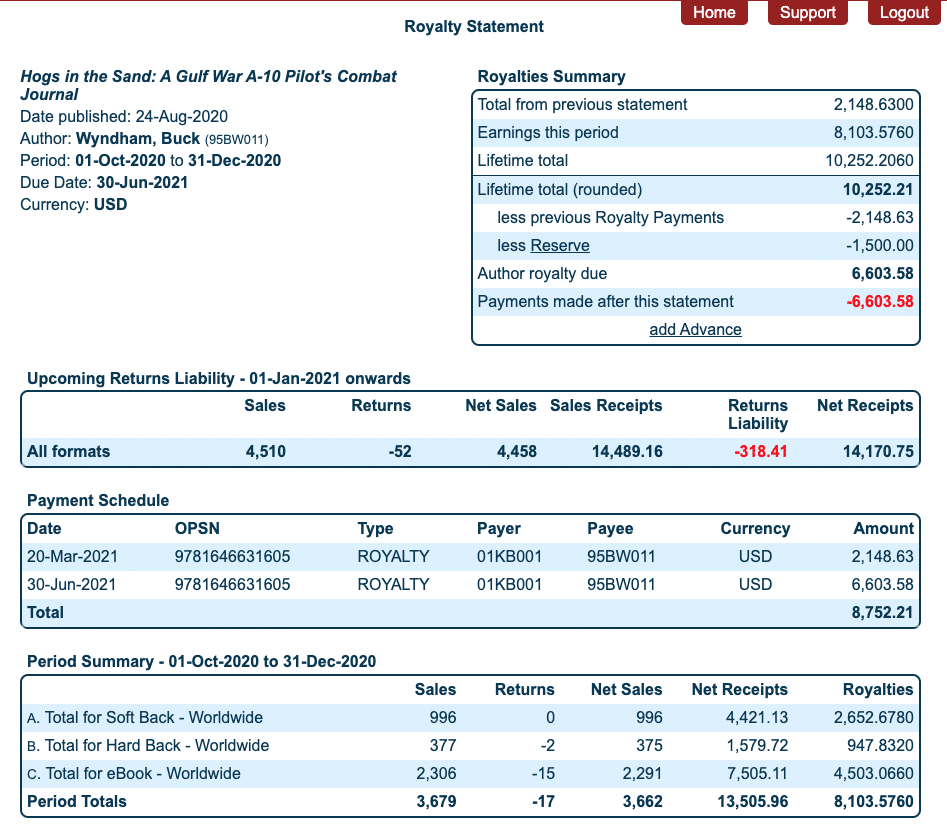
Authors who do not have money owed may see their royalty report via their Author Nexus.
The Author Nexus
The Author Nexus, also developed by Title Verso for Koehler Books, allows authors to continuously check their cumulative royalties over time and according to the formats: softcover, hardcover and Ebook. While our authors will not get the formal royalty reports for six months after the pub date, Author Nexus is usually available to authors 3 months after their pub date. It allows them to generally track their royalties but is not a final arbiter about sales.
Author must wait for their quarterly reports and are asked to not make inquiries about Author Nexus.
Below is a screen shot of Buck’s Author Nexus.
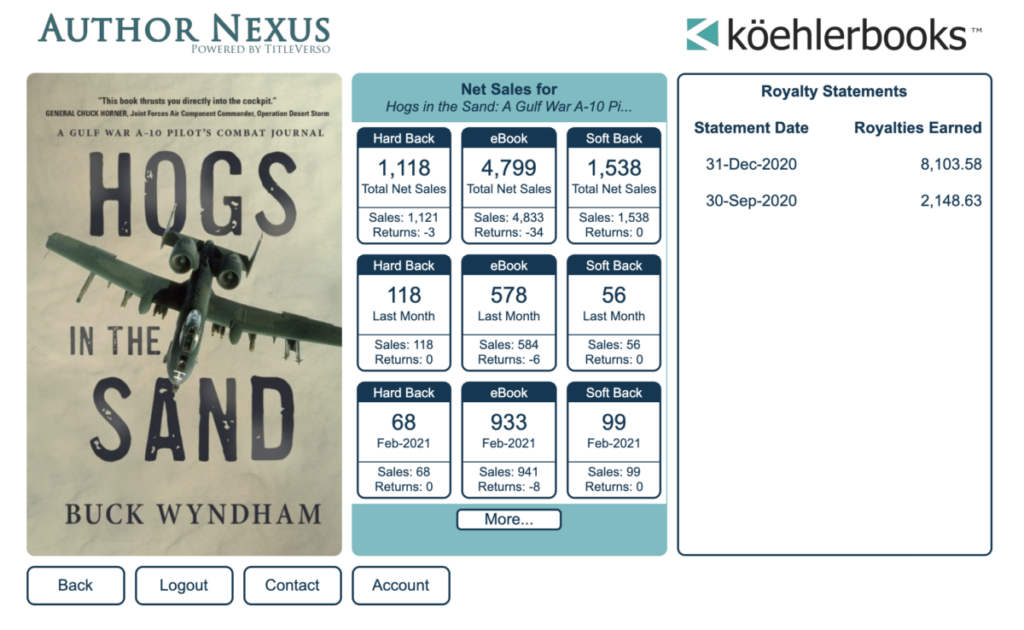
Recent Posts
- Author Julie Scolnik Hauls in the Awards March 30, 2024
- Brian J. Morra’s The Righteous Arrows and Turning Point: The Bomb and the Cold War March 13, 2024
- New Releases—March 2024 March 8, 2024
- New Releases—February 2024 March 8, 2024
- New Releases—January 2024 March 7, 2024
- Business Book Awards Now Accepting Submissions February 16, 2024
- Michelin Starred Chef Douglas Keane signs with Koehler Books February 13, 2024
- Koehler Books Author Anthony Mohr Wins Nine Awards February 7, 2024
- The Case for Advertising on Amazon January 23, 2024
- An Interview with David Rowland January 16, 2024
GET YOUR FREE MARKETING BOOK
Please fill out the information below and you'll receive a free downloadable copy of Pocket Guide to Book Marketing: A Road Map to Marketing Your Book .
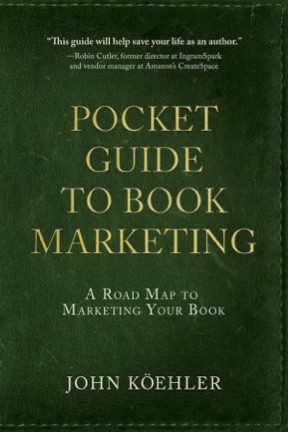
Email Address
What kind of author are you? First time author Repeat author Agented author
I wish to receive email newsletters from Koehler Books.
Your privacy is important to us and we will not trade, share, or sell your information to any other company. We may occasionally send you periodic emails, including special announcements and updates.
Help us pick the cover designs for our new books:
800-435-4811.
Error: Contact form not found.
Join the Köehler Books Facebook Forum!
This is an author’s forum organized by Betsy Ashton, a KB author and president of the Virginia Writers Club . The Forum currently has over ninety authors trading tips, sharing marketing secrets and offering advice and encouragement. They also sometimes read each other’s work and provide endorsement quotes for each other, and that is a very big deal.
This forum has proven quite helpful to many of our authors. It is ONLY for Köehler Books authors, by invitation only. If you are a Köehler Books author and are interested in joining this forum, please contact the publisher.
Your privacy is important to us and we will not trade, share, or sell your information to any other company.
Get your Free E-Book
Please fill out the information below and you'll receive a free downloadable copy of Pocket Guide to Publishing: 100 Things Authors Should Know .
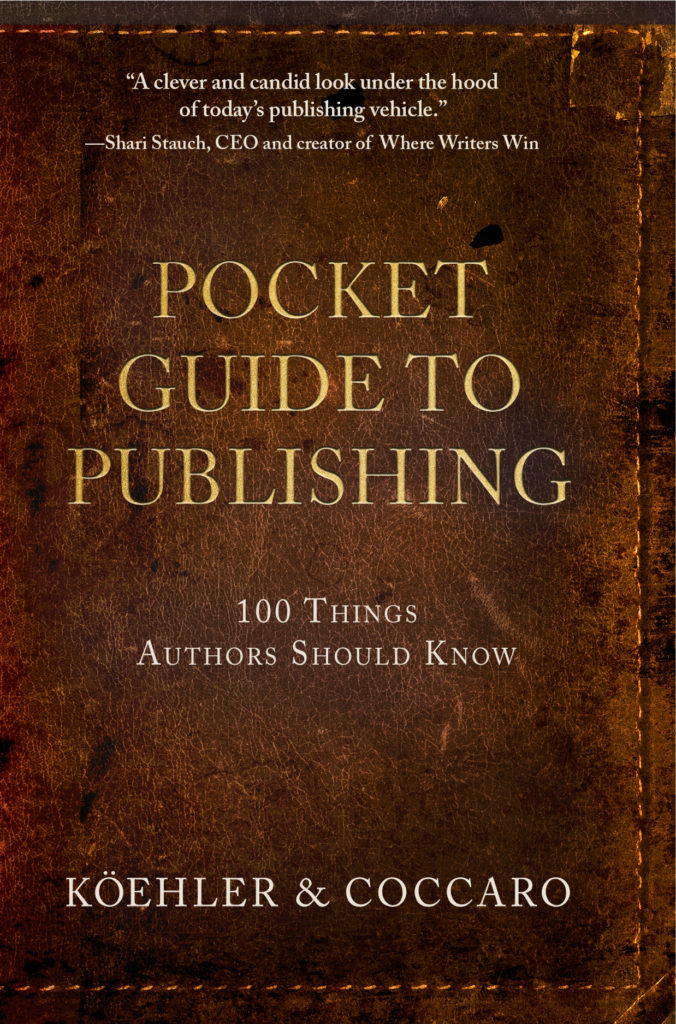
- Subscriber Access
- Saved items
Towanda, PA (18848)
Partly cloudy this morning. Increasing clouds with periods of showers this afternoon. High 56F. Winds WNW at 5 to 10 mph. Chance of rain 50%..
Showers early, then cloudy overnight. Low 36F. Winds WNW at 5 to 10 mph. Chance of rain 60%.
Updated: March 30, 2024 @ 7:45 am
- Full Forecast
Kate Taylor will perform at the third annual Susquehanna Summer Solstice Festival on Saturday, June 22 at 8:30 p.m.
- Photo courtesy of Susquehanna Summer Solstice Festival
- Copy article link
- SSSF books music royalty Kate Taylor for 2024
- For The Review Susquehanna Summer Solstice Festival
- Mar 30, 2024
ASYLUM TOWNSHIP — Kate Taylor, of the well-known musical family including brothers James, Alex, Hugh, and Livingston, will perform at the third annual Susquehanna Summer Solstice Festival on Saturday, June 22 at 8:30 p.m.
The show will include music from her latest studio album, “Why Wait!” Released on Red House Records, it reunites Taylor with music veteran Peter Asher (of the 1960s Peter and Gordon singing duo), who produced her 1971 debut album, “Sister Kate.” Why Wait! includes work of some of Taylor’s favorite songwriters, including her brother James’ “I Will Follow” and the Beatles’ “Good Day Sunshine,” as well as her own original rhythm and blues title track and the evocative “I got a Message.”
Born in New England and raised in North Carolina, Taylor’s musical roots run deep in the rockabilly, soul, and gospel sounds of the south and in the folk, pop and Appalachian style that complete her family’s musical playbook.
The idea that started Taylor’s latest album began at her birthday party when her agent, who also manages Asher, noted most of the Sister Kate band members were still active. Asher welcomed the idea of recording with Taylor on the 50th anniversary of their Sister Kate collaboration.
Kate Taylor’s brother, James Taylor, told Rolling Stone: “For Kate to be doing this with Peter, and that both of them have this life experience that brings them back together, it’s really a moving thing. I think it’s so great that Kate will have this next iteration, you know, this next chance for people to hear her and pick up on her.”
Taylor’s appearance under the tent at the historic grounds of French Azilum on June 22 will highlight the Susquehanna Summer Solstice Festival’s celebration of American roots music, encompassing a variety of genres — blues, jazz, swing, and American folk. Other performers will include internationally renowned acts, as well as local and regional bands.
The Susquehanna Summer Solstice Fest is under the auspices of the Bradford County Regional Arts council (BCRAC). For information, contact Brooks Eldredge-Martin at [email protected] , the BCRAC at [email protected] , or call (570) 268-2787. For schedules and tickets, visit the website at www.susquehannasolstice.com .
Latest News
- Police Briefs: March 29, 2024
- Easter festivities come to Columbia Cross Roads
- Elections 101: What to know about poll watchers, and what they can and can’t do in Pennsylvania
- College News: March. 30, 2024
- Marriage Licenses: March 30, 2024
- Bradford County Property Transactions: March 30, 2024
- C&N promotes Holly Wise to community office manager
Digital Edition
The daily review.
- To view our latest e-Edition click the image on the left.
The Farmer's Friend
Wedding planner, most popular.
- Sayre man jailed after assaulting RPH staff, police officers
- Burning barrel sparks blaze
- Bradford County Court Briefs: March 23, 2024
- Woman at center of Sayre drug bust to serve 3-6 years in prison
- Police Briefs: March 22, 2024
- Ridership up but light buses remain a concern for EMTA
- Bradford County man indicted for child pornography
- Secretary of Education tours NTCC, discusses technical education
- Biden’s gas car ban will devastate Pennsylvania – Pennsylvania’s senators should reject it
- BC commissioners support 2024 Police Unity Tour
Sorry, there are no recent results for popular videos.
Sorry, there are no recent results for popular commented articles.
Online Poll
What is your favorite part of easter, newsletters.
Success! An email has been sent to with a link to confirm list signup.
Error! There was an error processing your request.
News Updates
Would you like to receive our daily news? Sign up today!
Today's Values
What to Know About Donald Trump’s New $60 Bible
“all americans need a bible in their home, and i have many. it’s my favorite book.”.

- Share on Facebook
- Share on Twitter
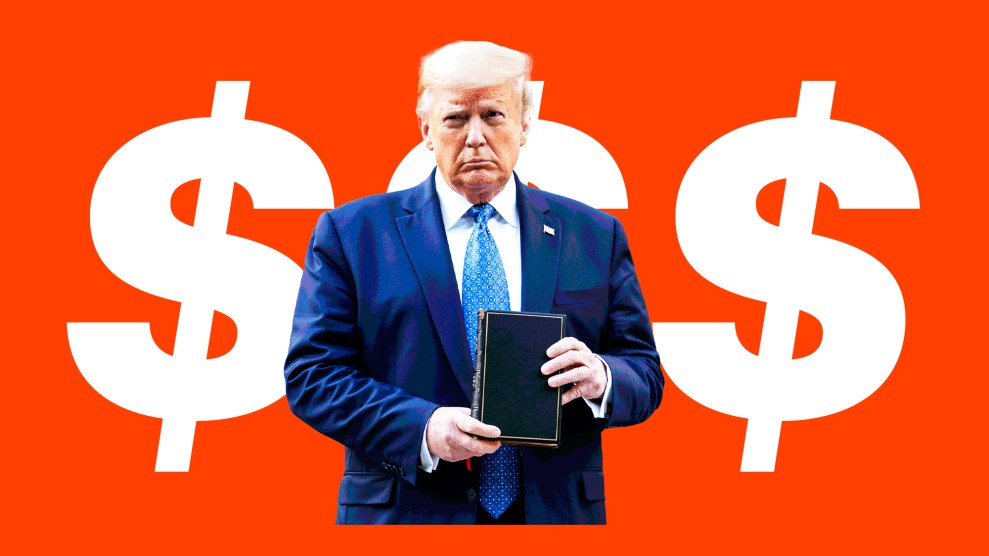
Mother Jones illustration; Shealah Craighead/White House/ZUMA
One month after releasing a line of gilded high-tops for $399, Donald Trump revealed on Tuesday a new item: the Bible. “All Americans need a Bible in their home, and I have many,” the former president explained in a video promoting the country singer Lee Greenwood’s version of a King James translation, the “God Bless the USA Bible.”
“It’s my favorite book,” Trump added.
Throughout the rest of the clip, as if daring us into a collective disgust, Trump swerved through random opportunities to rail against bureaucrats and a country under threat—all while hawking a holy text.
But his latest sales pitch also prompted some legitimate questions. Such as: What the hell is going on? And: Excuse me? Here, we try to answer some of the queries.
So, that first question—what the hell—but more formally: What exactly is Trump promoting and how much will it cost me to shell out for this?
Trump is encouraging his supporters to buy a Bible endorsed by himself and Lee Greenwood. It costs $59.99, without taxes or shipping included. That seems to sit on the more expensive end of Bibles on sale at Barnes & Noble . But those books presumably don’t include copies of the Constitution, the Bill of Rights, and the handwritten lyrics to the chorus of Greenwood’s “God Bless the USA.”
The “God Bless the USA Bible” does include these items .
Trump is in a serious cash crunch . So is he going to make money with this Bible?
According to the book’s official site , the God Bless the USA Bible has nothing to do with Trump’s campaign. It is “not owned, managed, or controlled by Donald J. Trump, The Trump Organization, CIC Ventures LLC, or any of their respective principals or affiliates.” Instead, Trump’s “name, likeness, and image” are being used “under paid license from CIC Ventures LLC.”
Wait, what is CIC Ventures LLC, though?
Okay, so CIC Ventures LLC is, according to the Washington Post , basically a pipeline to Trump:
In [Trump’s] financial disclosure released last year, he’s identified as the [CIC Ventures LLC’s] “manager, president, secretary and treasurer” and the Donald J. Trump Revocable Trust is identified as a 100 percent owner of the business. The same entity also receives royalties from his book “A MAGA Journey” and speaking engagements.
In case it’s not already obvious: if you look at the company’s documents, you’ll find the principal address for CIC Ventures LLC is 3505 Summit Boulevard, West Palm Beach, Florida. That is a Trump golf course . Moreover, in a 2022 disclosure, Nick Luna is listed as a manager. Luna was Trump’s personal assistant and body man.
So, I’m sorry, but let me ask again: Is Trump making money off this?
The New York Times reports that “according to a person familiar” (classic) Trump will receive royalties from sales.
You could have just said that.
I wanted to tell you about the other stuff I found. Any other questions?
Yes. Who is Lee Greenwood?
The country singer who wrote “God Bless the USA.” Greenwood is a fierce MAGA guy who otherwise made news after pulling out of an NRA concert in response to the Uvalde, Texas, mass shooting.
Does Greenwood have a Christmas album with an oddly sexual cover?
Yes. Look at this .
Perfect sweater. Anyway, I feel like I’m experiencing deja vu. Hasn’t Trump made headlines before with a Bible?
You’re probably recalling that despicable photo-op when Trump held up a Bible in front of St. John’s Church, which had been a location of racial justice protests in the days prior. There was a complicated saga, afterward, about whether or not Trump deployed the police to clear protesters to get to the church. An Inspector General’s report ultimately concluded that he did not.
Man, it’s pretty rough remembering all the awful shit we went through with him as president.
Yep. If you ever want to wallow in political depression, check out this quick compilation .
But wait. Wasn’t there another time Trump and the Bible made waves for something far more stupid?
Christian nationalists adore Trump, so there have probably been many times that Trump has referenced the Bible. But you might also be thinking of this incredible clip of Trump attempting to name his favorite verse .
Has a presidential candidate ever partnered on a holy text sale with a country musician?
Not to my knowledge. But this is from a dude who just last week seemed to compare his current legal jeopardy with the persecution of Jesus Christ. Happy Easter!

In “Quiet on Set,” Justice Isn’t So Simple
Sophie Hayssen
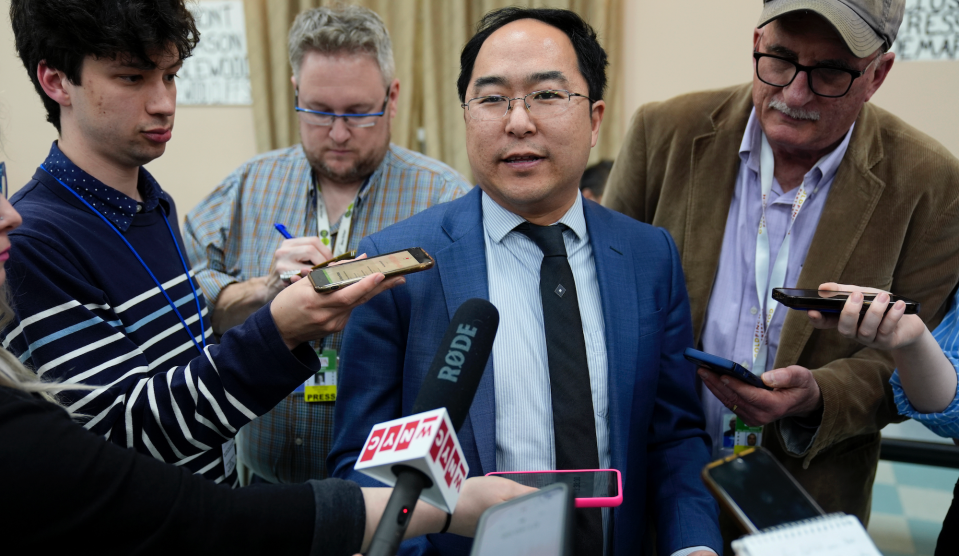
New Jersey’s County-Line Ballot Is Almost Dead
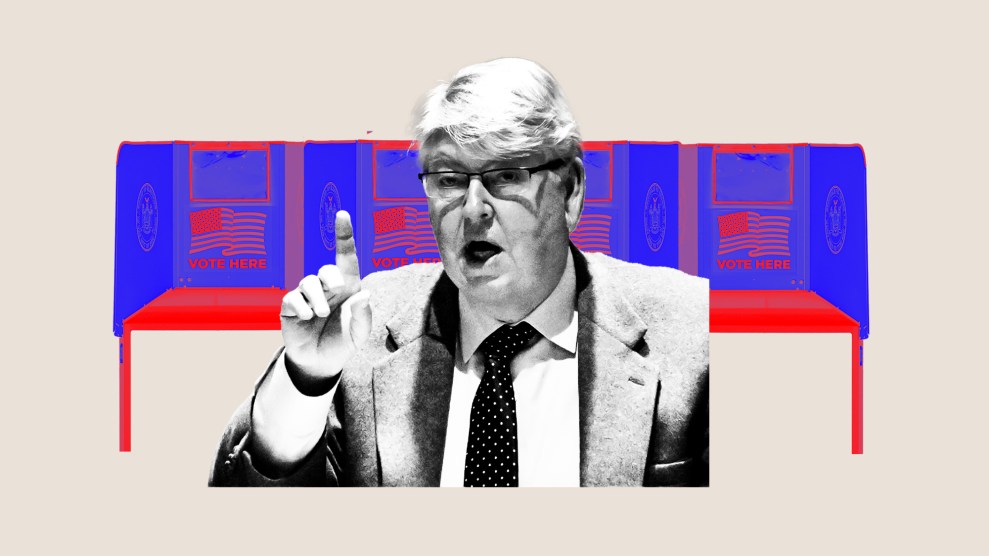
A GOP Official and Election Denier Voted Illegally Nine Times. That’s Not Even the Worst Part.

Wall Street Journal Marks One Year Since Evan Gershkovich’s Arrest in Russia
Julianne McShane
We Recommend
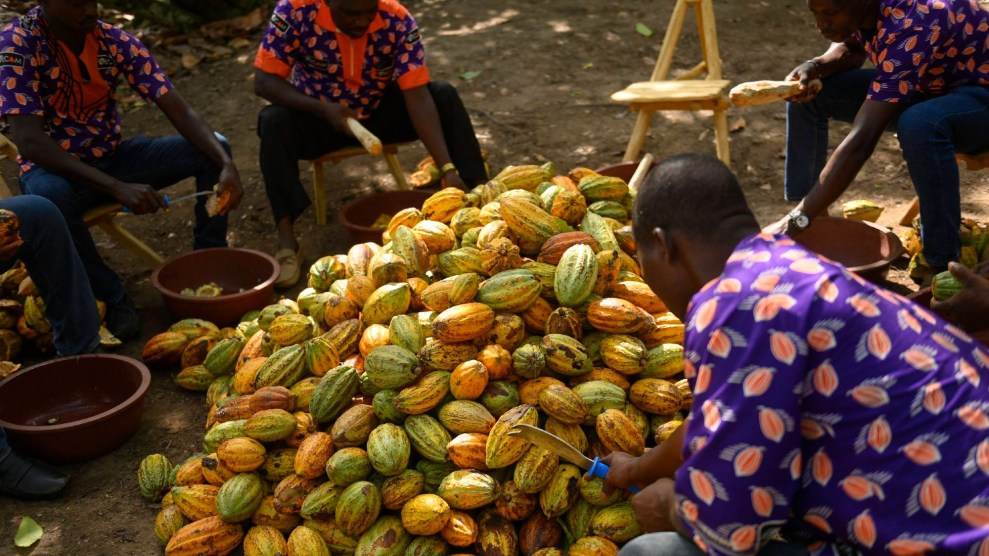
The Easter Bunny Can’t Be Happy About the Global “Chocolate Meltdown”
Patrick Greenfield

Does “And” Really Mean “And”? Not Always, the Supreme Court Rules.
Daniel King
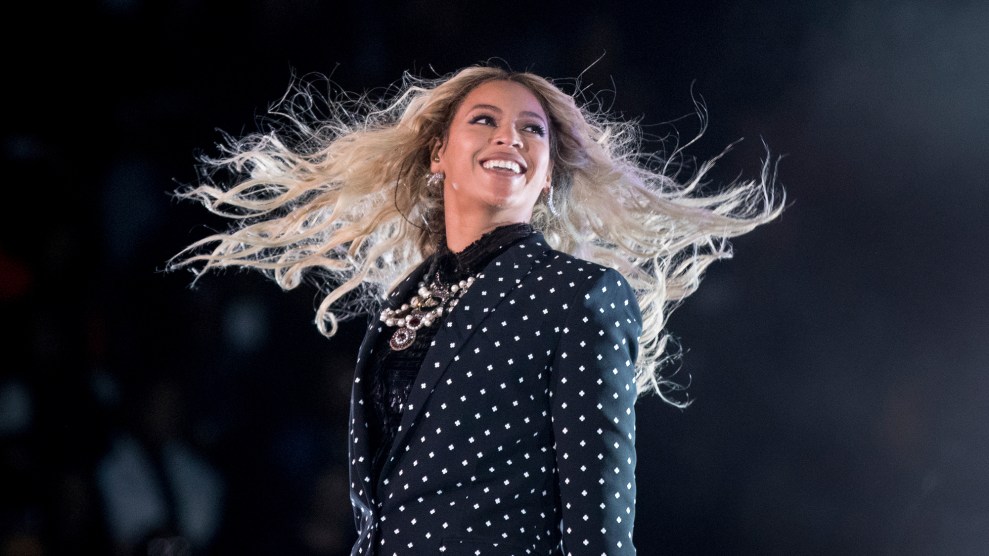
Beyoncé Just Covered the Beatles In the Most Authentic Way: By Honoring Black History
Garrison Hayes

Texas Drops Plans to Execute Man With Intellectual Disability
Julia Métraux

Surge of US-Led Fossil Fuel Projects Could Blow Up Paris Climate Goals
Oliver Milman
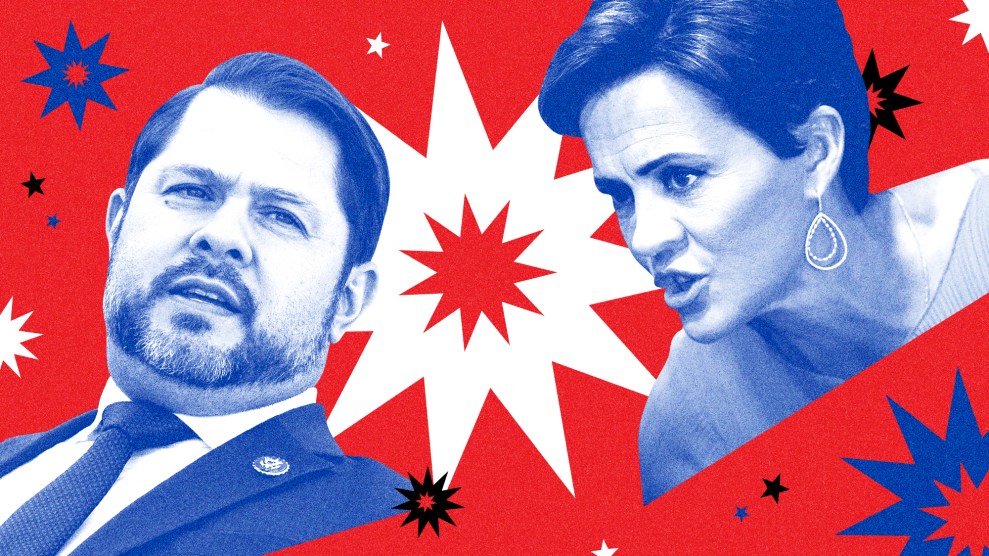
Ruben Gallego’s Battle Against Kari Lake Could Decide the Fate of the Senate—And Our Democracy
Abby Vesoulis

They Make Viral Gun Videos—With Hardline Christian Values
Lila Hassan

Sinking Shores and Rising Seas Will Inundate 24 US Coastal Cities
Moriah McDonald
Sign up for our free newsletter
Subscribe to the Mother Jones Daily to have our top stories delivered directly to your inbox.
By signing up, you agree to our privacy policy and terms of use , and to receive messages from Mother Jones and our partners.
Get our award-winning magazine
Save big on a full year of investigations, ideas, and insights.
Support our journalism
Help Mother Jones ' reporters dig deep with a tax-deductible donation.
Independent. In print. In your mailbox.
Inexpensive, too! Subscribe today and get a full year of Mother Jones for just $14.95.

Bold. Brave. Beautiful.
Award-winning photojournalism. Stunning video. Fearless conversations.
Looking for news you can trust?
We noticed you have an ad blocker on..
Can you pitch in a few bucks to help fund Mother Jones' investigative journalism? We're a nonprofit (so it's tax-deductible), and reader support makes up about two-thirds of our budget.
We noticed you have an ad blocker on. Can you pitch in a few bucks to help fund Mother Jones' investigative journalism?
Don't let an algorithm decide what news you see.
Sign up for the free Mother Jones Daily newsletter and follow the news that matters.
Advertisement
Trump’s Newest Venture? A $60 Bible.
His Bible sales pitch comes as he appears to be confronting a significant financial squeeze, with his legal fees growing while he fights a number of criminal cases and lawsuits.
- Share full article

By Michael Gold and Maggie Haberman
- March 26, 2024
Before he turned to politics, former President Donald J. Trump lent his star power and celebrity endorsement to a slew of consumer products — steaks, vodka and even for-profit education, to name just a few.
On Tuesday, Mr. Trump, the presumptive Republican presidential nominee, added a new item to the list: a $60 Bible.
Days before Easter, Mr. Trump posted a video on his social media platform in which he encouraged his supporters to buy the “God Bless the USA Bible,” named after the ballad by the country singer Lee Greenwood, which Mr. Trump plays as he takes the stage at his rallies.
“All Americans need a Bible in their home, and I have many. It’s my favorite book,” said Mr. Trump, who before entering politics was not overtly religious and who notably stumbled while referencing a book of the Bible during his 2016 campaign. “It’s a lot of people’s favorite book.”
Though Mr. Trump is not selling the Bible, he is getting royalties from purchases, according to a person familiar with the details of the business arrangement.
Priced at $59.99, plus shipping and tax, the “God Bless the USA Bible” includes a King James Bible and a handwritten version of the chorus of Mr. Greenwood’s song, and copies of the Constitution, the Bill of Rights, the Declaration of Independence and the Pledge of Allegiance.
In his video, Mr. Trump expressed his approval of the book’s blend of theology with foundational American political documents, framing that mix as central to the political call that has been his longtime campaign slogan, Make America Great Again.
“Religion and Christianity are the biggest things missing from this country,” Mr. Trump said. Later, he added, “We must make America pray again.”
As he runs for president this year, Mr. Trump has framed his campaign as a crusade to defend Christian values from the left. He often makes false or misleading claims that Democrats are persecuting Christians. Last month, he told a religious media convention that Democrats wanted to “tear down crosses.”
His Bible sales pitch comes as he appears to be confronting a significant financial squeeze. With his legal fees growing while he fights four criminal cases and a number of civil lawsuits, Mr. Trump is also being required to post a $175 million bond while he appeals his New York civil fraud case — a hefty amount, though one that is significantly smaller than the $454 million penalty imposed in the case.
According to the Bible’s website, Mr. Trump’s “name, likeness and image” are being used “under paid license from CIC Ventures LLC.”
The Trump campaign did not immediately respond to questions about the business arrangement. But CIC Ventures is also connected to another product Mr. Trump has hawked while campaigning: $399 “Never Surrender” sneakers that he announced at a sneaker convention in Philadelphia last month.
Michael Gold is a political correspondent for The Times covering the campaigns of Donald J. Trump and other candidates in the 2024 presidential elections. More about Michael Gold
Maggie Haberman is a senior political correspondent reporting on the 2024 presidential campaign, down ballot races across the country and the investigations into former President Donald J. Trump. More about Maggie Haberman
Our Coverage of the 2024 Elections
Presidential Race
President Biden raised $25 million campaigning alongside Barack Obama and Bill Clinton at a Radio City Music Hall event , adding to his huge cash edge, after Donald Trump pushed his law-and-order message at a wake for a police officer killed on duty.
Trump Media, now publicly traded, could present new conflicts of interest in a second Trump term.
Donald Trump cast Robert F. Kennedy Jr. as a liberal democrat in disguise while also seeming to back the independent presidential candidate as a spoiler for the Biden campaign.
Other Key Races
Tammy Murphy, New Jersey’s first lady, abruptly ended her bid for U.S. Senate, a campaign flop that reflected intense national frustration with politics as usual .
Kari Lake, a Trump acolyte running for Senate in Arizona, is struggling to walk away from the controversial positions that have turned off independents and alienated establishment Republicans.
Ohio will almost certainly go for Trump this November. Senator Sherrod Brown, the last Democrat holding statewide office, will need to defy the gravity of the presidential contest to win a fourth term.

IMAGES
VIDEO
COMMENTS
A book royalty is the amount that a publisher pays an Author in exchange for the rights to publish their book. Royalties are calculated as a percentage of book sales. For example, an author might earn 7.5% royalties on every paperback sold and 25% on every eBook sold. Royalties are typical in traditional publishing, where Authors sell the ...
Here's what to expect from the best self-publishing sites: Amazon KDP: Up to 70% royalties for books between $2.99 and $9.99. 35% if below $2.99. Apple Books: Up to 70% royalties for most books. Google Play Books: Up to 70% royalties for most books. Barnes & Noble: Up to 70% royalties for ebooks. 55% for prints.
To calculate print book royalties, authors need to know the book's retail price, the royalty rate, and the number of books sold. For example, if a print book has a retail price of $20, a 10% royalty rate, and sells 1,000 copies, the author would earn $2,000 in royalties. Calculating ebook royalties is more complicated, as the royalty rate is ...
Magda Wojcik. Book royalties are payments that authors receive based on a percentage of the sales of their books, typically calculated as a percentage of the cover price or the publisher's net revenue. With traditional publishers, book royalties are a percentage of the book's sales revenue paid to the author, typically ranging from 5% to 15%.
A book royalty represents the compensation a publisher pays to an author for the rights to publish their book. These royalties are usually calculated as a percentage of book sales. For example, an author may receive 7.5% royalties on each paperback sale and 25% on each eBook sold. While royalties are the standard in traditional publishing, self ...
The royalty rates in self-publishing differ from one platform to another and from one book format to another. Here are the typical rates you can expect to get from self-publishing your book: 35% - 70% for ebooks (100% on Kotobee Books for a limited time) 20% - 80% for audiobooks. 30% - 60% of print-on-demand books.
The exact percentage can vary depending on the author's negotiating power, the publisher's standard rates, and the book's marketability. . For example, an author may negotiate a royalty rate of 10% of the book's retail price. If the book has a retail price of $20, the author would receive $2 for each book sold. .
What is a standard book royalty rate? The standard book royalty rate is 15%. However, this number can vary depending on the publisher, the format of the book, and other factors. How long do book royalties last? In most cases, book royalties are paid out for the life of the copyright, which is typically 70 years after the author's death.
Book royalties are payments made to an author for the use of their work. When a book is sold, the author receives a percentage of the revenue generated from that sale. The percentage of royalties an author receives can vary depending on the type of book, the publisher, and the author's contract. Royalties can also be earned from other uses of ...
Let's say you sell a book for $9.99. The aggregator you're with uses a 70% payout plan. That means you receive $5.99, and the aggregator gets $1. That $1 represents 10% of the sales price only. In terms of the amount you give up, you lose about 17% of your royalties to the aggregator ($1/$5.99).
Royalties are ongoing payments made to an author based on book sales, calculated as a percentage of the book's selling price or net revenue. Unlike advances, royalties are paid only after the book is published and as sales occur. The rate at which royalties are paid is stipulated in the publishing contract and varies based on the book's ...
Ebook royalties. The Little Birds ebook is currently listed for $2.99, with a 70% royalty rate. Since eBooks don't have printing costs, that means my earning per eBook sold is $2.04.. Hardback royalties. Because of the book's length, it didn't make sense for me to offer a hardback version of Little Birds, but I've calculated the royalty rate I would potentially get if I produced a ...
The Truth About Money in Publishing. How much can authors expect to earn from their books? A first-time author with a traditional publishing deal might expect an advance of $1,000-$10,000 and 5-18% royalties once they "earn out" their advance. Self-published authors do not receive advances, but their royalties can reach up to 70% for ebook ...
This portion is referred to as a book royalty. The more books sold in a given period, the higher the royalty check. There are significant differences, however, between the royalties paid to traditionally published authors and self-published authors. An author who publishes through a traditional publishing house is paid about a 7.5% royalty rate ...
That's a percentage of the list price of the book—whatever the publisher has suggested that bookstores sell it for. In the case of a paperback, that's usually $5.99 to $8.99, while hardcovers tend to list at $24.99. Ebook royalties vary, but tend to hover around 10% with many traditional publishers.
Traditional publishing: With a traditional publisher, you generally earn between five and fifteen percent royalties. Paperback books normally earn a smaller percentage than hardcover books. Ebooks tend to earn a higher percentage: sometimes as much as twenty-five percent. Self-publishing: If you self-publish your book, you earn 100 percent of ...
Royalties are calculated and paid out to you based on a percentage of every individual sale of your book. Let's take an example. If you and the publisher have decided the price of your book will be $20, and you receive a 7.5% royalty on it, you earn $1.50 per sale. The remaining $18.50 goes to the publisher.
1. What Are Book Royalties. A book royalty is the amount that a publisher pays an Author in exchange for the rights to publish their book. Royalties are a percentage of book sales, which means that an author can earn 7.5% royalties on every paperback sold and 25% royalties on every e-book sold. Royalties are a staple in traditional publishing ...
Book royalties help protect an author's intellectual property rights. Contracts involving royalties usually have clauses that provide compensation if there is unauthorized use of an author's work. These contracts also cover everything that can be derived from the work like movie rights and foreign market sales.
Today's top-earning books, estimated royalties, orders, and KENP reads, plus your top formats and marketplaces for the month. You can see a 30-day trendline of orders and KENP reads to monitor trends over time. ... Print book orders update within 24 hours after the order ships. The accumulated total of all Kindle Edition Normalized Pages ...
No matter what kind of book royalties an author receives, they all serve as a financial incentive and reward for their artistic labor. Advance Against Royalties. A typical method of payment for authors in the publishing industry is an advance against royalties. An advance is a lump sum payment made to the writer before publication and is made ...
Kindle Unlimited (KU) e-books get pay-per-page-read royalties when the book is read by KU users (more info here from KDP); the pay-out to US authors from the KDP Select Global Fund varies monthly, and has typically ranged from about $0.40 to $0.50 per 100 pages read. You can calculate the payout from statistics available in the KDP author ...
Book royalty rates are typically calculated as a percentage of the gross or net revenue for each book sold. For example, if the net revenue of a book is $10.00, and the author's royalty rate is 15%, the author would receive $1.50 in profit for each book sold. The terms in your book's contract, or which publishing route you decide to take ...
Royalties. Koehler Books pays author royalties based on the net proceeds of the book, meaning the money left over after the book is sold to a distributor or bookseller, as well as printing costs. Typically this is between $4.00 and $5.00. The net is then split with the author according to the percentage agreed to in the contract, typically 60% ...
ASYLUM TOWNSHIP — Kate Taylor, of the well-known musical family including brothers James, Alex, Hugh, and Livingston, will perform at the third annual Susquehanna Summer Solstice Festival on Saturday, June 22 at 8:30 p.m. The show will include music from her latest studio album, "Why Wait ...
According to the book's official site, the God Bless the USA Bible has nothing to do with Trump's campaign. It is "not owned, managed, or controlled by Donald J. Trump, The Trump ...
"It's a lot of people's favorite book." Though Mr. Trump is not selling the Bible, he is getting royalties from purchases, according to a person familiar with the details of the business ...